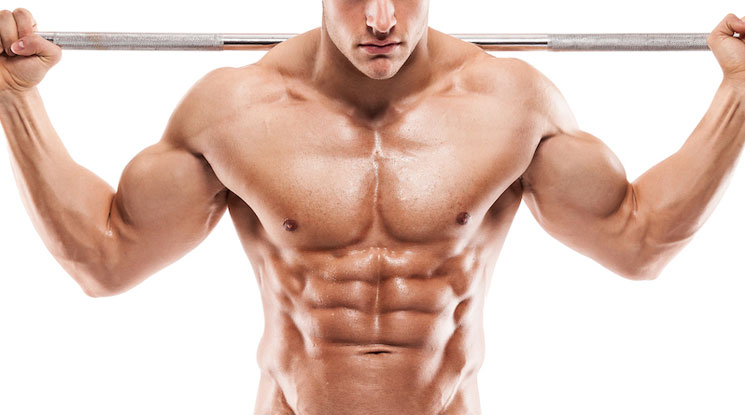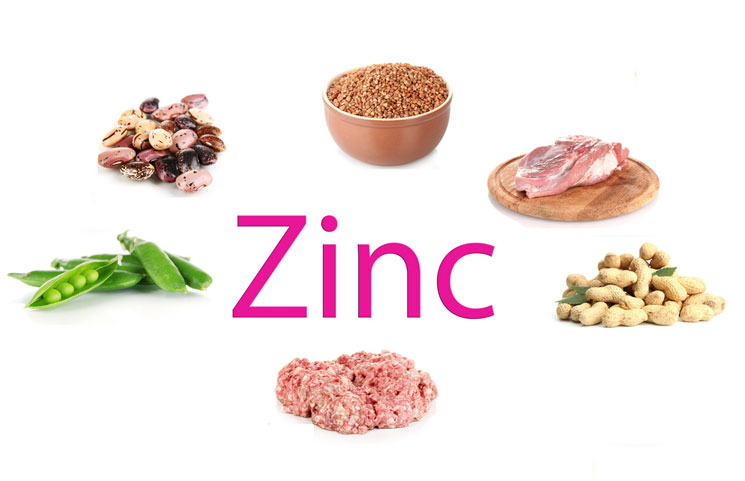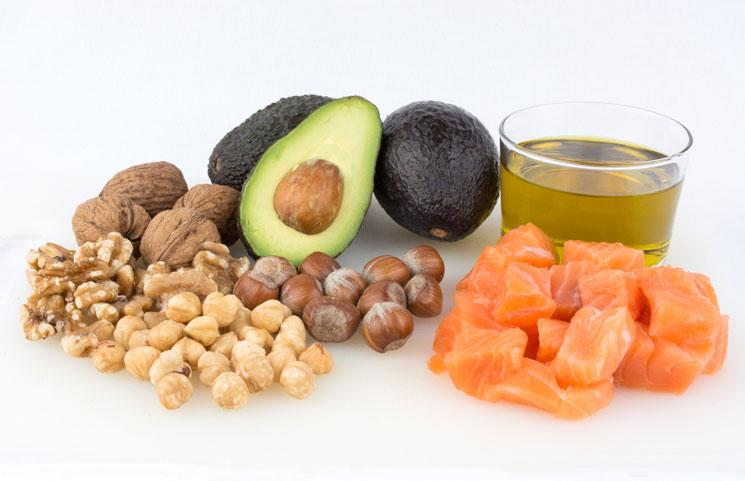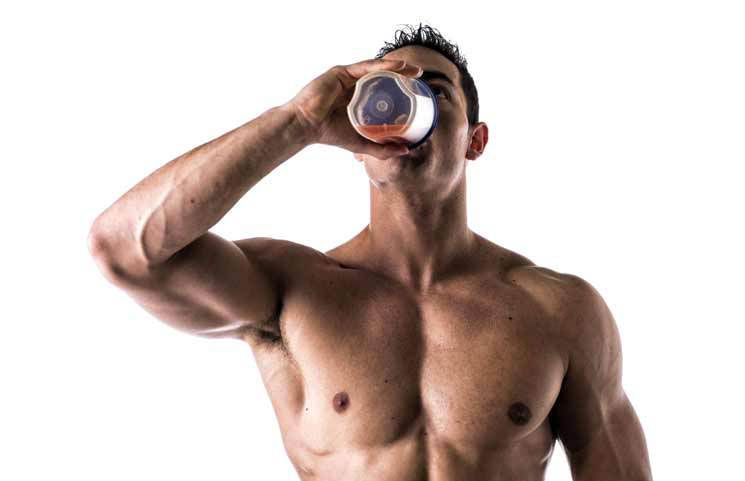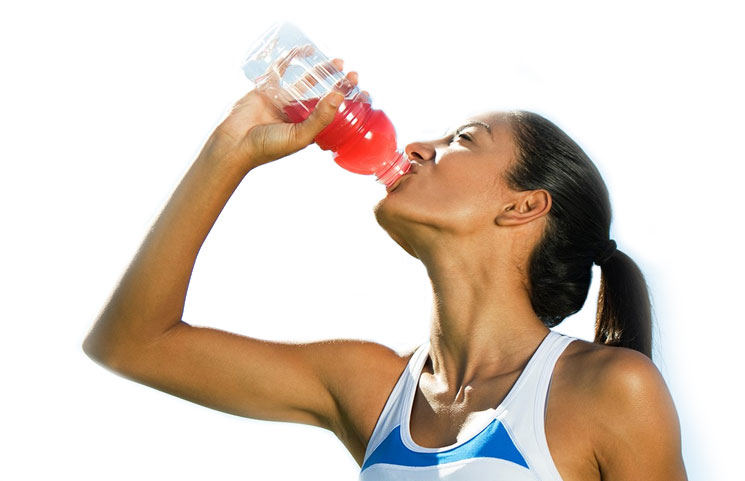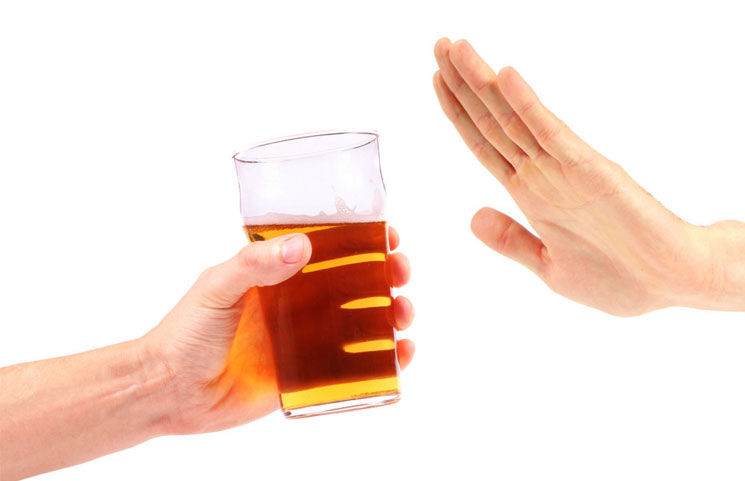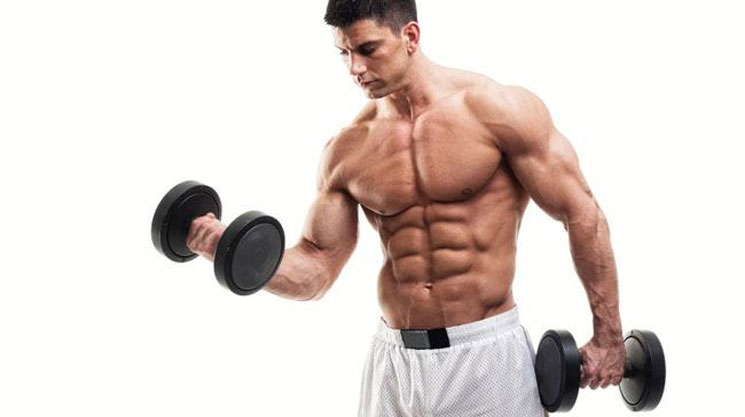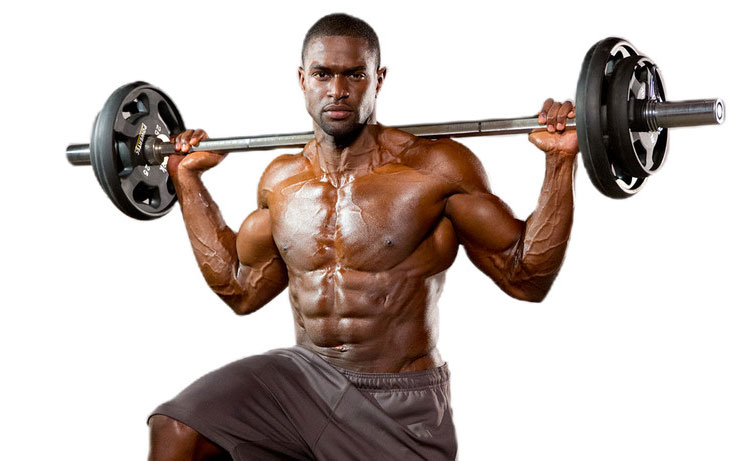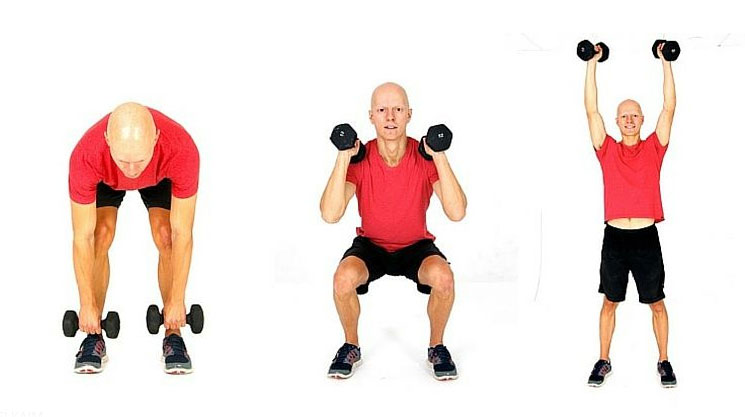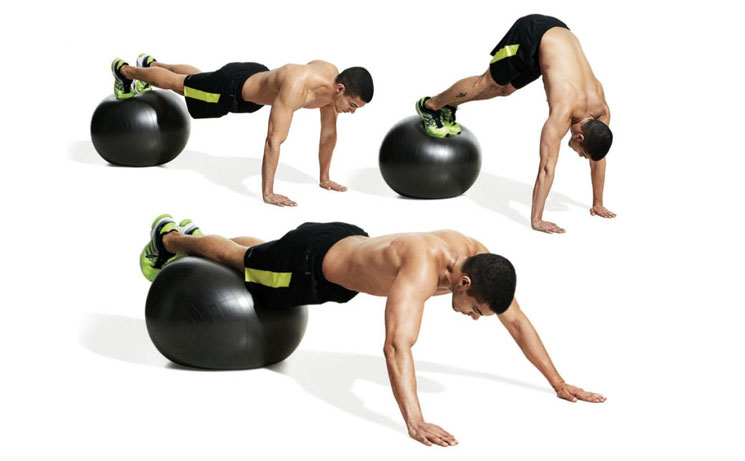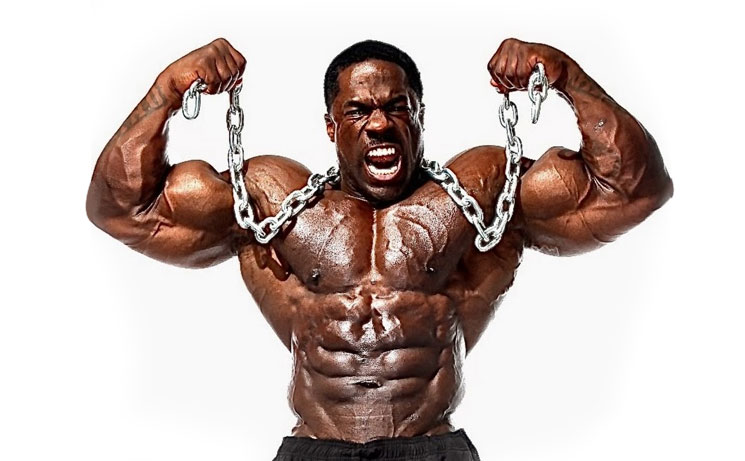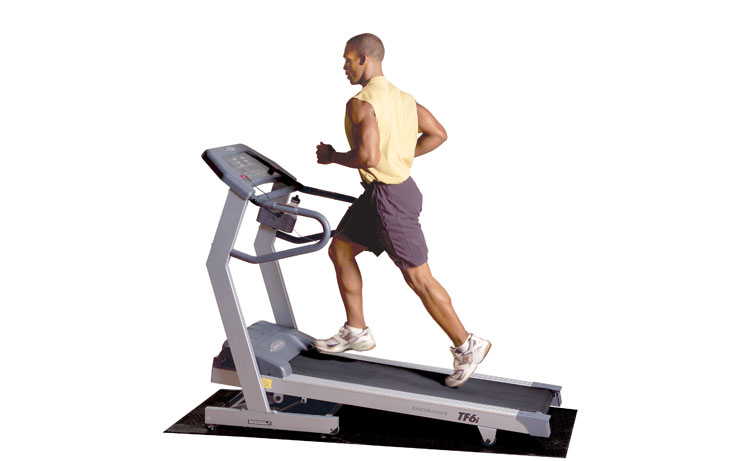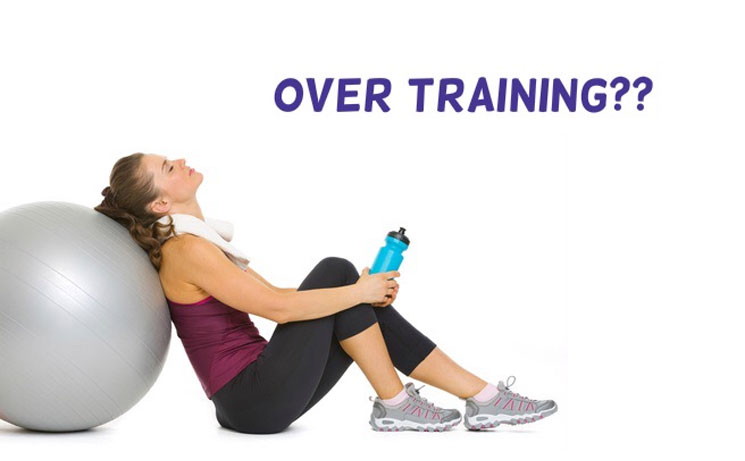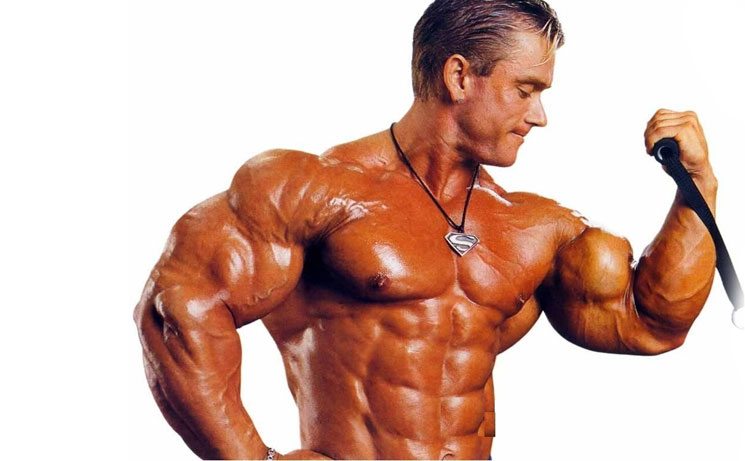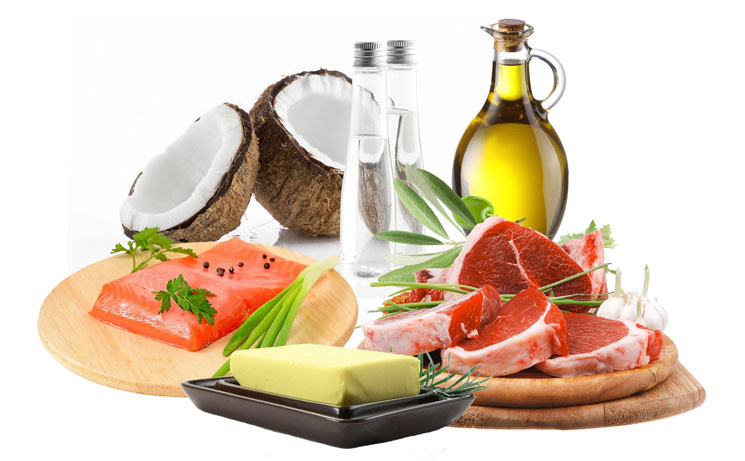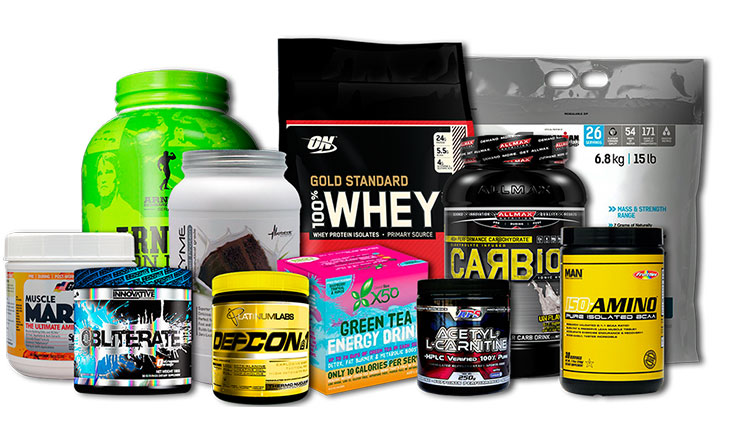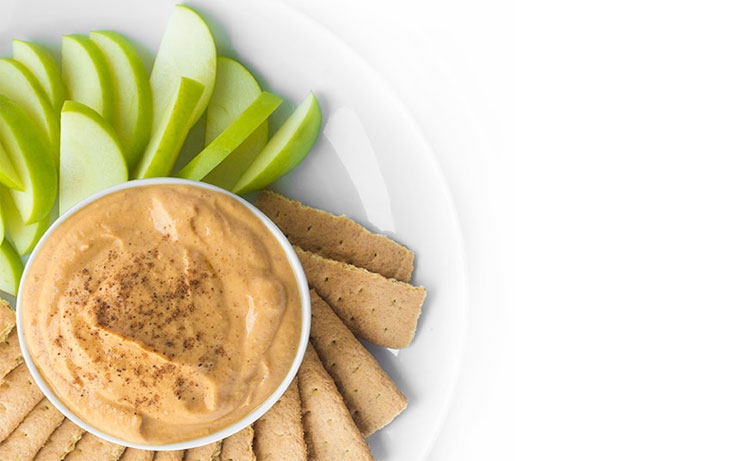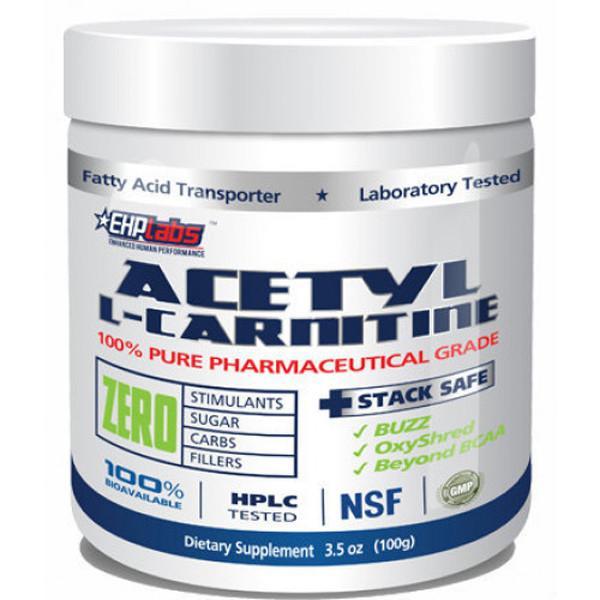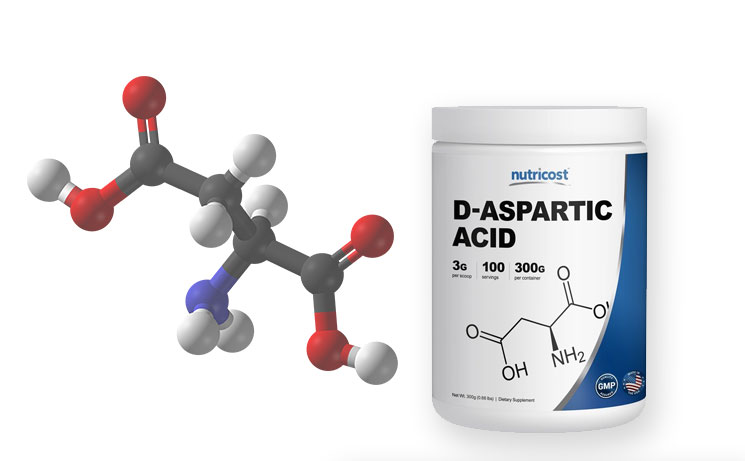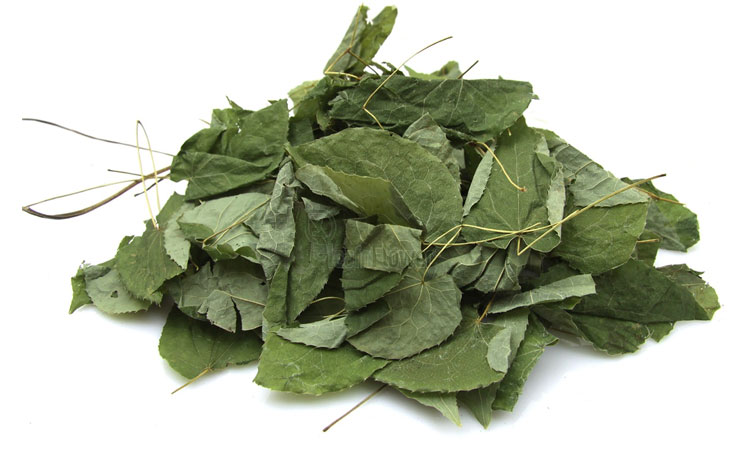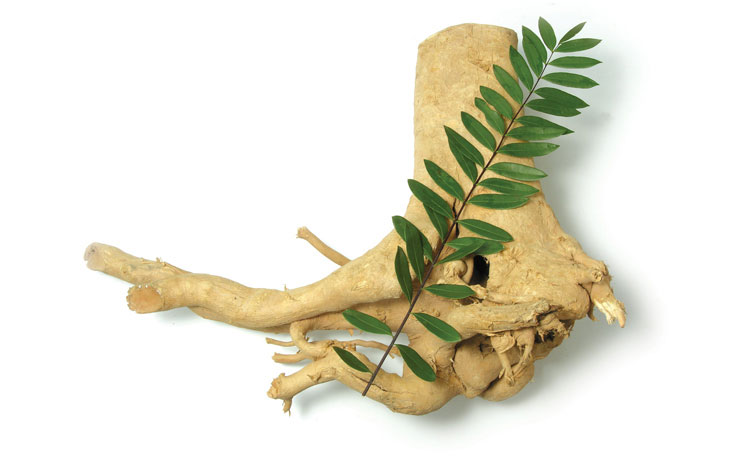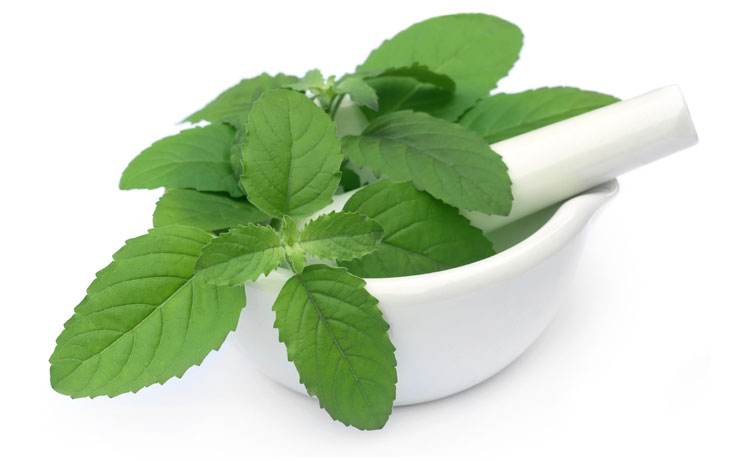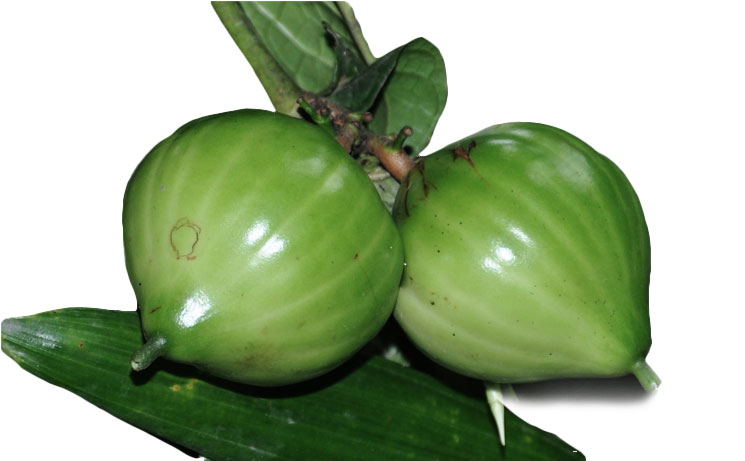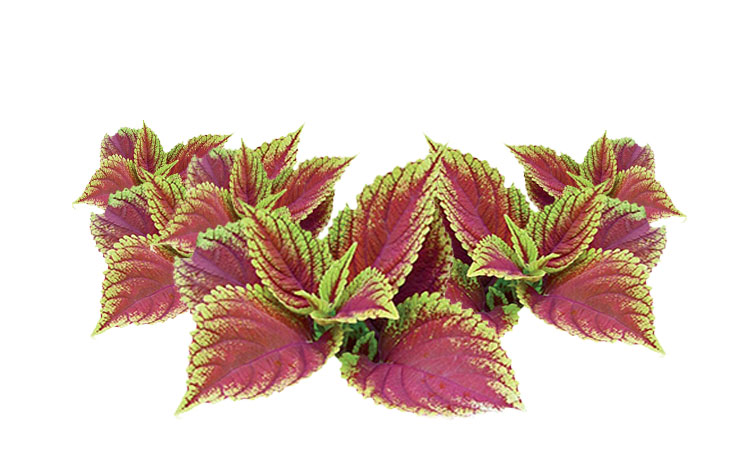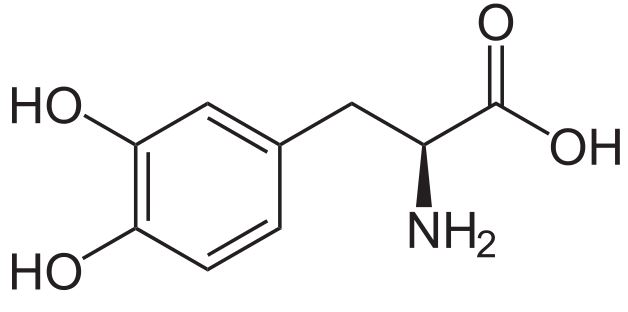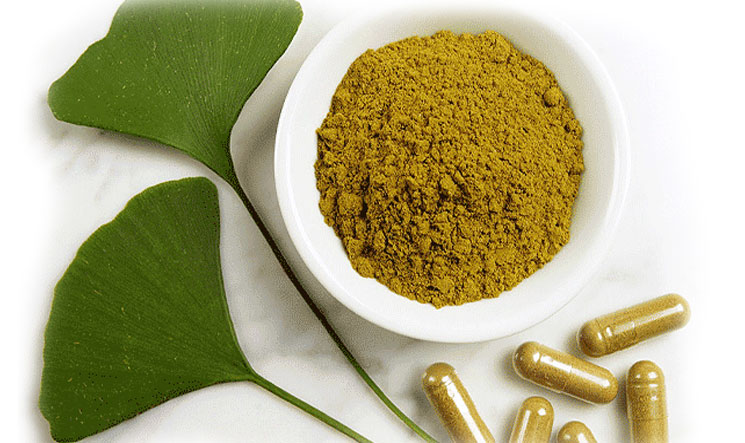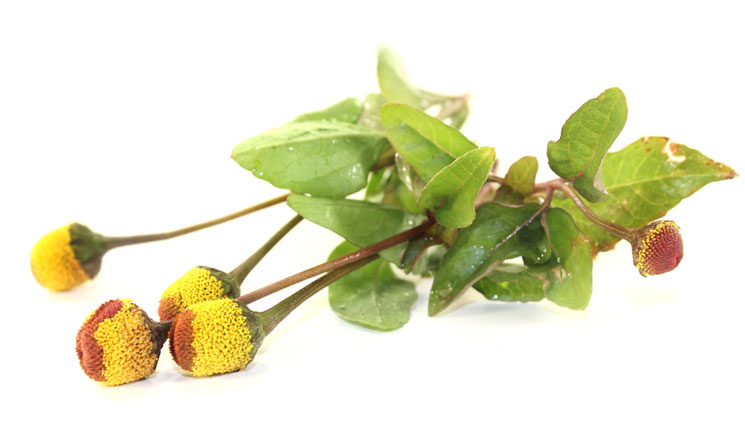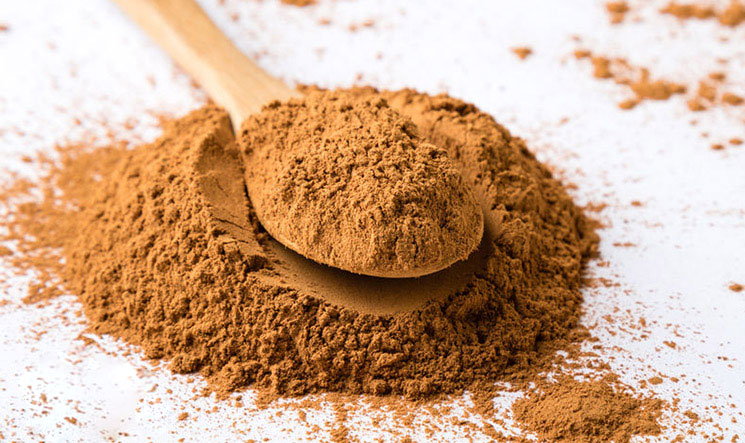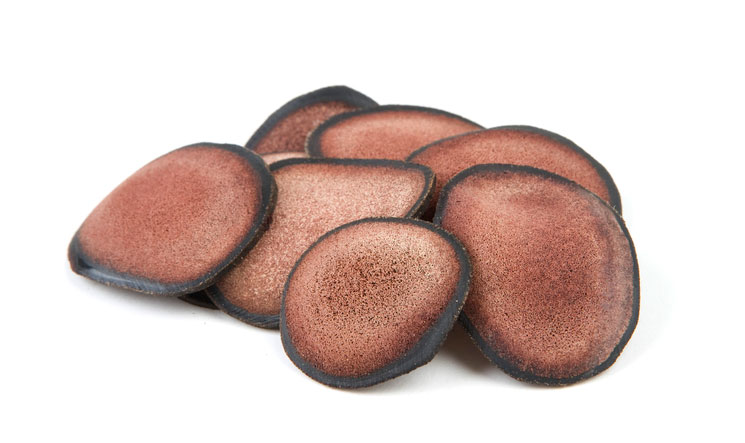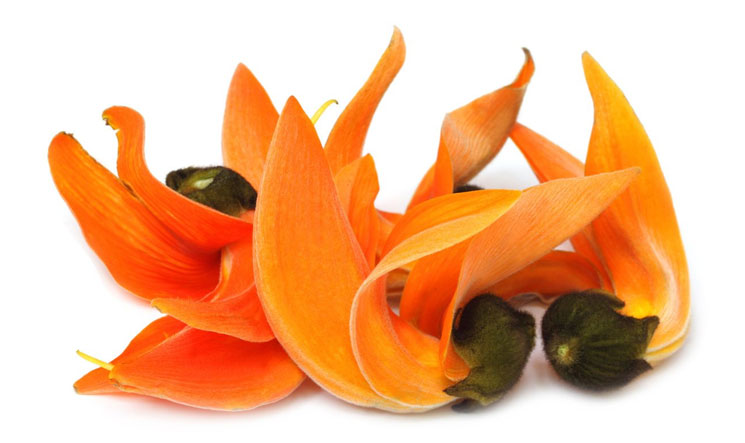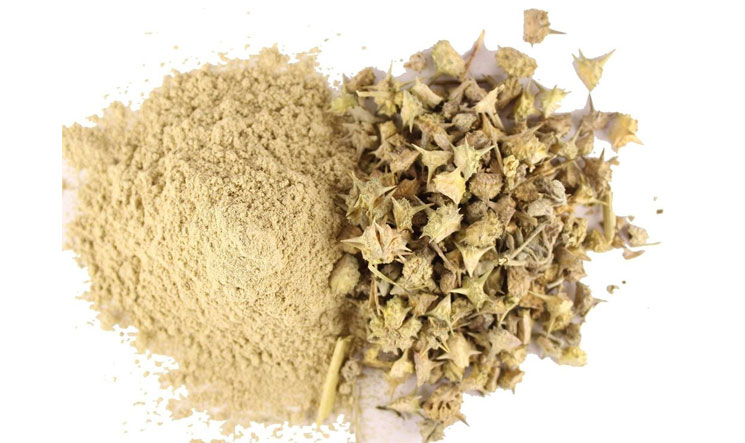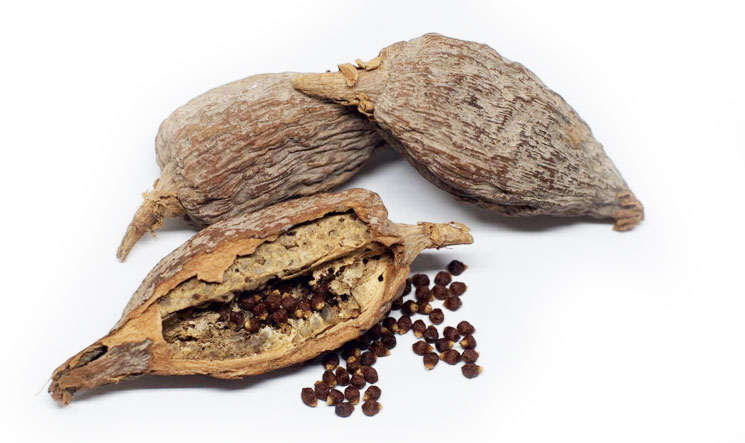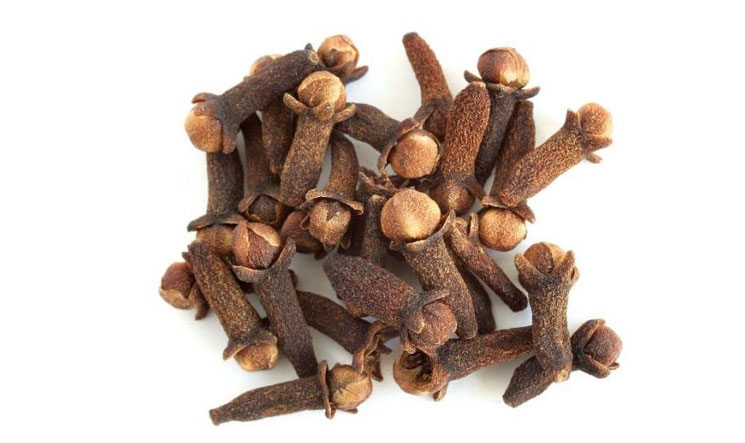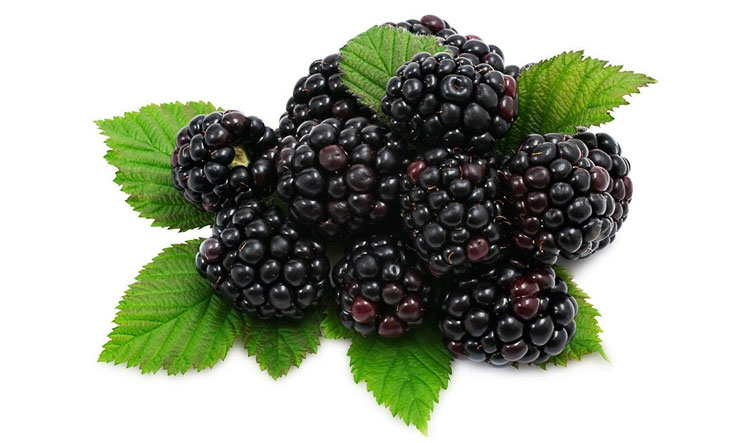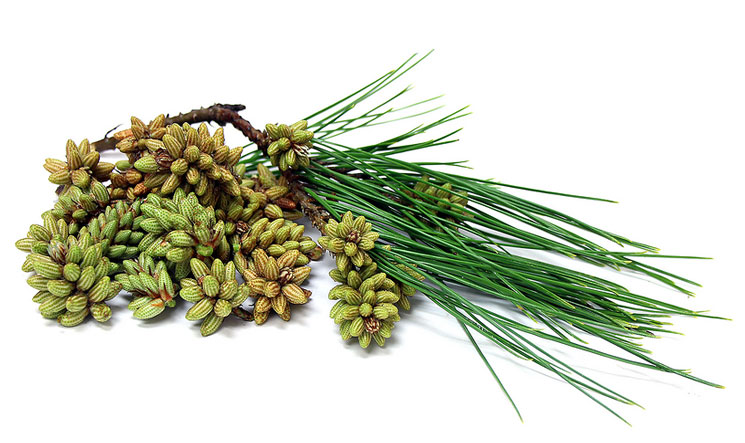The master male hormone testosterone (androgenic steroid) is the most publicized and responsible factor when it comes to men's sexual characteristics is usually at the central focus of overall manliness and healthy muscle building supplements.
Our review on boosting testosterone and nitric oxide levels will be three fold:
- a practical guide for naturally producing & optimizing more of your manhood
- how to avoid free trial muscle building supplement scams & sample offers
- how to stop sabotaging hormone levels by having health habits and protocols (ie training, nutrition, lifestyle and supplementation)
Together, these three core elements should provide you with one of the best testosterone boosting guides you can find online that not only goes in-depth about the health benefits and side effects, but shows you what to avoid when picking and selecting the right product for you. We all know Low T for men is a thing, and here is a straightforward guide on how to go about winning the testosterone producing, enhancing and boosting battle.
What Is Testosterone?
From womb to tomb, it is clear that testosterone is thee hormone that makes a man a man. So as a man, it becomes increasingly important to understand how to supply and supplement our aging bodies with enough of it to stay optimal and healthy to age gracefully.
 Being a man's principle sex hormone (women's is estrogen), we need to learn how to activate our brain's hypothalamus to secrete bursts of GnRH (gonadotropin releasing hormones) which stimulates gonadotrophins' luteinizing hormone (LH) and follicle stimulating hormone (FSH), which are collectively called gondadrophins throughout our bodies for increased testosterone levels.
Being a man's principle sex hormone (women's is estrogen), we need to learn how to activate our brain's hypothalamus to secrete bursts of GnRH (gonadotropin releasing hormones) which stimulates gonadotrophins' luteinizing hormone (LH) and follicle stimulating hormone (FSH), which are collectively called gondadrophins throughout our bodies for increased testosterone levels.
These LH & FSH gonadtrophins will literally travel from the brain down the spine into the testicles which stimulates sperm production and leydig cells to produce testosterone from the popular precursor cholesterol. From there, free testosterone travels the bloodstream and targets androgen receptors which is where all of the benefits of testosterone start to add up and become of immense value in the body.
Our objective is to analyze each of these popular health benefits associated with having plenty of testosterone present within our body:
- better ability to build lean muscle mass
- accelerated rate of fat loss via lipolysis
- enhanced energy, motivation and confidence
- easier erections and more libido for sexual performance
- stronger desire for power, dominance and success
- improved bones and cardiovascular health
- faster facial and thicker body hair growth
- helps prevent and alleviate prostate problems
So if testosterone is the star of the show for men's health and fitness, let's first discuss if it is possible and then give ways to naturally increase testosterone production and how to avoid free trial muscle growth supplements. We know there are many available solutions for Low like testosterone therapy, pills, injections and creams – but let's cover them all one by one.
Can You Naturally Boost Testosterone Levels?
As part of our two part guide on buying testosterone boosters and building testosterone naturally, we are going to first cover 9 different ways to get your body to start producing more healthy testosterone hormone.
When most individuals think of the word ‘testosterone’, they generally think of it as being the ultimate essence of manhood. However, these individuals fail to take into consideration the fact that women also have testosterone, too, and some people cannot even accurately define what it is. In its most basic form, testosterone is nothing more than a hormone that is generally produced by a male’s testicles.

Testosterone is an important hormone in the male body, as it is primarily responsible for influencing males’ sexuality and reproductive functions and is known as the man maker. Additionally, it also substantially impacts the average male’s hair growth and ability to acquire muscle mass.
While these are the most well known bodily functions that are influenced by testosterone, it is important to also note those bodily functions that don’t appear to be as ‘exciting’ or ‘flashy’, such as bone density, red blood cell count, and the body’s overall well being.
Once a male reaches the age of 30, his testosterone levels gradually start to decrease and continually decline throughout the remainder of his life.
One of the main reasons why this occurs is because many chemicals that are found in things such as prescription drugs serve to decrease testosterone production in men. Additionally, there are a multitude of compounds in food, water, and other items that we consume that increase the body’s production of estrogen, which serves to further decrease the average male’s production of testosterone.
What Can You Do if Your Testosterone Production Starts to Decrease?
There are a few ways that a male can infer that his testosterone levels are dropping. For instance, if he starts to suffer from a decreased sex drive, erection related issues, depression, or he is unable to focus and remain concentrated like he normally can, this male may not be producing as much testosterone as normal. In order to verify this, you can choose to have your testosterone levels tested by a professional doctor. Because blood tests are not as accurate as possible in regards to testosterone, there is a chance that you will need to go through a different type of test as well.
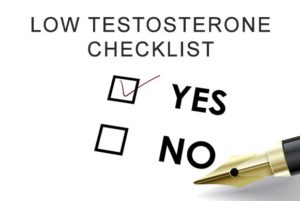 If your testosterone levels are tested and it is found that they are lower than they normally should be, you have various options that you can choose from. There are many safe products that are currently sold in today’s market, and each of them have been tested in order to make sure that they’re up to current health and safety standards.
If your testosterone levels are tested and it is found that they are lower than they normally should be, you have various options that you can choose from. There are many safe products that are currently sold in today’s market, and each of them have been tested in order to make sure that they’re up to current health and safety standards.
However, before you decide to give pills or drugs a try, I strongly recommend that you look at some of the natural and holistic methods that can be used in order to boost testosterone production. They’ve been known to work for all kinds of people, most of them are incredibly affordable, and almost all of them have virtually no negative side effects.
Sound’s great, right?
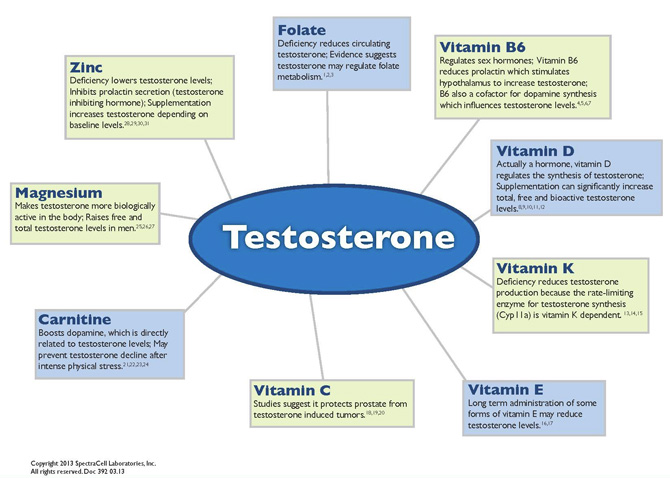
9 Natural Ways To Produce More Testosterone:
9 Different Natural Ways That You Can Get Your Body to Start Naturally Producing More Testosterone
1) Shed Your Excess Weight.
According to several scientific studies, being overweight can severely inhibit testosterone production in men. However, losing weight can help to make these numbers rise, so this is a great strategy to try out.
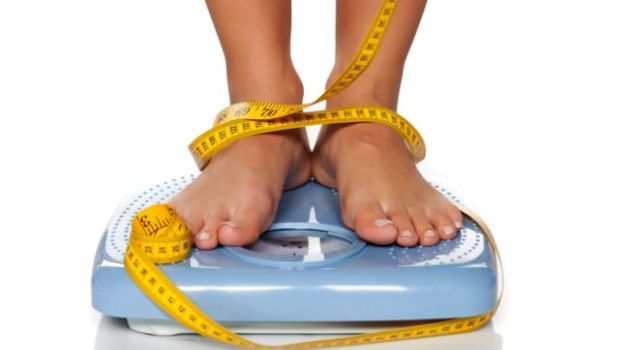 It is important to note, though, that if you are genuinely serious about losing all of your extra weight, your first step should always be to cut out sugars and fructose syrup as much as possible from your diet. These two compounds are largely responsible for the obesity epidemic as a whole, and it is almost impossible to lose weight without first cutting back on them. Try to avoid things like soda, artificially flavored juice, and obvious snacks that are unhealthy, such as candy and other assorted junk foods.
It is important to note, though, that if you are genuinely serious about losing all of your extra weight, your first step should always be to cut out sugars and fructose syrup as much as possible from your diet. These two compounds are largely responsible for the obesity epidemic as a whole, and it is almost impossible to lose weight without first cutting back on them. Try to avoid things like soda, artificially flavored juice, and obvious snacks that are unhealthy, such as candy and other assorted junk foods.
It should be your goal to keep your fructose consumption to less than 25 grams a day, even counting fruits. While this may seem difficult at first, it will be worth it in the end. If you also suffer from diabetes, a heart related disease, or cholesterol, you most definitely need to try extra hard to stick to this number.
Similarly, try to avoid consuming milk and grains as much as possible. While they may seem harmless, milk contains large amounts of lactose, which has been scientifically proven to increase insulin resistance and thus make it easier to retain weight. Naturally, no one wants this to unnecessarily occur.
Processed grains and carbohydrates are also food items that you should do your best to avoid. Pretzels, waffles, bagels, and similar snacks may taste good, but they all wind up breaking down into unhealthy sugars that you do not want in your body.
When you cut these food items from your diet, you need to make sure that you are properly replacing them with healthy foods that will give you enough energy. Vegetables and low sugar fruits are great options, and you need to make sure that you eat enough of them. If you are used to a diet that consists of a lot of grains, you will need a lot of vegetables to make up for this new transition.
2) Partake in High Intensity Fitness Exercises
It has been shown that high intensity fitness exercises help to substantially boost testosterone production.
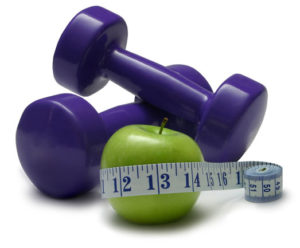 Long exercises, which are generally referred to as aerobic exercises, unfortunately do not have the same effects. In fact, scientists believe that they do not affect testosterone production at all.
Long exercises, which are generally referred to as aerobic exercises, unfortunately do not have the same effects. In fact, scientists believe that they do not affect testosterone production at all.
Another trick that you can try is to have a whey protein meal after your workout. Doing so has been scientifically proven to help increase testosterone production, as hunger hormones are responsible for causing the opposite to happen.
In order to have the most successful workout as possible, here is what you should be doing before, during, and after:
- Spend At Least 3 Minutes Before Your Workout Stretching And Warming Up
- Spend The Next 30 Seconds Exercising As Fast And Hard As Is Physically Possible. Once You Are Done Doing This, You Should Feel Completely Exhausted And As If You Cannot Go On Any Longer.
- Spend The Next 90 Seconds Cooling Down. Try To Continue At A Moderate Pace, But Make Sure That You Recover Properly.
- Go Back And Forth Between The Last Two Steps Seven More Times. This Will Become More Difficult To Do The Further That The Workout Progresses, But It Is Important That You Try To Finish The Workout To The Best Of Your Ability.
This workout is super short and when executed properly, should only take about 20 minutes of your day. When was the last time that you found a workout that only lasted 20 minutes? Plus, there are only about four solid minutes in this workout that require you to be exercising at your full capacity. Other than that, you are just letting your body cool down, warming your body back up, or are resting.
Another great thing about this workout is that you can do any type of exercise that you like with it. Whether it’s running, riding your bike, swimming, or using the elliptical, it will all work with this exercise plan. Just make sure that you are being as safe as possible and that you are properly warmed up before you start exercising at your full capacity. The last thing you want is to become severely injured.
3) Make Sure That You Are Consuming Your Body’s Daily Zinc Requirement
Not many people are aware of this, but the compound zinc has been scientifically proven to help boost testosterone production. Conversely, it has also been found that if the male body is deficient in zinc, testosterone production will be severely limited. Thus, making sure that you have high enough levels of this compound is essential. In fact, increasing your zinc production can even help to protect your body from other actions that would otherwise limit zinc production.
 Zinc deficiency is a very common issue in adults over the age of 60, and studies have shown that 45 percent of these individuals do not consume enough zinc as they should. Even 20-25 percent of individuals who take zinc supplements still do not have enough of this compound in their body.
Zinc deficiency is a very common issue in adults over the age of 60, and studies have shown that 45 percent of these individuals do not consume enough zinc as they should. Even 20-25 percent of individuals who take zinc supplements still do not have enough of this compound in their body.
The best way to make sure that you are getting as much zinc as your body needs is to have a healthy and balanced diet. Foods that are rich in protein are great sources of zinc, and items such as meat and fish are fantastic options. Even raw milk, beans, and cheese are fantastic sources of zinc. Vegetarians are oftentimes the individuals that have the most trouble obtaining their daily-required zinc levels, as vegetables are generally farmed in ways that counteract their health benefits. Pesticides and fertilizers are by no means beneficial for the body, and they can also severely limit the nutrients and vitamins that are found in vegetables and fruits.
Additionally, the way that individuals prepare and cook certain foods can also further deplete the nutrient levels in them. Many people are not aware that they are guilty of this, and they fail to take it into consideration.
Before you decide to take a zinc supplement, first try to increase your zinc levels by modifying your diet appropriately. However, if you find that this is too much effort or is not working as successfully as you would like it to, try taking some zinc pills. But, make sure that you are not consuming more than 40 milligrams a day, as you do not want to wind up taking too much. Not only is doing so unhealthy, but it can also cause other side effects, such as nausea.
4) Try Some Strength Training Exercises
High intensity exercise plans are not the only type of workout that can help boost your testosterone production. Strength training is another great option that many individuals tend to not know about.
In order to complete your strength training exercises as successfully as possible, make sure that you are doing exercises that involve few reps and high volumes of weight. Additionally, try to also do exercises that involve utilizing multiple muscles at a time.
Slowing down your workout is also a great way to make your exercises as effective as possible. Doing so makes your workout a high intensity exercise and does wonders at the microscopic level.
5) Make Sure That You Are Consuming Enough Vitamin D
Vitamin D is an absolutely pivotal compound for multiple reasons. It helps to improve the quality of semen and keep sperm count up, while simultaneously ensuring that the body produces enough testosterone. Multiple studies have helped to prove this, and increasing vitamin D consumption has now become a popular tactic for increasing testosterone levels.
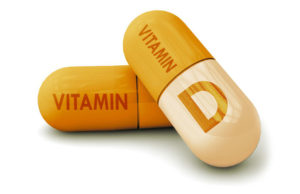 A scarily large number of people in the United States suffer from Vitamin D deficiency. This is partly due to the fact that these individuals are not in the sun often enough, and that our food products do not contain enough of this vitamin.
A scarily large number of people in the United States suffer from Vitamin D deficiency. This is partly due to the fact that these individuals are not in the sun often enough, and that our food products do not contain enough of this vitamin.
The best way to make sure that you are getting enough vitamin D as possible is to spend a little bit more time in the sun. Naturally, you will want to make sure that you are wearing sunscreen and protecting yourself from skin cancer. If you do not have access to consistent sun exposure, but you do have access to a safe tanning bed, this is also a great option that you should take advantage of.
6) Work on Reducing Your Stress Levels
When the human body becomes stressed, it starts to release a compound known as cortisol. This compound, which is actually a hormone, has been scientifically proven to prevent the production of testosterone.
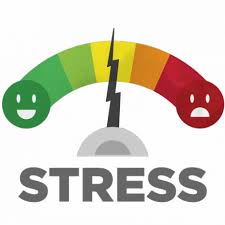 Thus, if you are one of the many individuals that suffer from long-term stress, your testosterone production runs the risk of being stifled for the long run, which is something that no male wants to have happen.
Thus, if you are one of the many individuals that suffer from long-term stress, your testosterone production runs the risk of being stifled for the long run, which is something that no male wants to have happen.
If you do struggle with stress, it is strongly recommended that you try some exercises or techniques in order to help you relax. Meditation is a great option that too few individuals take advantage of, and there are many other techniques that can be used as well. Just by doing a little bit of research, you will be able to almost immediately find a handful of options that you can give a try.
7) Start to Limit the Amount of Sugar That You Consume
Sugar consumption can severely limit testosterone production in the male body. This is mainly due to the fact that sugar consumption directly leads to the production of insulin, which is also a compound that has been scientifically proven to stifle testosterone production.
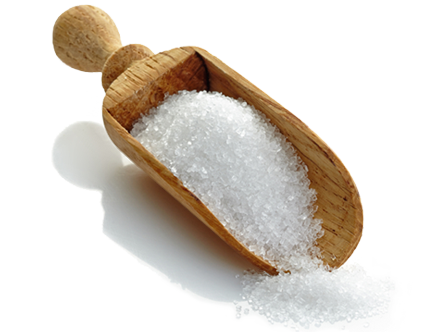 The average human consumes over two tons of sugar in his or her lifetime. This statistic is both terrifying and concerning.
The average human consumes over two tons of sugar in his or her lifetime. This statistic is both terrifying and concerning.
Although sugar tastes good and makes us happy, it is not good for the body in the long run. The short-term pleasure that we receive from it by no means makes up for the negative effects that it has on the body.
By cutting back on your sugar consumption, you will be providing your body with a seemingly endless slew of health benefits that is not limited to an increase in testosterone production.
Although it may be difficult to cut back on your sugar consumption at first, I promise that it will be worth it in the end. You will be so much healthier and noticeable results will start to happen almost immediately.
8) Not All Fats Are Bad – Consume the Healthy Ones
Mon and poly-unsaturated fats are surprisingly good for the body, and should thus be consumed periodically. Additionally, some saturated fats are also necessary, and have been directly linked to an increase in testosterone production.
We are constantly told that all fats are bad and that we should never consume any of them, but this isn’t true. In order to boost testosterone production, you must get rid of this mindset and instead accept that you will need to eat certain fats in order to be truly healthy.
9) Start Eating More Branch Chain Amino Acids (BCAAs)
It has been found that if you mix the consumption of BCAAs with high intensity strength training, the body’s testosterone production will substantially increase.
Leucine, for instance, is a great BCAA that is most commonly found in dairy products. Consuming leucine through foods is best, as doing so has barely any side effects and is incredibly healthy for the body.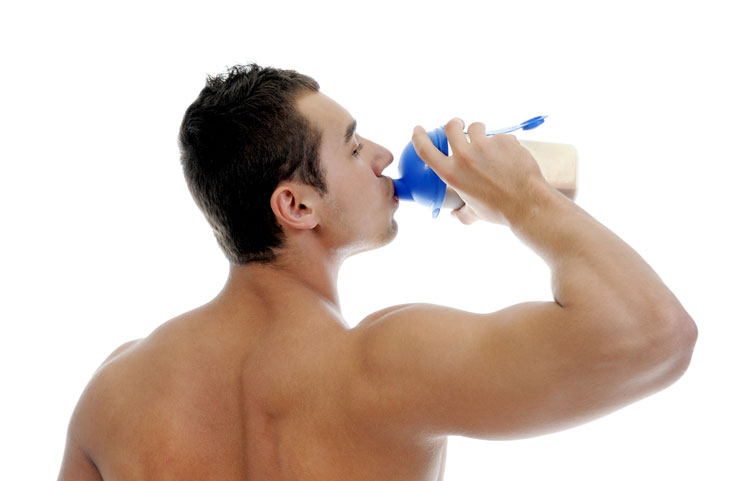
Now, let's continue on to part 2 of our testosterone booster guide, how to avoid testosterone free trial scams and cheap muscle supplement sample offers.
Your Ultimate Guide to Avoiding Scams When Buying Testosterone Boosters, Nitric Oxide Supplements, and Muscle Builders Online
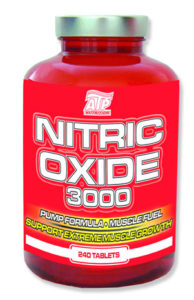 If you’ve ever shopped for testosterone boosters online, then you may have been overwhelmed. There are a large number of testosterone boosters that promise to turn you into a monster at the gym.
If you’ve ever shopped for testosterone boosters online, then you may have been overwhelmed. There are a large number of testosterone boosters that promise to turn you into a monster at the gym.
Unfortunately, the online marketplace for testosterone boosters, preworkout supplements, and muscle builders is a minefield of scams. Every day, people fall victim to these scams, paying hundreds of dollars for shoddy supplements backed by little scientific evidence.
Some of these supplements will just max out your credit card. Others, however, will kill you or take years off your life.
Want to avoid scams in the testosterone booster market? Read our ultimate guide to find out more.
Why Men Use Testosterone Boosters
Testosterone is one of the most crucial hormones in the male body. It’s responsible, in some way, for virtually everything that goes on in your body in regards to virility and vitality.
It plays a particularly important role on two bodily functions that are very important for men:
- Sexual Performance
- Athletic Performance
 Testosterone has been known to increase athletic and sexual performance just like popular prohormones have. That’s two of the reasons why men take testosterone steroids and other testosterone boosters.
Testosterone has been known to increase athletic and sexual performance just like popular prohormones have. That’s two of the reasons why men take testosterone steroids and other testosterone boosters.
However, testosterone is also linked to better cognitive ability, better happiness, reduced fat tissue, strong bones, increased energy, more human growth hormone and all sorts of other desirable bonuses.
Here’s the problem: men lose testosterone as they age. Your body’s production of testosterone steadily decreases after around age 30.
That’s why your muscle mass declines with age. Your risk of erectile dysfunction increases. Your virility and desire to have sex goes down.
These are all serious problems that affect your quality of life. That’s why so many men use testosterone boosters.
 Testosterone Booster Supplements Are Popular Because Steroids Are Illegal
Testosterone Booster Supplements Are Popular Because Steroids Are Illegal
The best way to increase testosterone is to use anabolic steroids. This is a proven way to immediately raise testosterone levels and enjoy all of the benefits listed above.
Unfortunately, anabolic steroids come with awful side effects – especially when you’re not careful (or avoid a proper post-cycle therapy).
Not only do you have to stick a needle in your butt every day, but you have to deal with problems like small testicles, man boobs, and other unwanted things.
Anabolic steroids, obviously, are illegal in most countries. Instead of breaking the law, many men turn to the next best option: testosterone boosting nutrition supplements.
Testosterone Booster Supplements Are Not Studied by the FDA
The FDA is responsible for approving all types of consumable products in the United States – like foods and drugs.
Unfortunately, supplements are neither classified as foods nor drugs. When a manufacturer labels their product as a “nutritional supplement”, that manufacturer is free to make all sorts of crazy claims about its effectiveness.
These supplements can’t claim to cure diseases. But they can claim to treat symptoms of diseases, help you manage conditions, or provide relief from certain effects.
Worse, these supplements can make these claims without having any actual scientific evidence – like clinical trials or independent research – confirming these claims.
The only real restriction on supplements is that they have to use ingredients that have been recognized as safe and legal by the FDA. Other than that, there’s very little quality control in the supplement industry.
That’s why there are so many scams out there.
How Do Testosterone Booster Scams Work?
There are multiple types of testosterone booster scams you’ll encounter online, including autoship free trial scams, no listed ingredients or dosage scams, ineffective supplement scams, and nitric oxide testosterone booster scams.
Autoship Free Trial Scams
These scams are common across all types of nutritional supplements, but they’re particularly common in the diet pill industry and the testosterone booster industry.
 These scams all work in a virtually identical way, although the specific amount of money you lose varies. Here’s the process:
These scams all work in a virtually identical way, although the specific amount of money you lose varies. Here’s the process:
-You visit a testosterone booster’s official website. You see numerous offers to sign up to receive your “free bottle” or “trial bottle” or “free sample”.
-You enter your basic information into that form then proceed to the next page. That next page tells you your trial bottle is free, but you just have to pay a “small shipping fee” today. That fee ranges from $3 to $7. You need to enter a valid credit card to pay that fee.
-You fill out your credit card information then check a box confirming that you have read the terms and conditions. You confirm your payment information, and your trial bottle will be shipped to your listed address.
-Supplements typically arrive within 3 to 5 business days. Once your trial bottle arrives, you’ll notice that it’s a full-sized one-month supply of the supplement – not some tiny sample bottle.
-14 days after you initially ordered your trial, you’ll see a charge for between $70 and $120 appear on your credit card. That charge is for the “free trial bottle” you already received.
-Then, 30 calendar days after you ordered the trial, your credit card will be charged $70 and $120 (plus shipping) again, and you’ll receive a second bottle in the mail.
This is called an “autoship scam”. You’re automatically shipped new orders of supplements you didn’t specifically order. Meanwhile, the company will continue charging your credit card every month for the rest of your life (or until you cancel).
How can they do this? Well, you checked a box saying you have read the terms and conditions. Those terms and conditions very carefully outline all of the information I just mentioned. Sometimes, companies will put this in fine print at the bottom of the ordering page. All companies that pull off this scam deliberately hide this information while still protecting themselves legally.
The only way to avoid these scams is to return your supplement within the 14 day “trial” period. Companies make this deliberately difficult. You might not receive your supplement until day 7 or 8 of that trial period. You also won’t receive a refund on shipping costs and you’ll have to pay your own return shipping – but it’s better than being charged $120 per month.
There are very few legitimate free trials available online for testosterone boosters. Remember, if something is too good to be true on the internet, then it probably is.
No Listed Ingredients or Dosages Scams
Some testosterone boosters sold online will make enormous promises about their benefits. They’ll claim to skyrocket your testosterone by 250%, make you an animal in the bedroom, and double the length of your penis. They’ll say anything about their positive benefits – and then refuse to tell you anything about the actual ingredients or methods of action.
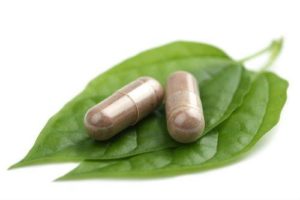 We see plenty of testosterone boosters sold online that either don’t list their ingredients or dosages.
We see plenty of testosterone boosters sold online that either don’t list their ingredients or dosages.
In almost all cases, these are scams: the company may have a supplement with a decent list of ingredients. However, the dosages are so weak that they’re unlikely to have any effect on your body. The company, meanwhile, charges the same price as higher-powered testosterone supplements – which is why it’s a scam.
One of the sneakiest ways companies do this is through a proprietary formula. When they list a proprietary formula on their ingredients label, they only have to tell you the total dosage of that formula – they don’t have to break down the dosage of each individual ingredient. Some companies (even larger supplement companies) will use this to hide weak dosages.
Ultimately, if you can’t find dosage or ingredient information for a supplement, or if it hides 90% of its ingredients behind proprietary formulas, then it’s probably a scam.
The Ineffective Supplement Scam
Most testosterone boosters sold online fall under this scam. The problem with testosterone boosters is that very few natural ingredients have been shown to reliably increase testosterone levels.
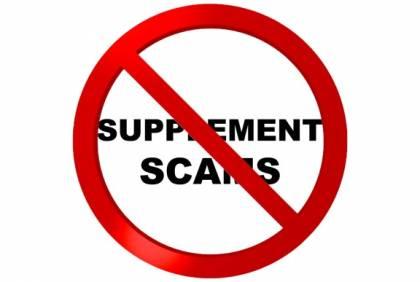 If there was one fruit, root, leaf, or extract that could increase testosterone safely, then you would have heard about it by now.
If there was one fruit, root, leaf, or extract that could increase testosterone safely, then you would have heard about it by now.
Ingredients like maca root and tribulus terrestris have shown they can increase testosterone in some studies – while other studies have indicated no actual benefits. There haven’t been many widespread human trials on any of the common ingredients found in testosterone boosters.
The best way to spot these scams is to look for scientific trials and clinical evidence. If the manufacturer has invested in clinical trials, then that’s good. Ideally, you want a double-blind placebo-controlled trial with lots of participants. That’s the golden standard of testing.
If a supplement maker can’t produce clinical trials, or if they don’t cite any research studies, then it’s not likely very effective. You don’t want to be a guinea pig for a supplement company.
The Nitric Oxide Testosterone Booster Scam
This is one of the trickiest scams in the test booster industry. Many people take nitric oxide (NO) supplements as a preworkout. NO widens the blood vessels, making it easier to get a better pump while also extending your endurance.
There’s nothing wrong with taking NO supplements as a preworkout. Popular (and effective) NO supplements typically use amino acids like L-Arginine to widen your blood vessels.
So how does this relate to test boosters?
Well, many testosterone boosters will use the same ingredients found in NO supplements. These ingredients widen the blood vessels, tricking you into thinking that you have higher testosterone levels.
When your blood vessels are wider, you feel stronger. It’s easier to get an erection. Your penis feels a little bigger. You can last longer at the gym. You get all sorts of powerful benefits. You feel like “more of a man”.
Since you’re taking a supplement labeled as a test booster, you think these benefits occur because you have higher testosterone levels. However, it’s really just because you took a supplement that widened your blood vessels.
4 Ingredients That Are Scientifically Proven to Raise Testosterone Levels
So the big question is this: if most testosterone booster ingredients are scams, then which ingredients actually work to raise testosterone levels?
Out of all the dozens of ingredients found in nutritional supplements, there are really only 4 ingredients that have actually been proven to raise testosterone levels. However, even with the four ingredients below, certain studies have shown they have no effects on testosterone – so they’re far from sure things.
Those 4 ingredients include all of the following:
D-Aspartic Acid
D-Aspartic Acid, or DAA, is a naturally-occurring amino acid found in cells within your testicles. A number of studies have reinforced the testosterone boosting benefits of DAA.
One study in Italy, for example, found that subjects who consumed about 3 grams of DAA for 12 days experienced a 42% increase in testosterone levels. Researchers also found that the D-AA group still had 22% more testosterone than a placebo group – even 3 days after they stopped taking D-AA!
Unfortunately, another study found that there was no increase in testosterone among resistance-trained individuals even after taking the supplement for 28 days.
Ultimately, the idea with D-AA is that it works particularly well on older men whose testosterone levels have naturally declined over the years. Meanwhile, those who are already working out and eating right may not experience the same effects.
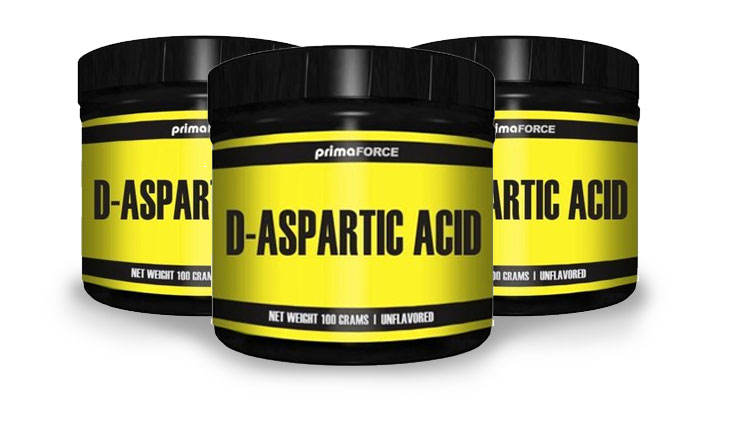 Tribulus Terrestris
Tribulus Terrestris
Tribulus terrestris, or TT, is an herbal extract that may raise levels of luteinizing hormone, which in turn tells your body to make more testosterone.
The testosterone boosting benefits of TT aren’t quite certain. Studies are mixed – but there is some evidence.
However, TT has been linked to increased sexual performance and arousal – which are two benefits many people seek from testosterone boosters anyway. These benefits are more certain than the testosterone benefits.
Fenugreek
Fenugreek is a plant grown primarily in India, where it’s traditionally used to prepare curry, pickles, and pastes. However, fenugreek may have mild benefits in terms of testosterone. A study from the University of Mary Hardin-Baylor in Belton, Texas examined the effects of fenugreek supplements on strength and body composition in resistance-trained men. Researchers found that the fenugreek group significantly increased their strength during 8 weeks of supplementation.
Fenugreek, however, hasn’t been repeatedly proven to raise testosterone levels. Some studies have indicated this benefit, but most have not.
 ZMA
ZMA
ZMA actually isn’t one ingredient: it’s three ingredients, including zinc, magnesium, and vitamin B6 (in various forms). ZMA supplements have become very popular among the bodybuilding community. Many companies sell sleep aid supplements with ZMA, for example, because ZMA has been linked to helping achieve better REM sleep.
ZMA has also been linked to increased testosterone levels and better muscular strength.
Bodybuilding.com cites one placebo-controlled study where 27 division II football players received either a placebo or a ZMA supplement for a total of 7 weeks during spring practice. By the end of the 7 week period, the participants taking ZMA had a 30% increase in testosterone (the placebo group had a 10% decrease). The ZMA group also experienced increases in strength.
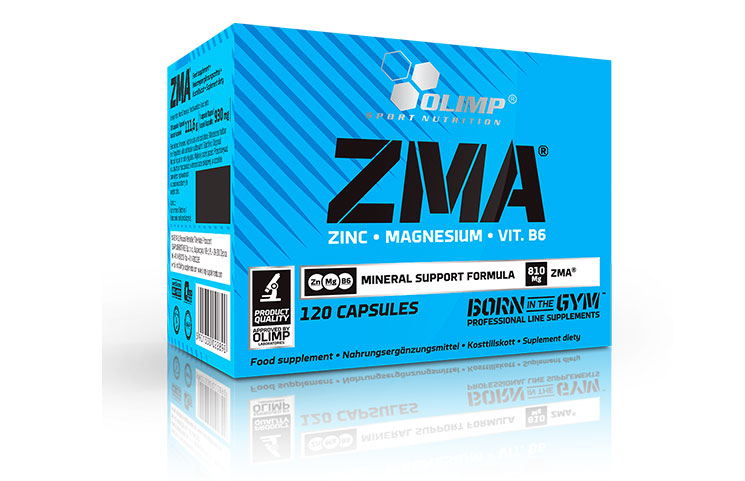 So What’s the Best Way to Increase Testosterone Levels?
So What’s the Best Way to Increase Testosterone Levels?
Ultimately, the best way to increase testosterone levels is to eat right and exercise. Lots of research has shown that weightlifting can naturally build your testosterone levels over time. Meanwhile, certain foods (especially foods rich with iron) are required by your body to actually make testosterone.
There are shortcuts for higher testosterone levels. For example, you can talk to your doctor about testosterone replacement therapy (or other treatment options). You can also just take anabolic steroids – that’s guaranteed to raise testosterone (although it’s illegal and comes with dangerous side effects).
By following the tips listed above, you can avoid testosterone booster scams and enjoy safe supplements with proven efficacy at a reasonable price.
 A Complete Guide to Gaining Muscle Mass
A Complete Guide to Gaining Muscle Mass
Table of Contents
Introduction
The fitness industry in the US is growing at an unprecedented rate, and for good reason. The rise in obesity caused by unhealthy lifestyles and work habits is putting many Americans at the risk of severe cardiovascular diseases and illnesses such as type 2 diabetes and high blood pressure.
The effects of obesity also have drastic consequences at a macro level. Severe illnesses and diseases lead to low productivity and efficiency, leading to many absent and unproductive days at work that cost millions of dollars to the U.S. economy in terms of lost output and efficiency.
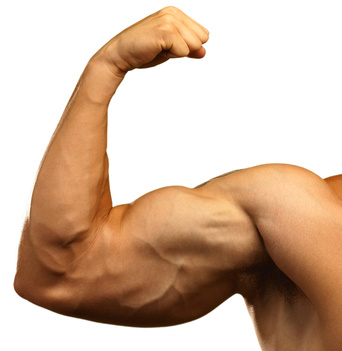 Fortunately, the fitness industry is gaining penetration across greater levels of the American
Fortunately, the fitness industry is gaining penetration across greater levels of the American
society, which, as a result, is pushing many to resort to intense training and exercise to reduce body fat percentage and lower their body’s BMI (Body Mass Index) levels.
Regardless of what workout program you follow, muscle development is at the core of getting rid of excess body fat and helping you get the ripped body image you have long desired. The rise in popular Hollywood culture, especially with actors and actresses achieving a high muscle definition for a particular role, is inspiring many to take on the challenge to achieve a similar feat. Increasingly, gaining muscle is becoming associated with boosting self-confidence and attractiveness.
However, gaining muscle also has a number of health advantages aside from helping you look ripped and healthy, and it is with approach that we explore how you can gain greater muscle tone in your body.
In this eBook, we aim to provide important pointers on how you can achieve greater muscle growth in order to encourage fat loss and allow you to achieve the ripped body you have always wanted to have. Regardless of whether you want to become lean or get muscular, we will cover some of the most important pieces of advice and tips to help you get the results you want!
 Why Is Muscle Development Important?
Why Is Muscle Development Important?
No matter which intense workout program you come across that is designed for losing fat, you will notice that muscle development is at the core of the exercise program. But, the question you should ask is ‘Why?’ What role does muscle development play in your fitness journey?
The answer is quite simple. Muscles are a reflection of your strength, but its benefits are more than just about keeping you physically strong. It also has a range of benefits for your internal biological body, such as acting as a preventative measure against obesity as well as aging.
When there is more muscle on your body, the higher your metabolic rate tends to be. The metabolic rate is the rate at which your body converts the food you consume into energy and thus the higher the rate, the more calories your body naturally burns. You might have noticed how many athletes and trainers are able to eat small portion of unhealthy and/or junk food and still be able to keep their muscle tone in perfect definition.
However, this should not be your goal in the least. The point is that having a greater muscle body will help you have a protective mechanism against piling up unnecessary body fat, which can help you keep your blood sugar and heart levels operating healthily.
Increases Bone Density
In addition to metabolic advantages, high muscle growth is also beneficial for ensuring healthy and strong bones. This is particularly important for those with weak bones experienced in old age or with those who have osteoporosis, particularly women. High bone density cannot simply be achieved as a result of consuming more calcium; it is deeper than that. The supporting muscle tissue fibers also need to be strengthened to allow proper range of motion and flexibility.
Higher muscle tone increases the load of your bone and acts as a protective cover. This can play an important role in preventing osteoporosis and bones from becoming brittle as a result of old age.
Improves Resistance against Diseases and Illnesses
A much more surprising benefit of having more muscles is that it can improve your body’s resistance against diseases and illnesses. Muscles are developed through higher protein intake in your body, which can generate a backup defense mechanism for fighting against harmful body cells due to bacteria or a virus entering your body. The availability of higher protein can ensure that vital and healthy nutrients are effectively supplied to your internal organs without there being a risk of muscle breakdown.
More importantly, it can be beneficial for helping your body restore and recover damaged or tired muscles and organs a lot more quickly. Cancer patients that undergo chemotherapy are able to endure the harsh effects of the treatment if they have more protein levels in their body.
As a result, having higher muscle growth is not just for showing off or to see who can lift heavier weights. Rather, it has a number of important biological benefits to the body that can help you live longer and healthier.
How Does Muscle Gain Lead to Fat Loss?
People often become afraid at the very mention of ‘muscle gain’, thinking their bodies would become akin to those competing in bodybuilding competitions. As a result, they stress on losing body fat to lose weight and become slim and healthy.
However, muscle gain is directly linked to fat loss, which is why some of the most popular body transformation programs, such as Tony Horton’s P90X series, Sagi Kalev’s BodyBeast, or Shaun T’s Insanity program, all emphasize some or a sufficient level of muscle development to eliminate fat count. You can either choose the lean muscle or the big muscle route, either way your weight loss goals can still be achieved.
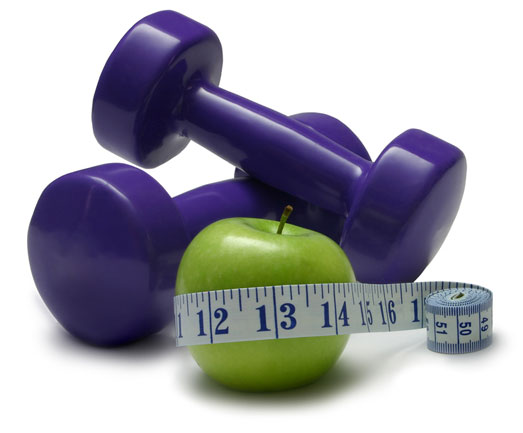 So how does this happen? Well firstly, the human body naturally burns more calories everyday to keep muscle mass compared to that for fats. In other words, the more muscles your body has the more calories it will burn naturally every day.
So how does this happen? Well firstly, the human body naturally burns more calories everyday to keep muscle mass compared to that for fats. In other words, the more muscles your body has the more calories it will burn naturally every day.
Building muscle, therefore, is inextricably linked to substantially boosting your metabolism which turns your body into a blast furnace for shedding excess body fat. This can play an immense role in reducing your body fat percentage drastically.
More importantly, high intensity training involving weights can help you achieve what is known as ‘the afterburn effect’. A study published in the Medicine and Science in Sports and Exercise shows that women who lift a substantial amount of weight for more than 5 reps can burn twice the amount of calories within a two hour period post-workout compared to if they performed higher reps using lower weights.
However, there is a catch. The rate at which your body burns calories through higher metabolic rate is also impacted by your eating and sleeping patterns. Compromise on these, whilst keeping your workout intensity at optimum levels, and you can be sure of not gaining the right results. This is why having proper eating habits and sleeping routine is essential so that you can induce fat loss and build muscle simultaneously.
Therefore, contrary to popular opinion, muscle building does not necessarily amount to gaining heavier muscles. Depending on the diet, types of weights and reps, and the particular exercise program, you can also obtain an athletic body with a high muscle tone. Athletes such as professional Olympic swimmers and basketball or soccer players, for instance, are a great example of this.
In fact, achieving fat loss in this method can help you sustain your high metabolic advantage for a lot longer. Weight lifting or any other kind of resistance training is bound to increase your metabolic rate a lot more in comparison with just doing cardio exercises.
To summarize, you can significantly reduce your body fat percentage through muscle gain. The higher metabolism from lifting higher weights and performing resistance workouts can be really helpful to shred fat so long as your sleep and eating habits are normal.
Lean or Bulky: How Is It Different?
Now that you have ascertained that muscle building in of itself does not cause you to become big like Arnold Schwarzenegger in his Mr. Olympia days, we can now move on to discuss how gaining muscle is different for whether you intend to become lean or bulky. This is perhaps the first things you need to decide for yourself, and each configuration has its own rules for not only what kind of resistant training you should undergo, but also how many calories you need to consume.
Lean Body
A lean muscular body type is commonly referred to as ‘cutting’. In this workout approach, the main emphasis is on reducing body fat levels through rigorous cardio exercises along with resistance training to tone and increase your muscle growth and definition. Shaun T’s Insanity or T25 program, for instance, is a great example of this.
 Such programs revolve around high or max intensity interval training designed to target key body fat areas as well as muscle groups such as glutes, quadriceps, abdominals, and core muscles. Focus on building muscle is mainly achieved through bodyweight exercises along with some use of dumbbells or resistance bands. Other workout programs also involve pull-up bars.
Such programs revolve around high or max intensity interval training designed to target key body fat areas as well as muscle groups such as glutes, quadriceps, abdominals, and core muscles. Focus on building muscle is mainly achieved through bodyweight exercises along with some use of dumbbells or resistance bands. Other workout programs also involve pull-up bars.
As for diet, the emphasis is primarily on achieving a calorie deficit, a minimum of 1200 calories. The right number of calories will vary according to gender, frequency of exercising, and lifestyle factors, such as how sedentary you are. You will also be recommended to have 4-5 meals at every 3-4 hours in order to keep metabolism high and induce as much calorie burn as possible. The key to gaining a lean muscular body is to shred body fat whilst maintaining or increasing muscle mass.
Bulky Body
The workout program for gaining a bulky muscular body differs substantially from that needed to get a lean body. There is a lot more emphasis on lifting heavy weights with low reps and principles such as muscle shocking are widely applied in many weight lifting routines.
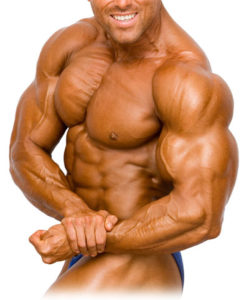 The key is to breakdown muscle tissues with greater force and consistency in order to force it to repair and rebuilt in larger sizes and densities. For this reason, there are more weights used, some of which include dumbbells, barbells, weight plates, gym balls, benches, kettle bells, Olympic weights, gloves, and more.
The key is to breakdown muscle tissues with greater force and consistency in order to force it to repair and rebuilt in larger sizes and densities. For this reason, there are more weights used, some of which include dumbbells, barbells, weight plates, gym balls, benches, kettle bells, Olympic weights, gloves, and more.
For diet, there are lot more calories required in order to gain a larger body size and supplement larger and denser muscle growth. Bodybuilders and trainers aim for a calorie count between 3000 and 6000 calories. However, it is not the calories that are important, they are only given to give an estimate of how much food you should consume. The key is eating the right foods at the right intervals and portions for your muscles to get a surplus of proteins necessary for rapid muscle recovery, rebuild, and growth.
The high calorie count is especially important since the muscle fibers and tissues are getting worked with a lot more impact and force compared to in lean body programs. As a result, the muscle tissues need a faster route to recovery in order for you to be able to lift weights with the same consistency to achieve effective results.
Cut Or Bulk: What Should You Choose?
If the aforementioned information is of immense interest to you, it is likely that you will spend time deciding which is a better option for you, cutting or bulking. In cutting, the main goal for you is to shred body fat whilst making sure you maintain your muscle. Whereas, in bulking, the goal is to build new muscle by enlarging your body weight whilst keeping your fat gains to an absolute minimum.
The short answer is that there is no one simple answer for each and the right choice can vary according to a number of factors including fitness goals, body fat percentage, and body type. If you are a beginner, gaining muscle will be the least of your concerns since you will be mostly preoccupied with losing body fat. However, if you are aiming to partake in a long-term fitness journey and want to benefit from having a sustained high metabolic rate through more body muscle, then bulking may be a better option.
In either case, the key thing to consider is your body fat percentage. The higher it is, the better it is for you to go with cutting as opposed to bulking. This is because in bulking, which requires increasing your calorie intake, it is normal for one to gain body fat after which you are supposed to go on a cutting phase to get ripped.
However, if you have a substantially high body fat level and opt for gaining mass muscle, you will need to devote a longer time for getting rid of excess body fat. This does not mean it is not workable; not at all. But, considering you are new to fitness and most likely have a shaky level of motivation and inspiration; it can become quite easy for you to give up on your fat loss efforts.
For this reason, it is best that you first go for the lean body route, which will give main priority to losing body fat percentage without losing your body’s existing muscles. You should ideally aim to have a body fat percentage somewhere in the 10-15% range. Once you achieve this, you can then easily move on to gaining higher muscle mass and obtain a bulky muscular body frame.
To maximize results, you need to ensure that your workout program is designed intelligently so that losing body fat does not lead to loss of muscles. If this happens, gaining more muscle will become extremely challenging.
The Significance of Testosterone
You may have heard how men are naturally advantageous for building muscle in comparison with women. This is usually due to men having higher testosterone levels and, as a result, gives them a considerable edge in helping them gain muscle mass and reduce fat a lot quicker. So what makes testosterone so beneficial?
Testosterone is a hormone that is naturally produced in the body and serves as an important catalyst for speeding up the process of muscle rebuilding and growth. In the case of men, testosterone hormones are produced in the testicles, which are also responsible for many of their sexual characteristics. In addition to sustaining muscle mass, testosterone is also responsible for maintaining a sufficient supply of red blood cells, emotional well-being, sexual health, and bone growth.
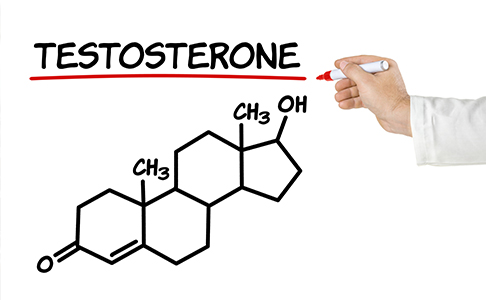 The amount of testosterone is subject to dietary intake and frequency of intense exercise. However, there are many factors that can lower it, mainly illnesses and imbalances in the body. Some of these include chemotherapy, chronic illnesses, physical injuries, loss of or infection in testicles, obesity, stress, and depression.
The amount of testosterone is subject to dietary intake and frequency of intense exercise. However, there are many factors that can lower it, mainly illnesses and imbalances in the body. Some of these include chemotherapy, chronic illnesses, physical injuries, loss of or infection in testicles, obesity, stress, and depression.
Individuals that have low testosterone levels will thus find it a lot more difficult to maintain or grow their muscles. Fortunately, testosterone levels can be increased through proper and intense resistance training, as well as good nutrition. But, the assumption that higher the testosterone levels, the better your muscle building efforts tend to be is an oversimplification.
As the amount of testosterone levels fluctuate or increase normal to high, muscle gains do not increase as desired. It is not that there is no muscle growth whatsoever; rather, they do not increase proportionally to rise in natural testosterone.
This was evidenced by a study conducted and published by the Charles R. Drew University of Medicine and Science involving a test group of young men. They administered drugs and other dietary supplements to increase the natural count of testosterone for a period of 20 weeks.
Researchers found that participants did see improvements in muscle mass; however, they were not on par with their expectations. This led them to conclude that if increases in testosterone levels are within the normal range of 300-1000 ng/dl, muscle gains will not be as significant. The implication from this study is that in order to achieve mass muscle, testosterone levels need to be raised by a substantial amount.
The conclusion is that high testosterone levels are integral to gaining larger and denser muscles. However, if you are intending to become bulky naturally, any further increase in testosterone count will not contribute to additional muscle growth. There is a point beyond which your muscle tissues will not grow larger in size.
Nevertheless, it is important that you implement techniques to boost your body’s production and release of testosterone. The following sub-section explains how you can achieve this.
Ways to Raise Your Testosterone Levels
Since testosterone levels decline after you reach the age of 30, it is essential for you to ensure your body naturally produces a sufficient level of it in order to achieve effective weight loss or muscle gain results. The following are some of the ways through which your natural testosterone levels can be raised.
Partake In Proper Exercise
We have all heard of how exercise can help boost your testosterone levels. What you may not know, however, is what techniques and tips are best for raising it.
Lifting Heavy Weights
One of the first things you should pay attention to is lifting heavy weights. Regardless of whether you lift low weights at high reps or high weights at low reps, any kind of weight lifting can kick-start your testosterone production substantially.
Workouts, such as squads, dead lifts, and Olympic lifts, in particular, if done at least thrice a week is one of the many factors of making sure your testosterone levels skyrocket. You don’t necessarily have to start off with lifting extremely heavy weights in order to see sudden rises in testosterone levels. Start small using kettle-bells or dumbbells and build your way up in order to become strong enough to comfortably lift barbells and other heavier cable machine weights.
Sprinting
Secondly, sprinting can also be a great exercise to increase your testosterone levels. Performing periods of high-intensity sprints is found in research to be extremely effective; with it, you can make sure that your testosterone levels are high even after you have recovered fully from the workout.
Use Shorter Breaks
It is important to take breaks in between workout sets to give enough time for your muscle tissues to be supplied with oxygen in order to continue doing further exercises. However, you should never mistake this for taking lengthy breaks. Instead, shorter breaks can be an efficient method of boosting your body’s metabolic rate and providing the impetus for an increased production of testosterone hormones.
Depending on how intense your workout is and how tiresome your muscles get, always ensure your rest period is within the 3 minute range. Anything above this and you will limit your potential to boost testosterone.
Do More Leg Workouts
Doing more leg exercises, such as squats, lunges, and knee raises using weights, for example, are very effective for increasing testosterone production. This is because of the large muscle groups found in the lower body and any exercises that work these muscles can significantly raise your metabolic rate, as well as testosterone levels.
Do High Intensity Cardio Training
While it is true that too much cardio can lead you to lose muscles, it is nevertheless key to making sure your testosterone level and metabolism rate are high in order to induce rapid fat loss and muscle gain. However, running for half an hour is not beneficial at all. Unless you are training to compete in a marathon, doing a steady cardio training for several minutes at a time can cause your testosterone levels to become normal.
Studies have found that cyclists have lower testosterone levels compared to bodybuilders. As an alternative, do multiple workouts in quick succession with alternating high and low intensity.
Consume Good Nutrition
Have More Protein
You may have noticed how almost every workout program places great importance on having a high-protein diet. This is important for a number of reasons. Firstly, a diet rich in protein from eggs, chicken breast, quinoa, and other sources is vital for allowing your muscle tissues and fibers to recover instantly from a heavy and intense workout session, in addition to helping it grow and become stronger. After all, your muscles are made from protein, so it is natural for you to consume more protein to make more muscle and influence high testosterone production.
However, consuming protein in limits is the key. If your protein consumption is too much, your body will simply use it as fuel instead as a signal to increase muscle size and strength. Additionally, try to ensure that your protein intakes comes from animal sources instead of plant sources. Doing so will be beneficial for raising testosterone levels.
Do Not Forget To Have Healthy Fats
It is quite easy to forget just how important fats are as a macro nutrient to not only supplement your fitness goals, but also lead to higher testosterone levels. Fats can be divided into saturated fats and unsaturated fats.
Unfortunately, many nutritionists and fitness experts have said much about the negative consequences of eating saturated fats to the point that we can barely consider to appreciate some of the advantages it can offer for the purpose of gaining muscles, one of which is the benefit of boosting testosterone production in the body.
Allocate 10 percent of your daily calorie intake to eating saturated fats and another 10 percent to eating unsaturated fats.
Abstain From Alcohol
It is also useful to stop consuming alcohol altogether. This is because alcohol has the effect of limiting the production of testosterone in the body, as well as causing degradation and inflammation. Regardless of how much you train and maintain your intake of macronutrients, alcohol can jeopardize your testosterone production and present many health problems and fitness challenges.
Get Reasonable Amount of Sleep
Getting adequate sleep is one of the most basics of achieving good fitness results along with exercise and nutrition. When you sleep, you put your body on recovery mode, allowing your worn out muscle tissues and fibers and bones to restore strength and become energized for the next day.
More importantly, your body also enables hormones that are critical for muscle rebuilding, such as testosterone and other growth hormones at peak level. Thus, when you get a good uninterrupted sleep for several hours, your body is being supplied with valuable growth hormones and testosterones to enable muscle recovery and growth. In other words, you build muscle while sleeping!
For best results, make sure to get 7-8 hours of sleep every day, especially when you work your back or legs. A lack of sufficient hours of sleep will not only deprive you of releasing testosterone in the body to enable muscle recovery, but also make it difficult for you to continue lifting weights with the same intensity and force.
As a result, you will witness poorer workout performance and further limit your potential to gain muscle mass.
Use Muscle-Building Supplements
If you are keen on boosting your testosterone levels significantly and gain the muscle mass your desire, you will have to use supplements as part of your diet. This is because there are only so many amino acids and hormones your body can produce and release to stimulate muscle rebuilding and growth. For better gains, hormones and enzymes from supplements will be highly beneficial. The following are some supplements you can use:
Creatine
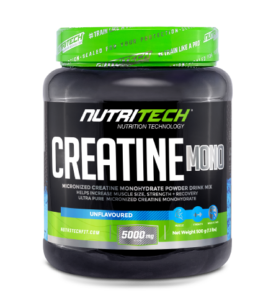 Creatine is naturally produced by our bodies, the bulk of which is stored near our skeletal muscle tissues. The rest are stored throughout the body. Creatine supplements are used for facilitating greater muscle density, rapid recovery from workouts, higher storage of glycogen, and improved high-intensity muscle training sessions.
Creatine is naturally produced by our bodies, the bulk of which is stored near our skeletal muscle tissues. The rest are stored throughout the body. Creatine supplements are used for facilitating greater muscle density, rapid recovery from workouts, higher storage of glycogen, and improved high-intensity muscle training sessions.
But, most important of all, Creatine can be extremely beneficial with regards to stimulating the production of testosterone due to its impact of converting testosterone into a more potent form of hormone called dihydrotestosterone, or DHT. The positive impact of having a large increase in testosterone levels is supported by a wide number of studies, which only establish the credibility and reliability of Creatine.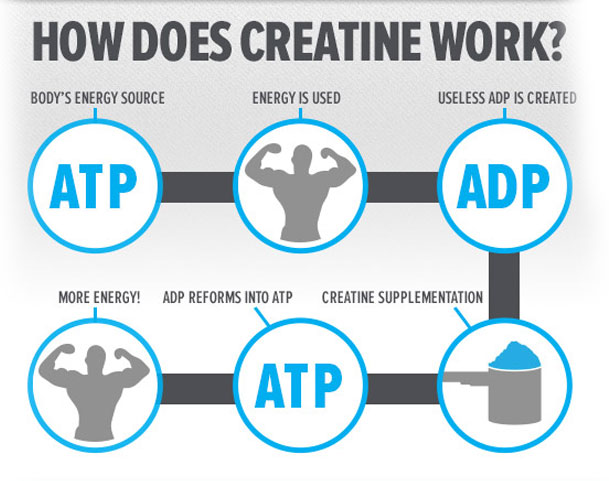
Fenugreek
Fenugreek is one of the many natural herbs that have a profound result on raising testosterone count in the body. In the International Journal of Sport and Nutrition, fenugreek was found to have a dramatic rise in testosterone levels, as well as fat loss gains. Aside from improving muscle building potential, fenugreek also has the advantage of increasing libido and enhancing sex drive.
Ginger
 Another natural source of raising testosterone levels is ginger. It is known for providing a range of medical benefits, especially with regards to countering cancer, nausea, and inflammation. The Tikrit Medical Journal found that ginger can be an effective means of improving testosterone production.
Another natural source of raising testosterone levels is ginger. It is known for providing a range of medical benefits, especially with regards to countering cancer, nausea, and inflammation. The Tikrit Medical Journal found that ginger can be an effective means of improving testosterone production.
In summary, testosterone is a vital hormone that is responsible for driving muscle rebuilding and growth. While it is produced naturally in the body, there are many ways through which its production is increased, allowing you to improve your muscle building goals. Some of the ways through which this can be done are doing proper exercise, having a diet rich in proteins and fats, refraining from alcohol, getting adequate sleep, and using supplements.
Training Principles for Building Mass Muscle
Training for building muscle requires making sure you adhere to a number of core principles. It is these very principles that will determine the efficiency of the techniques, which, in turn, will only improve your chances of achieving the muscle definition and density you need.
Many bodybuilders and trainers have all subscribed to these principles in order to obtain large and ripped muscles. Assuming you are new to gaining muscles, quick gains are important for your motivation. If you lift heavy weights without the proper method and approach, you will most likely compromise your chances for muscle growth and develop a body you are not proud of. So let’s look at these muscle mass building principles and techniques.
Lifting Weights
Even if this may come across as extremely obvious, it is important to establish that lifting weights is the main driver of achieving ripped and large muscles. Bodyweight exercises, such as push-ups and squats, for instance, may be beneficial, but the benefits of lifting heavy weights at low reps can cause your muscle tissues and fibers to grow multi-fold.
There is simply no question about the effectiveness of lifting heavy weights in forcing your muscles to grow the way you want them to. This is known as stimulation. Consistently applying a high amount of force to target a specific muscle causes it to expand and grow in size. As you continually lift heavier weights, you gain muscle weight and contribute to more fat loss.
Gradually Increase Weight Load
In order for you to gain size, it is necessary for you to persistently lift heavier weights. If you lift the same weights over x number of weeks or months, it is unlikely that you will force your muscles to increase. This is why it is important that you progressively raise your load on a weekly or monthly basis.
Another benefit of using this method is to prevent your body from hitting a plateau; this is where your muscles become conditioned to a particular weight and your body adapts to the point that you no longer can increase your muscle size.
Work Every Part of Your Body
One of the secrets of having an incredible muscular body is that all body areas are in good proportion. For this, it is essential that your workouts target every muscle group in your body from your abdominal and back muscles to quadriceps and glutes; otherwise, you will increase the risk of having a disproportionate muscular body.
Ideally, your workout schedule you have a day for each muscle group. For example, on Mondays you can have a leg day in which you do a range of exercises targeting all the different muscles surrounding your legs while on Tuesday you can have a chest day followed by a cardio or total body workout the following day.
The main benefit of targeting different muscle groups is to prevent imbalances in the body. Your muscles cannot become stronger or larger in size if you perform isolated workouts. In fact, different muscle groups are connected to one another and ensuring proportionate muscle building will be extremely effective for giving you a well-rounded physique.
Say you want to develop strong arms; lifting weights targeting biceps and triceps alone will not be useful for building mass. Targeting different muscle areas through dead lifts and squats are just as important for giving you definition and larger arm size.
Many people enter a workout program with the hope of targeting only a specific muscle group, such as abs and arms, and ignore their lower body. You might have come across some bodybuilders with ‘chicken legs’, and if you don’t want to be taunted with terms such as this, you better ensure your workout schedule covers all areas of your body.
Utilize Compound Exercises
It is wrong to assume that you can build bulk by focusing on one muscle at a time. In fact, you need to workout in a way that targets multiple muscle groups at once for faster and more effective results. These are known as compound exercises, and go in so far as boosting your growth hormones and testosterone levels. Exercises, such as dead lifts, military presses, squats, and bench presses, are some of the best examples of compound exercises.
Incorporating these in your workouts can boost your results significantly irrespective of whether you are training for becoming lean or bulky.
Always Supplement Your Workouts with Warm-Up and Cool-Down Exercises
We all know just how important it is for us to warm-up before lifting heavy weights. It helps kick-start enough blood flow to be able to indulge in high-intensity exercises without experiencing strains or injuries. However, equally important to warm-up exercises are cool-down exercises. These mostly consist of stretches after a workout to allow your heart rate to gradually come down to its normal level and remove the stiffness in your muscles.
Many of those who have done some form of weight training may not like the idea for staying in the gym for an extra 10-15 minutes performing stretches, especially if their gym clothes are dripping with sweat and are out of breath. However, considering you workout for an hour or more, an additional 10 or 15 minutes should not be too much to ask. More importantly, doing cool-down exercises can go a long way in minimizing chances of muscle soreness due to DOMS (Delayed Onset Muscle Soreness), which is experienced 24-72 hours after a workout.
The pain arising from such soreness can be unbearable and leave you almost paralyzed and prevent you from working out the next day. More importantly, cool-down exercises can prevent risk of injuries in a manner not many think of.
Maintain the Right Number of Reps and Sets
The number of sets and reps is the differentiating factor between bulking up muscle and become shredded or lean. It is thus highly important that you adhere to the right numbers for you to gain the results you seek. For bulking, bodybuilders and trainers usually rely on lifting heavy weights at reps between 5 and 10 per each set. The right number of reps will depend on individual strength and goals.
As far as sets are concerned, if you are a beginner, you start with at least 3 sets. When you feel you begin to get the hang of workouts and your muscles become stronger, you can then move on to 6-9 sets or beyond 12 sets to maximize your results. The reason why you are not supposed to start off with too many sets is because lifting heavy weights at such a frequency can damage your muscle fibers. The main focus should be on giving consistent stimulation to muscles and increasing the load as you become stronger.
Have Proper Form
No amount of workouts will be beneficial for you unless you have the right range of motion and form. Without good form, any weights you lift won’t effectively target your muscle groups. There is also a risk of injuries that can prevent you from lifting weights in the long run. Those who get injured can take weeks to fully recover before resuming their workout schedules.
If you are new to weight lifting, make sure you first practice your form with a light weight. Once you learn how to do the workout with the right technique, you can then do so with heavier weights. It is possible for you to break your form when lifting heavy weights. If this is the case, you may be lifting too heavy weights and need to lower the load.
Muscle shocking
Watch any documentary or read a book on bodybuilding and you will instantly see the name of Arnold Schwarzenegger pop up. The former 3-time winner of the professional Mr. Universe title and 7-time winner of Mr. Olympia, Schwarzenegger was famous for the concept of what is known in the bodybuilding world as muscle shocking.
The main idea behind shocking is performing an irregular and inconsistent workout routine in order to keep the muscles confused. Although consistency is important in muscle building, overtime, the muscles will adapt and become used to the workouts to the point that you no longer feel your muscles are getting worked.
Through shocking, the muscles are in a state of frenzy due to the inconsistent order of workouts and load being applied to them. This prevents the muscles from hitting a plateau and forces them to grow in strength and size. For muscle shocking, you must change your workout routine every few weeks, usually between 8 and 12. However, you should make sure that you have reached at least the intermediate level before trying any muscle shocking approaches.
A good way to condition your body is through strength training. Then you can use shocking methods such as descending sets, cheated repetitions, supersets, forced repetitions, and reverse pyramiding.
Training Mistakes to Avoid
There are many mistakes that many trainers tend to make in their journey to acquire more muscle tone. Here are a few.
Neglecting Cardio
You should never skip cardio exercises altogether on the assumption that it can reduce or limit your muscle mass. Having cardio once a week is sufficient for ensuring fat gains from high calorie intake is minimized for best results. More importantly, having a cardio workout can be essential for strengthening your cardiovascular system including your veins, heart, and capillaries, which will be beneficial in getting rid of toxins from your body and strengthening your muscles.
Although people do cardio workout through different exercise machines such as a treadmill or a stationary bike, it is preferable that you play a game of soccer or basketball with friends over the weekend. Another effective way to fulfill your cardio workout is through high intensity interval training. Irregular spikes in your workout routine will be important for raising your heart rate and inducing rapid fat loss.
Over-Training
Another common mistake many trainers do is over-train. The concept of more is better may be beneficial, but in the case of bodybuilding, it should be tread with caution. In the initial stages, it is necessary to go slow and not rush your workouts. Another problem is working the same muscles multiple times a week, especially if you are not taking out enough time for recovery. It is important to note that although your workouts are what will contribute to muscle building, real muscle growth is attained outside the gym.
Too Much or Too Little Sleep
We have already established just how important a good, uninterrupted nightof sleep is for facilitating muscle rebuilding and formation. If you are sleeping less than 7 hours a day, your body will unlikely recover fully in time for the next day’s workout, thus inhibiting your muscle building goals.
At the same time, this does not mean that you should sleep for 12 hours on the weekend as doing so will lead to weight gain. Thus, aim for a sleeping routine that utilizes at least 7 hours, or 8 hours for best results. You will be surprised how energized and motivated you will feel upon waking up and thus benefit from a better and improved workout performance.
Expecting Professional Gains
At no point in your workout program should you expect to gain muscle like professional bodybuilders and experienced trainers. Considering you are just getting started with losing body fat and building muscle, looking like Arnold Schwarzenegger or Jay Cutler in their prime should be the least of your concerns. Expecting to look like them will only discourage your from committing to the workout program and also make you train too hard to see quick results. Obtaining a fragment of their physique requires a considerable amount of dedication, hard work, and of course time. Unless you are training for Mr. Olympia, never set the bar too high to begin with.
Professional bodybuilders spend many years training and building muscle in the right areas with consistency and a range of professional weight lifting and nutrition methods. Most professional trainers spend more than 7 years developing their muscle and definition, which is why it is a big mistake to think you can achieve something close to what they have.
Instead, focus on building muscle at your own pace. Remember, your body is not used to bodybuilding and nor your metabolic rate is as high as professional bodybuilders. Your main concern should be on conditioning your body and gradually increase the load to see better results.
Going the Lone Route
If you have no experience lifting weights, the last thing you should do is to do so on your own. This is because proper workout routines involves making sure you have the right form and techniques in order to see excellent results without injury. Seeking the advice of an experienced trainer, however, can go a long way in making sure any muscle tone you develop is sustainable. A trainer can also be useful for keeping you motivated and helping your decide what particular workouts, sets, and reps you should opt for according to your physical limits.
Although it is perfectly possible to create your own workout schedule without the assistance of a trainer, it may not match the effectiveness of a trainer’s exercise program.
In summary, training for bulking is no easy task. It requires adhering to the right workout routines that utilize principles such as shocking, using the right number of reps and sets, and other key fundamentals. Without these principles, you will be unlikely to see good results.
How to Train For Mass Muscle?
There are literally a gazillion workouts and many such programs that you can try to develop the muscle pump and strong muscles you long to see. However, for the purpose of keeping it concise and to the point, we are going to explore the tips and tricks of none other than the former 6 time Mr. Olympia winner, a bodybuilding legend and icon of muscle mass, Arnold Schwarzenegger.
In the workout program known as ‘Arnold’s Blueprint’, we are going to show how Schwarzenegger performed his workouts and how you can follow the same techniques and tips to achieve incredible results.
Arms
Arms are one of the first things people look for in a workout. Arnold used to do a range of workouts to develop his biceps and triceps. He mentions how overtime your body becomes used to a certain workout routine after which any fat loss or muscle gains becomes difficult. This is where the muscle shocking principle is used. Arnold would use it by working his biceps using 275 pounds of weights with one rep and following it with a slightly lighter weight and doing 3 reps. The key is to never let your muscles become used to a particular workout. As a result of the shocking method, Arnold tells of how his muscles used to shiver after a workout, which is what contributed to a better response in the form of improved muscle growth.
Other than this, Arnold used the barbell curl exercise to develop thick biceps, whilst at the same time relied on concentration curls and dumbbell curls to exclusively target his biceps. For triceps, Arnold resorted to tricep push downs followed by tricep extensions.
Legs
For leg muscles, no exercise is as effective as squats. Whenever you work your leg muscles, you are actually getting an entire body workout due to large muscle groups. For big thighs, be sure to do a range of squat exercises from leg extensions, front and back squats, to leg curls and lunges.
Chest
Arnold was known for his huge chest and was referred to as the ‘oak chest’. To train your chest, you should use a combination of three workouts, the dumbbell flyes, the bench press, and the incline bench press that has to be performed at various angles in order to develop your muscles fully. Arnold gave particular focus to the dumbbell flyes.
In it, he would move his arms and lower them down as much as possible to the point that he would feel he touched the ground and move it back upwards to create as much tension as possible in the chest. This was important for ensuring a comprehensive pectoral muscle growth. Arnold always emphasizes the importance of stretching and flexing your muscles by yourself and not relying on any cable machine to support with the swing of the arms.
Shoulders
Arnold used to develop his shoulders using lateral raises, barbell presses, dumbbell presses, military presses, and barbell presses that were performed from behind the neck. The latter later became known as Arnold presses because of the particular way in which it was carried out. This would be a normal behind the neck press as well as a dumbbell press that would enable the shoulder to stretch properly, creating a proper range of motion.
Lateral raises performed on a 45-degree bench were also his specialty. When you perform a lateral raise, you need to extend your wrists facing the ceiling. This will be essential for developing your rear-delt.
Back
Arnold performed a number of exercises to develop his back. Among these were the T-bar row, bent over barbell, dumbbell rows, and chin-ups. The rowing movement of these exercises was important for allowing your muscles to thicken and become wider. Arnold is reported to have used these workouts throughout his bodybuilding career, and there is no reason why you shouldn’t if you are training for mass muscle.
Abs
Arnold never forgot to work his abdominal muscles using workouts such as knee raises, sit-ups, leg raises, and crunches. Arnold, along with his other Gold Gym partners, always relied on performing Roman chair sit-ups of 500 reps. Of course, you shouldn’t be expecting to hit that mark from the get go. Try to do as many reps as you can and grow your stamina and strength from there.
Training for mass muscle will definitely not be easy at first. The main thing is to start small and slowly increase your weight load. One thing you should make sure you get right before starting your workout is your form. Without proper form, you will not be targeting the right muscles as effectively and will not witness good results.
More importantly, your training needs to complement your nutrition. The following chapter explains what nutrition is needed for gaining mass muscle and what some of the mistakes are that people make that you can avoid for achieving a bulky muscular body.
Nutrition for Gaining Mass Muscle
Nutrition will be the key to making sure your weight lifting gains are not compromised. Although protein will compromise most of your calorie intake, you will also need to ensure you are getting the right portions of healthy fats and carbohydrates, as well as fruits, vegetables, and other nutrients that are useful for strengthening muscles and boosting their recovery and growth. Here are few details on the important macro-nutrients you will need to supplement your workout efforts.
Carbohydrates
We are often reminded of just how evil all carbohydrates are. You might hear of the ‘benefits’ of following a low-carb and high protein diet, but we are often not told of the complete story. Carbohydrates, in actuality, can be extremely beneficial in providing you the energy you need to stay strong throughout the day and for maximizing your workout performance. When you increase protein intake at the expense of carbohydrates, your body’s energy levels can diminish and get used up very quickly.
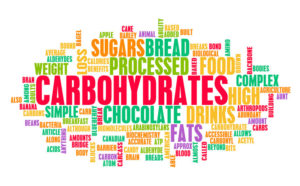 The dangers of this are that you either feel a strong sugar rush in which case you will end up binging on sugary foods and unhealthy meals, such as pastas and white rice, and gain too much weight, or you will not have enough energy to lift heavy weights and build muscle.
The dangers of this are that you either feel a strong sugar rush in which case you will end up binging on sugary foods and unhealthy meals, such as pastas and white rice, and gain too much weight, or you will not have enough energy to lift heavy weights and build muscle.
When carbohydrate intake is reduced, it becomes a lot more difficult for you to shed body fat. Although this is usually a characteristic of cutting routines, cutting carbohydrates causes your body to undergo a survival mode. In this, your body senses danger and risk of starvation and starts to hold on to existing body fat as a source of fuel. When this happens, no matter how much you exercise, getting rid of body fat becomes a major challenge.
A sufficient intake of carbohydrates is thus necessary for preventing your body going into this defense mode. More importantly, it is the key to boosting your workout performance.
So what kind of carbohydrates should you consume? You should eliminate or minimize your intake of simple carbohydrates and maximize your intake of complex carbohydrates. The former, such as pastas, white rice, sugar, and sweets, digest a lot more easily. The problem with these foods is that it can cause your insulin levels to skyrocket, thus making you lethargic. The higher your insulin levels, the more chance that the food is stored as excess fat.
Complex carbohydrates, on the other hand, include food sources such as brown rice and brown bread have the advantage of taking longer to digest. What makes such carbs so beneficial is that they contain higher fiber, thus keeping you full and energized for longer.
In order to build mass muscle, it is crucial that complex carbohydrates comprise of a considerable portion of your daily calorie intake. Do bear in mind that the whole point of bulking is to become larger in size, and one of the ways through which you can achieve this is by setting aside a large percentage of carbohydrates of your diet.
Fruits and vegetables are also good sources of carbohydrates since they contain sugar. In fact, they make excellent alternatives to simple carbohydrates such as white rice since they can help you stay hydrated and energized without adding too many calories. If you are undergoing a cutting phase, make sure to maximize your intake of leafy vegetables and fruits to aid fat loss and become shredded.
Proteins
 This goes without saying, but protein is the driving force behind your muscle growth. As the most important macronutrient, protein is just as important for a pre-workout meal as it is for post-workout recovery. Make sure to consume proteins from sources, such as eggs, grilled chicken breasts, quinoa, red meats, turkey, fish, and not to forget, protein shakes, such as casein protein.
This goes without saying, but protein is the driving force behind your muscle growth. As the most important macronutrient, protein is just as important for a pre-workout meal as it is for post-workout recovery. Make sure to consume proteins from sources, such as eggs, grilled chicken breasts, quinoa, red meats, turkey, fish, and not to forget, protein shakes, such as casein protein.
This is important for making sure your body is supplied with protein throughout the night. The slow releasing protein of casein protein will ensure unused protein is not used as a source of energy. Casein protein constitutes 80 percent of milk protein and can be useful for preventing your excess protein from being driven out of your system via bowel movements.
Fats
We have already mentioned about the usefulness of consuming both saturated and unsaturated fats since these are important for providing a healthy cardiovascular system and boosting your fat loss and muscle gain goals provided it is consumed in the right portions. Make sure that you eat plenty of foods such as avocados, nuts, olives, and eggs. Healthy fats that are rich in omega 3, omega 6, and omega 9 will also be beneficial in strengthening bones and helping you make the most of your workouts and warm up and cool-down exercises and stretches.
Nutrition Mistakes You Need To Avoid To Achieve Goals
There are some clear warning signs that you need to pay heed to if you want to make the most of your time working out and eating clean and healthy. You could subscribe to the best workout plan and do all workouts with proper form and technique. However, if you are still not seeing results, the problem may not be with you; the problem may be with your eating habits. It is thus important to highlight the various errors many new trainers make on their road to becoming bulky. These are as follows.
Insufficient Intake of Vegetables
It can be too easy to ignore getting a sufficient portion of vegetables as part of your daily diet. Many maximize their protein intake at the expense of leafy vegetables thinking that the more protein they consume, the faster they will build muscles. However, eating a good amount of vegetables can be important for keeping you satiated between meals and prevent you from binging. Vegetables, such as broccoli, cauliflowers, and asparaguses, for instance, have a number of health benefits, one of which is facilitating fat loss.
A much more important benefit of eating more vegetables is the fact it takes longer to digest, which causes you to burn a lot more calories than usual.
Eating Too Close To Bedtime
Having a good night’s sleep after eating a heavy meal can be convenient; however, it has the danger of jeopardizing your muscle building and fat loss potential. It is normally advised that you should maintain at least a 2-3 hourgap between your last meal and your bedtime. Eating too close to bedtime can make you lethargic, affect your ability to have a good and uninterrupted sleep, and make it a lot more difficult for you to have a good breakfast the next morning.
Most important of all, when you eat too late at night, the body compensates for the unused energy by either storing it as fat or pushing it out through bowel movements. Due to the latter, it is possible for you to experience digestion problems.
Skipping Meals
You will certainly not see good results if you commit to skipping meals. Skipping an important meal of the day such as breakfast can leave you tired and low on energy throughout the day that can also limit your workout performance and potential for gaining more muscle. At a high calorie diet, having more than 5 meals that are rich in the right ratio of macronutrients is essential. Leaving one meal out can lower your metabolic rate and hinder your weight loss potential considerably.
Poor Eating Consistency
How many times you eat in a day can also say a lot about your inability to reduce weight. If you have 3 large meals a day, you are basically putting a lot of food in your body at once, which only makes it more difficult for your body to quickly digest all the food. Having too few spaced out meals can substantially lower your metabolic rate and limit your body’s natural mechanism of burning enough calories to burn fat.
Thus, instead of having 3 big meals, you need to have around 5-6 small meals. This will keep your metabolic rate high enough to burn a significant amount of calories and also make it easier for you to digest the food that you consume. More importantly, you will not feel bloated or lethargic and will be able to benefit a lot more from workouts.
Improper Ratio of Macronutrients
Read any blog or book on muscle building and you will come across just how important it is for you to obtain macronutrients in the right portions and ratio. Macronutrients consist of carbohydrates, proteins, and healthy fats that need to be consumed in the right combination to witness significant weight loss and muscle gain. For a start, you should aim for a protein, carbohydrate, and healthy fat ratio of 4:4:3. Over time, you need to raise the percentage of proteins in your diet to a ratio of 5:3:2.
It can be too easy to overlook the importance of macronutrients when you are trying to do clean eating. Beginners often make the mistake of giving too much emphasis on consuming proteins that usually comes at the expense of carbohydrates and healthy fats.
Eating too much
Consuming too much food may not seem to be a problem if you are aiming for a bulky muscular body. However, there is a thing of too much of calorie surplus that puts you at the risk of adding too much fat along with muscles. Even though you may develop muscles, the high fat deposits will not give you the muscle definition. Thus, you need to stick to your daily calorie intake and be wary of acquiring too much fat or carbohydrates.
This is especially true in the case of salads. Although they are good for weight reduction, eating the right kind of salads can make all the difference. Watch out for ingredients such as pastas, salad dressings, and mayonnaise in salads, as any of these have too much fat.
It is best that you count calories using a calorie counter to keep track of your daily calorie intake. In this way, you will be able to make sure that you are not going over the limit and will gain muscle as well as lose fat.
Eating Too Less
Starving yourself is another extreme that you need to avoid. We have already mentioned the drawbacks of skipping meals and the same can happen if you consume too few calories. If you are aiming to build muscle, you should be looking to have a calorie count above 3,000 calories.
However, if you end up reducing your calorie intake to less than 2,000, you will not provide your body with enough nutrients to develop large muscles and may even become lean in the process. Perhaps the biggest side-effect of eating too less is that you can even reduce your muscle mass.
Too Much Sugar
You need to regard sugar, especially white sugar, as one of your top most enemies. Eating sugary foods can not only spike up your insulin levels, make you lethargic, and increase risk of diabetes, but also cause your body to convert it into fat if it is an unused source of energy. Sugar is a carbohydrate and should be consumed from more natural food sources such as fruits.
Make a habit of checking labels on food products to decide if there is room for sugar in your daily calorie intake or not. In this way, you will always monitor how many grams of sugar you should consume daily.
Too Much Salt
Just how you need to be careful of consuming too much sugar, you should equally be concerned about how much salt you need to add in your food. Salt contains sodium and the higher the concentration of sodium in your diet, the more it can cause your body to retain excess fluid, which can make you feel bloated and increase weight. Having too much salt also leads to the risk of upsetting your hormonal system, resulting in a number of illnesses and diseases.
Not to mention that high doses of sodium in your diet can also increase the risk of high blood pressure. Due to these reasons, it is essential that you do not add too much salt in your food for seasoning.
Additionally, you need to avoid foods that are high in sodium; otherwise you will be gaining pounds without realizing. Some of these foods are pickles, olives, canned vegetables, factory packaged tomato sauces, salsa, and pastas. It is necessary for you to always check labels of food items when shopping; the amount of sodium shown on labels can help you decide what items you should consume and what you should not.
Not Drinking Enough Water
Another big mistake many can make is not drinking enough water between meals or before workouts. Water serves as an important means of filtering toxins and undigested food out of your system without leading to digestion problems. The biggest benefit of drinking a lot of water is that it can help you feel satiated and, as a result, be able to make use of proper portion control.
A good way of staying hydrated all day long is to always carry a large water bottle instead of relying on glasses. Assuming you are having meals at every 3 hour intervals, you need to drink at least 1 liter of water to avoid feeling dehydrated or starved. Sure, you will have to run off to the toilet every few minutes, but it will certainly stop you from binge eating or drinking that can compromise your diet in a considerable way.
Not Using Supplements
Many are put off by the idea of taking multiple supplements in order to see noticeable muscle mass gains. However, if you are serious about seeing effective results, supplements will be an important catalyst for speeding up your transformation. It may be a bit of a nuisance at first, but once you get the hang of it and feel the difference in your workouts, fat loss, and size of muscles, you will be eager to use it in the long-term.
There are a range of supplements that you can consider using to see drastic results. You should ideally have two supplements, a pre-workout supplement and a post-workout supplement. The former will give an immense boost to your body’s testosterone levels that will enable you to push harder when lifting heavy weights with high intensity and force. The latter, on the other hand, will be necessary for facilitating effective muscle recovery and rebuilding.
On a final note, you also need to be aware of supplements that are effective from the ones that are not. Although supplements are very important for muscle building, you need to be cautious of the fact that many brands and labels will simply be aiming to make big bucks of cheap products that will not provide any solid and sustainable results.
Not Preparing Your Own Meals
This may not be directly related to eating poor nutrition, but can be a cause of it. Relying on someone else to cook your meals can be very risky, especially if they do not share your meal plan and are not as concerned about getting the right macronutrients and number of meals on a daily basis. Or, you could be very busy and be forced to order a takeaway or have to go to a restaurant to treat yourself to a meal, which most likely will not contain the right ratio of proteins, complex carbohydrates, and healthy fats, as well as the right portions.
The only way you can be sure of eating clean is to cook your own meals at home. Although this can be difficult to do at first due to scheduling problems, its benefits outweigh the drawbacks. If you are too busy to make meals, a good way is to cook over the weekend and do something known as meal prepping. This basically means cooking meals for the next 3-6 days so that you can avoid the trouble of cooking daily. In this way, you save time and also benefit from ensuring you have ready-to-eat meals.
Diet Plan for Building Muscle
It is important to point out from the onset that a diet plan for building a bulky muscular body will not be the same as for developing a lean one. For the purpose of highlighting the importance of building muscle, we are going to provide an example of a diet plan for gaining muscle mass along with a few pointers to give you enough flexibility to make your own meals. The following is a 3,000 calorie diet plan consisting of 6 separate meals.
Meal 1 – Breakfast
Your breakfast is the most important meal of the day, which is why you should not refrain from eating small meals, but make sure you eat large meals that consist of proteins, healthy fats, and carbohydrates.
A good breakfast meal should include a meal that helps you have all macronutrients. You can have 120g or one and half cups of uncooked oatmeal along with a cup of egg whites, two omega-3 whole eggs, and one tablespoon of peanut-butter. This should be more than sufficient for providing you with an immense protein boost whilst making sure you are also getting you portion of healthy fats and complex carbohydrates.
A meal such as this will keep you fueled throughout the rest of the day and eliminate chances of feeling low on sugar or energy.
Meal 2 – Morning Snack
Roughly after 2-3 hours, you should have a small morning snack regardless of whether you are hungry or not. The morning snack should include a good portion of fats, and proteins, as well as a good portion of fruits. Having 2 cups of low-fat Greek Yogurt or cottage cheese mixed with a cup of strawberries, raspberries, and/or blueberries will be more than sufficient. The snack should be fewer in calories in comparison with breakfast or lunch.
Meal 3 – Lunch
Your lunch should consist of a large meal that should have the right combination of lean proteins, healthy fats, and complex carbohydrates. A good lunch can include 2 slices of Ezekiel or brown bread, 6 ounces of turkey or chicken breast, half slice of a medium-sized tomato, large leaf of spinach or lettuce leaves, 150 grams of uncooked sweet potato, toppled with mustard sauce.
Meal 4 – Pre-Work and Post-Work Meals
Your 4th meal should be another snack. However, if you are planning on working out after your 4th meal, it is essential that you treat it as a pre-workout meal. For this, you will need to consume a portion of carbohydrates and proteins. Carbohydrates will be important for providing your body with the necessary fuel to maximize your workout, while proteins will be the key to activating your muscle fibers and preparing it for muscle building.
A good pre-workout meal can include half of a large banana, along with a fist of fruits, such as strawberries, and a scoop of a protein-shake. You should wait for at least an hour before working out for best results.
Your post-workout meal should also be taken an hour after your workout. It should consist of nutrients that can allow rapid muscle recovery and its rebuilding process. A good example of a post-workout meal can be one and half scoops of whey protein and a large portion of fast-digesting food that is rich in carbohydrates, such as white rice, white baked potato, rice cakes, or instant oatmeal.
Meal 5 – Dinner
Your dinner should have a large portion of proteins, along with vegetables. This could include a having 8 ounces of lean-fat grilled chicken breast or salmon with one tablespoon of virgin coconut oil, 400 grams of acorn squash, and nearly 350 grams of vegetables, such as green beans, broccoli, cauliflower, or a mix of cauliflower, broccoli, and carrots.
Meal 6 – Late-Night Snack
Your late-night snack should be something light such as 10 ounces of non-fat Greek Yogurt along with a tablespoon of peanut butter, and 10 crushed almonds.
The aforementioned diet plan contains approximately 200 grams of carbohydrates, 35 grams of fiber, 300 grams of protein, 100 grams of fat, and 40 grams of saturated fat.
What Supplements Should You Take?
Taking the right supplements can make all the difference to your muscle building and fat-loss results. In addition to having pre-workout and post-workout supplements, you should also have a protein isolate. The following are a few details that can be important for your fitness goals.
Pre-Workout Supplements
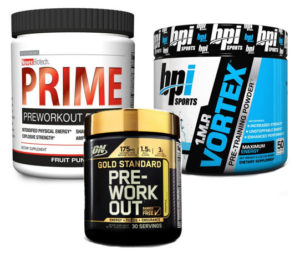 The function of any pre-workout supplement should be to provide immense energy to the body that can allow you to push your workouts to your absolute limits. Although protein is an important ingredient in many of these supplements, many supplements make use of Nitric Oxide and creatine. The following are some of the best pre-workout supplements you should consider for building muscle:
The function of any pre-workout supplement should be to provide immense energy to the body that can allow you to push your workouts to your absolute limits. Although protein is an important ingredient in many of these supplements, many supplements make use of Nitric Oxide and creatine. The following are some of the best pre-workout supplements you should consider for building muscle:
- Jym Pre Jym
- Cellucor C4
- Arnold Iron Pump
- Hyde
- Evlution Nutrition ENGN
Post-Workout Supplements
 Post-workout supplements are needed to not only provide your body with energy, but also allow muscles to repair and recover quickly enough so that you can be in a position to work out the next day. After an intense workout session, you will most likely have very tight and sore muscles. If you do not supply your muscles with the right nutrients, you will be unable to work out with the same intensity and performance the following day.
Post-workout supplements are needed to not only provide your body with energy, but also allow muscles to repair and recover quickly enough so that you can be in a position to work out the next day. After an intense workout session, you will most likely have very tight and sore muscles. If you do not supply your muscles with the right nutrients, you will be unable to work out with the same intensity and performance the following day.
The purpose of a post-workout supplement is to enable considerable muscle growth. If used effectively along with a pre-workout supplement, your muscles will grow in size and strength due to a muscle growth surplus. That is, the strength obtained from workout supplements should offset the energy dispensed during a workout session. Here are some post-workout supplements you should definitely try.
Creatine
Creatine, which is usually found near the skeletal muscle, is naturally produced within our bodies. It plays an important role in the development of lean muscle mass. However, during intense workouts, the amount of natural creatine in the body gets consumed quickly, limiting the potential for muscle growth.
By taking creatine supplements, you actually ensure greater muscle recovery, higher glycogen storage, greater muscle cell volume, and improved muscle workout performance. Due to these reasons, creatine is a top preference by many bodybuilders.
Whey Protein
If you have done some amount of reading or researching on how to get mass muscle, you must have come across whey protein supplements at one point or another. Whey protein supplements have a reputation in the fitness industry due to its easily digestible protein, which works wonders for post-workout muscle recovery and growth. Although whey protein is taken after a workout, it can also be taken as a pre-workout supplement to enhance protein synthesis and make the muscles ready for an intense workout.
Since it digests quickly, it can immediately deliver vital amino acids and nutrients to tired muscles after a workout. Furthermore, it can be of immense convenience to those who are lactose intolerant and wish to avoid the trouble of digesting dairy foods or drinks as part of their diet. More importantly, it consists of a good number of peptides, which are small proteins that help improve blood circulation to the muscles and is also beneficial in boosting your metabolic rate.
Not to forget, whey protein can be great for staving off hunger due to its high-protein content. If you are not in the mood for cooking a meal, simply add one or two bananas into the blender along with 1-2 scoops of whey protein and 8 ounces of milk or water to make a delicious shake for protein.
You should have whey protein within an hour after a workout for best results.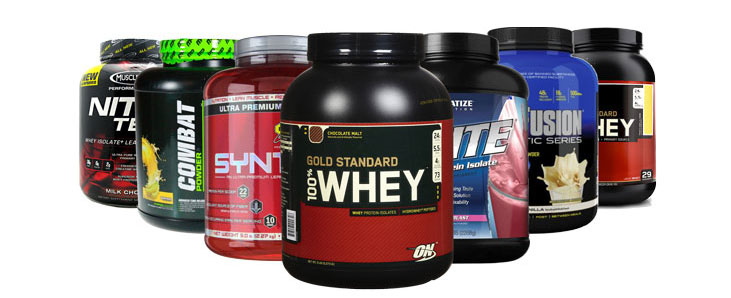
Casein Protein
Casein protein is an important alternative to whey protein. Casein protein constitutes 80 percent of milk protein; the remaining 20% is whey protein.
Although it is technically the same in terms of its high-protein content, it differs considerably by taking a lot longer to digest. This has the benefit of ensuring your tired muscles tissues are supplied with essential amino acids for a longer duration, leading to a much more effective muscle recovery. This is because if you supply your body with too much protein at once, the excess protein becomes useless and instead becomes used as a source of energy.
For this reason, it is ideal for having before going to bed so that throughout your sleep, your muscles recover as efficiently as possible by effectively utilizing every gram of protein from the shake. It is recommended that you opt for casein protein that has micellar casein, which is the slowest casein protein available in the market. Be sure to have between 20 and 40 grams of casein protein just before going to sleep.
For best results, you should combine both whey and casein protein after workouts. Doing so will assure your muscles recover rapidly and also grow a lot larger in size.
Glutamine
Glutamine is a very useful amino acid for muscle growth and is extremely well-known in the bodybuilding and fitness industry. Bodybuilders have long relied on glutamine to enhance their muscle recovery and enlargement goals. This is mainly due to the enhancement of leucine levels in muscle fibers that contributes to higher muscle growth and minimizes muscle breakdown during workouts.
As a result, it leads to a net effect of greater muscle size. It also has the benefit of giving a strong boost to your immune system that reduces the chances of getting ill or sick and missing workouts.
If taken as a pre-workout supplement, glutamine can be helpful in preventing muscle fatigue and lead to a rise in growth hormones. This means that you can lift higher load of weights as part of your workout to achieve muscle growth a lot quicker. In order for you to make the most of glutamine, be sure to take as a pre-workout and post-workout meal along as a bedtime snack.
Carnitine
Carnitine is also known for its effects on muscle growth. It improves blood flow to the muscles and also enhances testosterone growth after a workout. Furthermore, carnitine also increases IGF-1 levels that have a profound impact on building large muscles. You should aim to have carnitine of around 1-3 grams as your post-workout shake for maximum muscle mass.
Conclusion & Final Thoughts On Muscle Boosters
Whether you are a college student or someone who works a 9-5 job, the details mentioned in this eBook are sufficient to help you start your muscle mass journey and realize its various benefits.
Through greater muscle development, you can not only improve your physical appearance, but also take advantage of having a healthier immune system and stronger bones, which are especially important for old age.
However, gaining mass muscle is not the same as developing a lean and shredded body. This is because both vary in terms of calorie count and workout routines. You will need to decide which is more important for you.
But, regardless of what body type you are aiming for, any level of muscle growth will inevitably lead to fat loss, which is why we recommend it to people of all ages.
In this guide, we have provided an in-depth account of some of the training and nutritional advice that are key to gaining mass muscle along with the absolute basics to ensure you can build muscle easily according to your schedule.
By following the various nutrition and training principles mentioned in this book, you can be of sure to seeing impressive gains and prolonging your health in a substantial manner.
Disclaimer
Copyright © Year 2016 All Rights Reserved.
No part of this eBook can be transmitted or reproduced in any form including print, electronic, photocopying, scanning, mechanical or recording without prior written permission from the author.
While the author has taken utmost efforts to ensure the accuracy of the written content, all readers are advised to follow information mentioned herein at their own risk. The author cannot be held responsible for any personal or commercial damage caused by misinterpretation of information. All readers are encouraged to seek professional advice when needed.
Testosterone is a natural hormone found in higher levels in men than in women. It is important for both bone and muscle development.
Testosterone is also important in the manifestation of male characteristics, and athletes also rely on it for muscle growth stimulation and recovery. As men get older, their natural levels of testosterone drop.
This can result in various undesirable outcomes, ranging from a decrease in energy to development of female features like gynecomastia and increased fat deposits. Dropping levels of testosterone will eventually reduce male virility. Fortunately, there are several ingredients that have been known to boost testosterone levels.
Some of these ingredients (mainly herbal extracts) have been used for centuries as part of traditional medical practices and can yield various other benefits in addition to boosting testosterone.
It is highly recommended to consider natural methods when boosting your testosterone levels for any reason, especially since most commercial artificial injections and processes have undesirable side effects.
These natural ingredients can be easily incorporated into your daily diet and mainly come in supplement form. Most testosterone boosting supplements often contain a few herbal extracts and ingredients, but not all of them at once.
Testosterone Boosting Herbal Extract Ingredients
Here are brief descriptions of some of the most popular ingredients and extracts used today.
1. D-Aspartic Acid
D-Aspartic is one of the only two forms of Aspartic acids known to exist. It is basically an amino acid that stimulates the central brain and causes a temporary boost in testosterone levels.
D-Aspartic Acid stimulates the central brain to release human growth hormone, luteinizing hormone, and follicle stimulating hormone, among others.
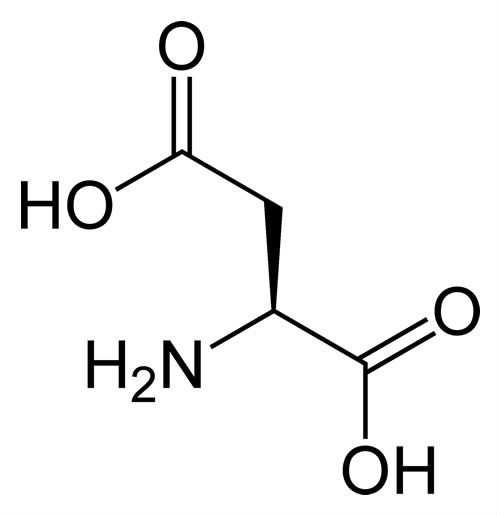 It has been shown to give athletes a temporary boost in testosterone and is believed to support continued production of testosterone if taken consistently as a supplement.
It has been shown to give athletes a temporary boost in testosterone and is believed to support continued production of testosterone if taken consistently as a supplement.
The benefits of D-Aspartic Acid are limited only to the fact that it absolutely must be the ‘D’ form of aspartic acid that is being used. Supplements containing non-D aspartic acid do not have the same benefits.
D-Aspartic acid is known to aid fertility in infertile men and reduces the rate-limiting step featured in testosterone synthesis, thus resulting in a slight increase in testosterone availability. It also acts on stimulatory receptor NMDA.
Studies have shown that D-aspartic acid only provides a temporary boost in testosterone that lasts around 10 days, thus limiting its use. Nonetheless, it can be combined with other herbal extracts to form powerful formulas that will cause a long lasting boost.
It is also known by names such as D-Aspartic and DAA, but should not be confused with Aspartic and DL-Aspartic , which are provided for other uses. Supplementation should be kept between 2000mg and 3000mg per day.
When faithfully taken within the recommended dosages, D-aspartic acid can help subjects with low testosterone by giving them temporary boosts whenever they need it.
This supplement is common among athletes but can also be used by subjects who want to achieve other increased testosterone benefits.
It is important to carefully read the label to avoid confusing this ingredient with other forms of Aspartic acids that may also be provided to boost various aspects of strength and endurance.
2. Horny Goat Weed
Horny goat weed is a popular aphrodisiac that is recommended to both males and females. It is also cited as a testosterone booster and male enhancer.
 In fact, most supplements for male enhancement and testosterone contain varying amounts of horny goat weed within the ingredient list.
In fact, most supplements for male enhancement and testosterone contain varying amounts of horny goat weed within the ingredient list.
Horny goat weed is extracted from the herb epimedium, and the layman name given was derived from sheep and goats that acted friskier after consuming this herb.
Horny goat weed is sometimes referred to by its active ingredient lcariin, which is a prenylated flavonoid, but the supplement should not be confused with the ingredient.
Lcariin is known to contain the aphrodisiac properties and has also been shown to increase testosterone levels in lab rats. However, this was achieved when the rats were given large doses of the herb.
Small doses were shown to promote bone development without any significant boost in testosterone levels.
The appropriate dosage varies depending on the natural body weight of the subject. The supplement should be taken from a 40% extract (80mg/kg) lcariin and should contain at least 200mg/kg of lcariin.
A 150lb subject should consume 900mg lcariin, a 200lb subject should consume 1,200mg, and a 250lb subject should consume 1,500mg.
Nonetheless, subjects can still take lower dosages of 11mg to 180mg for improved bone development and other health benefits associated with this herb.
Horny goat weed has also been shown to increase testosterone levels in females, but has two other ingredients (Icaritin and Desmethylicaritin) that actually increase estrogen in post-menopausal females.
This is why it is used as an aphrodisiac for both males and females. Most horny goat weed supplements are provided for male enhancements and sex drive.
They are thus not as effective as D-aspartic acid for athletes who strictly need a temporary boost in testosterone and performance energy.
3. Maca
Maca is another century old aphrodisiac that is associated with improved sexual functions in both men and women. Although some cite maca as a testosterone booster, there are no scientific tests or outcomes to back this suggestion.
However, maca root has been used for ages to boost libido and sperm production, and it is from such practices that it is associated with testosterone boosting. It is rich in Vitamins B, C, and E, calcium, magnesium, iron, zinc, and phosphorus.
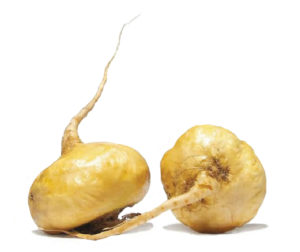 It also contains amino acids and healthy fatty acids. Additionally, maca is known to balance sexual hormones and improve moods to make arousal easily achievable.
It also contains amino acids and healthy fatty acids. Additionally, maca is known to balance sexual hormones and improve moods to make arousal easily achievable.
Unfortunately, maca does not work through hormones and there are no results that suggest it increases either testosterone or estrogen in human patients.
Maca is a plant native to Bolivia and Peru. Its botanical name is Lepidium meyenii and has been cultivated for thousands of years for its medicinal properties.
Its roots are particularly loaded with vitamins, amino acids, and minerals that improve mental clarity, increase energy, and improve sexual drive.
Since testosterone increase is associated with improved sexual drive, it is generally assumed that maca as an aphrodisiac indirectly impacts testosterone production.
What’s more, studies have shown that natural ways of boosting testosterone include reducing stress, consuming more zinc, Vitamin D, healthy fats, and performing regular strength training.
Maca enhances moods (eliminates stress) and contains healthy fats and zinc. It also results in energy surplus for your workouts. It is therefore a vital ingredient that will eventually contribute to increasing levels of testosterone.
Its impacts range from increased energy and stamina to enhanced moods, fertility, and sexual functions. It also alleviates chronic fatigue.
Regular supplementation of maca has been shown to boost testosterone and improve male characteristics in patients with low testosterone levels.
It is generally a supportive herb that will shoot up the benefits of other testosterone boosting supplements and efforts.
4. Tribulus Terrestris
Tribulus terrestris is often recommended for male health, vitality, and virility. It is one of the most popular ingredients found in many over the counter male enhancers and supplements that are tailored towards improvement of male characteristics like hair growth.
It is also part of the ayurveda herbs that are commonly offered to aid urogenital and cardiovascular health.
 Tribulus terrestris has also shown much promise in testosterone boosting and is a proven potent libido enhancer. In laboratory tests done on rats, tribulus terrestris was shown to boost libido, mount frequency, and ejaculation frequencies.
Tribulus terrestris has also shown much promise in testosterone boosting and is a proven potent libido enhancer. In laboratory tests done on rats, tribulus terrestris was shown to boost libido, mount frequency, and ejaculation frequencies.
The same results were drawn from research studies based on lone human subjects. Scientists are yet to determine how tribulus works, but it is believed to increase the density of androgen receptors in the brain.
Since androgens are associated with enhanced libido, increasing their density will have a corresponding increase in their libido enhancing properties.
This herb is also potently cardio-protective, although it has limited impact on fertility where it is considered weak or non-effective. The active ingredients which deliver the libido enhancing properties are known as saponin.
Appropriate dosage recommended for humans is 60% saponin herbal extract (200mg to 450mg).
Tribulus terrestris is a popular creeping herb native to Asia, particularly China, where its fruits have been used in traditional medical practice for centuries.
This herb is used to treat eye problems, abdominal distention, cardiovascular diseases, edema, and high blood pressure.
In Indian ayurveda, it is used for jaundice, impotence, sciatica, lower back pain, urogenital disorders, inflammation, dry cough, respiratory disorders, and poor appetite.
While tribulus terrestris does not boost testosterone directly, it impacts optimal health and also improves libido and sexual drive. Enhanced immunity and optimal health is very important when it comes to testosterone synthesis and production.
Tribulus is therefore one of the crucial ingredients needed to ensure a supplement is complete and addresses all health areas (not just direct testosterone increase).
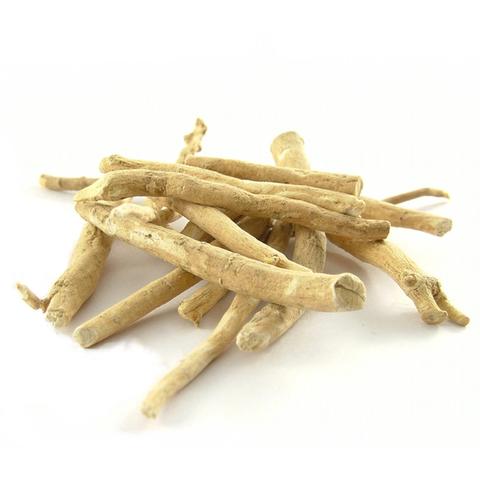 5. Eurycoma Longifolia Jack
5. Eurycoma Longifolia Jack
Eurycoma is a highly potent aphrodisiac that shows significant impacts both in the lab and on subjects. It is the herb name given to a plant popularly known as Malaysian Ginseng. Other names people use to refer to this herb include Tongkat Ali and LongJack.
This herb is a pro-fertility and pro-erectile aphrodisiac with a large body of evidence to support its function in these areas. Its aphrodisiac properties have been proven, and it is widely known to increase sperm production and count.
One molecule found in this herb (9 hydroxycanthin 6 one) is known to delay ejaculation, and there is evidence of anti-estrogen properties. A reduced amount of estrogen will significantly boost testosterone production.
Eurycoma enhances moods, results in energy surplus, boosts libido and stamina, and also enhances blood circulation. The health benefits of ginseng cannot be overstated.
It is one of the herbs that have been around for many years and used in treating various conditions and ailments.
There is very limited research that suggests Eurycoma Longifolia Jack can boost testosterone levels directly through supplementation.
Nonetheless, one researcher Dr. M.I Tambi carried out his study and determined that the aphrodisiac impacts various functions that are associated with testosterone production. The recommended dosage is 200mg to 300mg of a 100:1 concentration.
This is comparable to 20-30mg of the herb’s dry roots. Eurycoma is an undisputed erection aphrodisiac and works by adrenergic means. It reduces anxiety and inhibition, which is perfect for sexual drive.
Even if it does not directly boost testosterone levels (more studies are needed), its impact is enough to stimulate production of more testosterone as it increases energy, stamina, and erection, and also delays ejaculation while reducing anxiety.
6. Ecdysteroids
Ecdysteroids are derived from insect androgens and are a class of hormones known to exist in 6% of all plants. Common sources of ecdysteroids include asparagus, yams, spinach, silene, and white button mushrooms, among others.
Ecdysteroids are comprehensively studied as insect and plant growth factors. Plants are also known to use these compounds as a defense against insects and pests that consume their leaves.
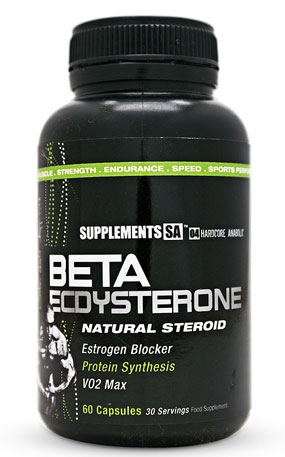 There is limited research on the impacts on humans, although some studies have shown that ecdysteroids can impact functions that ultimately lead to testosterone increase.
There is limited research on the impacts on humans, although some studies have shown that ecdysteroids can impact functions that ultimately lead to testosterone increase.
However, there is no known study on human subjects for this purpose and most research cases are conducted on other mammals and tailored towards other benefits.
Ecdysteroids, when consumed as supplements, may result in lowered bad LDL cholesterol and lowered blood glucose level. They are also considered healthy for the liver and gut as they improve protein synthesis and aid food digestion.
In some studies, ecdysteroids have been shown to improve muscle mass, growth, and development in mammals. While there are no proven testosterone-boosting impacts, most supplements and male enhancers still feature ecdysteroids within their formulas.
This is because ecdysteroids are a class of hormones involved in insect sexual reproduction and growth.
The appropriate daily dosage recommended for humans is 200mg. It is important to note that this ingredient does not boost testosterone directly but rather improves digestion, protein synthesis, and muscle development, all of which can impact testosterone production.
Therefore, it is advisable to choose supplements that contain some ecdysteroids rather than going for those only based on this a single class of hormones.
7. Fenugreek
Fenugreek, botanically referred to as Trigonella foenum-graecum, is one of the popular traditional plant medicines still used in modern medical practice. It is cultivated for use as food as its seeds contain around 45% dietary fiber, minerals, plant sugars, and vitamins.
Although fenugreek is commonly used to treat indigestion and stomach disorders, it is interestingly recommended for erectile dysfunction.
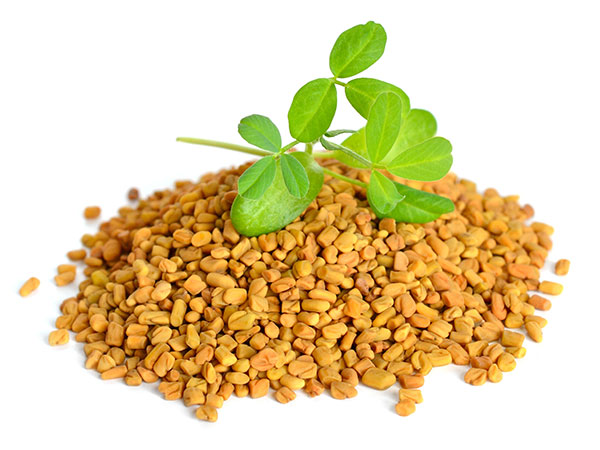 In recent studies, it was shown to boost testosterone in dosages between 500mg and 600mg. No signs of toxicity were seen after up to 10 weeks of consumption.
In recent studies, it was shown to boost testosterone in dosages between 500mg and 600mg. No signs of toxicity were seen after up to 10 weeks of consumption.
In one study conducted on 60 steel workers, 600mg of fenugreek was administered over 6 weeks, after which testosterone and prolactin levels were measured.
It was determined that fenugreek can help males maintain their levels of testosterone within the normal physiological limits and also boost levels in those with low testosterone. Other results were improved libido and increased muscle strength.
In another study, fenugreek was shown to inhibit aromatase and reductase, two main enzymes associated with the breakdown of testosterone and its consequent conversion to estrogen.
By partially blocking these enzymes, fenugreek ensures your testosterone levels increase. It also promotes the growth of lean muscle, aids fat loss, and results in energy surplus.
In a study conducted on rats, fenugreek was shown to increase the size of their testicles. In humans, it increases the levels of testosterone, luteinizing hormone, and prolactin. It also improves male virility, vitality, immunity, and libido.
It maintains the required testosterone levels to support androgenic functions and also limits enzymes that break down testosterone, thus causing an overall increase.
However, fenugreek consumption should be restricted to the above dosages, especially since higher doses have been associated with some undesirable side effects. To improve results, subjects can eat fenugreek seeds for food and meals made from the same.
This will naturally increase the availability of the important compounds and improve the benefits.
8. Holy Basil
Holy basil is a sacred plant to the Hindu religion and is often sighted at Hindu shrines. In Indian Ayurveda medical practice, the plant is used to alleviate various ailments, especially stress.
Herbal extracts from the leaves, seeds, and stem are believed to contain nutrients that reduce painful inflammation and also lower blood sugar levels in diabetic patients. It also shows promises for cancer patients.
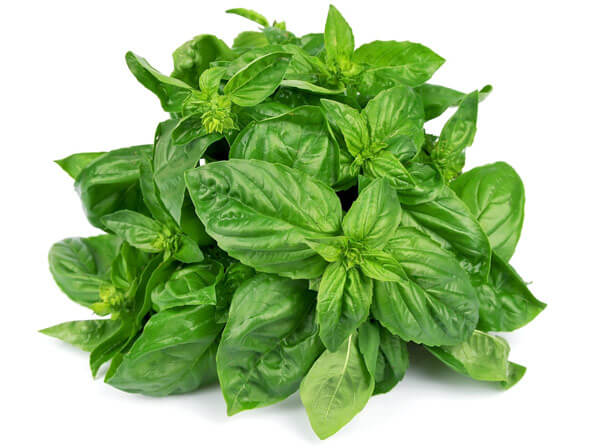 In more recent times, holy basil has gained a growing reputation for its testosterone boosting properties.
In more recent times, holy basil has gained a growing reputation for its testosterone boosting properties.
Although there are no reputable research studies conducted on human subjects to support these claims, tests on lab rats have suggested the extracts can be used to improve testosterone production in humans.
In one particular study conducted on male albino rats in 2010 at Sharma University of Health Sciences (India), testosterone levels increased to the maximum recordable level (five-fold) within a period of 30 days.
However, the study could not detect luteinizing hormones, which suggested that holy basil can increase testosterone to a level that inhibits production of luteinizing hormones.
The study suggested possible use in humans and since then, male enhancement manufacturers have added holy basil extracts to their testosterone boosting formulas.
Other test studies were mainly focused on sperm count, in which holy basil did not indicate any significant improvement. Besides directly impacting testosterone levels, holy basil is used to reduce stress and muscle tension while increasing energy and muscle strength.
These benefits are indirectly related to testosterone increase, especially since stress hormones may inhibit testosterone production and aid its breakdown.
More studies are needed to determine the dosage and safety of holy basil for testosterone, but there is no need for worry as the ingredient has been used in the medical world for many years without any reported negative side effect.
9. Massularia Acuminate
Massularia acuminate is one of the ingredients that have quickly gained popularity in the testosterone boosting supplement market. This plant is commonly grown in Nigeria and parts of West Africa and can be sighted in different male enhancers in the region.
In some countries within that region, it occurs naturally but can also be cultivated. Most West Africans chew on the plant for its aphrodisiac effects, although the plant has been part of traditional medical practice for the past thousand years.
 In recent years, studies have revealed that the herb may actually increase levels of luteinizing hormones and endogenous testosterone.
In recent years, studies have revealed that the herb may actually increase levels of luteinizing hormones and endogenous testosterone.
Increasing levels of luteinizing hormone is known to increase production of testosterone, although this is required to be “free” testosterone (not bound to SHGB).
Massularia acuminate contains alkaloids, polyphenolics, and saponins, which are said to support the production of natural testosterone when administered in dosages.
Studies have shown that higher levels of saponins will result in up to 60% increase in testosterone and 66% increase in luteinizing hormone. Subjects also reported increase in muscle strength and size, as well as improved sex drive and performance.
In one research study done in IIorine University in Nigeria, 60 male rats were divided into four groups. The first group (control group) was given 1ml of distilled water.
The second, third, and fourth were also given distilled water into which 250, 500, and 1000mg/kg massularia acuminate was added respectively.
Within the first three days, the researchers noted an increase in serum testosterone in rats that were given the herbal extract. An overall 77% testosterone boost was also noted.
It was noted as well that rats given the highest (1000mg/kg) dosage had more testosterone and luteinizing hormones. While these results were only attained in lab rats, there is compelling evidence that the same results can be imitated in human subjects.
In fact, most people who use supplements containing this ingredient attest to positive results that they witness after using the product.
10. Stinging Nettle
Botanically known as Urtica dioica, stinging nettle has been part of medicinal herbs for many years and is also used as a food source.
This herb, known for its itchy, hair-like leaf spikes that release burning chemicals when contacting the skin, is very versatile and has been used for sustenance (as food), as a laxative, diuretic, and also in cordage weaving.
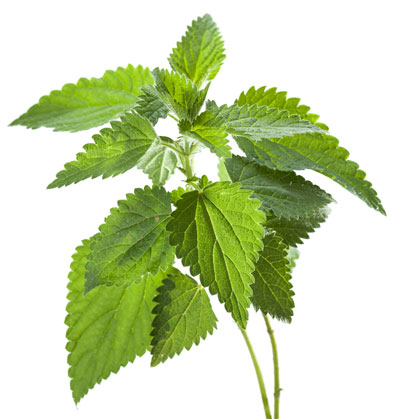 As a testosterone booster, stinging nettle is known to act in two main ways. Firstly, herbal extract from this plant contains phytochemicals that inhibit enzyme aromatase and reductase-5.
As a testosterone booster, stinging nettle is known to act in two main ways. Firstly, herbal extract from this plant contains phytochemicals that inhibit enzyme aromatase and reductase-5.
Aromatase is the enzyme that converts testosterone to estrogen, and inhibiting it assumedly causes an increase in testosterone and decrease in estrogen.
Reductase-5 converts testosterone to dihydrotestosterone, a more potent metabolite known to cause male pattern baldness and prostatic hyperplasia. By inhibiting this enzyme, stinging nettle ensures there is more active testosterone in the body.
Secondly, stinging nettle contains lignans, compounds which are known to bind to SHGB (sexual hormone binding globulin). SHGB is a protein compound used to transport and release sex hormones in the blood stream.
SHGB tends to attach to testosterone and make it inactive for quite a while. This may result in dropping levels of testosterone in the blood. The lignans in stinging nettle will quickly bind to SHGB and prevent the protein from binding with testosterone.
Research studies on lab rats and animal subjects have shown its ability to improve testosterone, particularly when combined with other ingredients.
However, more research is needed, especially since the herb contains a small amount of compounds that inhibit the aforesaid enzymes.
In human subjects, research studies have shown that stinging nettle can inhibit SHGB from binding with testosterone, but patients with benign prostatic hyperplasia may not experience any improvement from using stinging nettle supplements.
11. Coleus Forskohlii
Coleus forskohlii is a popular ayurvedic medicine used in Indian medical practice, mainly as a fat burner. It is essentially a labdane diterpene derived from the coleus forskohlii plant native to India. Several studies have revealed this ingredient to be a cAMP activator.
cAMP (cyclic adenosine monophosphate) is a messenger that boosts communications between cells and hormones. It also increases the activity, sensitivity, and production of hormones and is believed to impact testosterone production.
 Increased amounts of cAMP are associated with improved fat metabolism rate.
Increased amounts of cAMP are associated with improved fat metabolism rate.
Research studies have also shown that coleus forskohlii supplementation can boost testosterone levels and also prevent inflammation and cancer.
Although studies are still ongoing to determine whether this ayurvedic ingredient can increase testosterone levels through supplementation, studies already carried out show promising results.
Research studies that use rats as specimen have already yielded positive outcomes. In one particular study, rats that were given this ingredient for a period of 30 days had a 200% increase in testosterone levels.
The herb is approved for weight loss and fat loss uses, registering optimal results. It is believed that weight loss is one way to boost testosterone levels, especially in overweight or obese subjects.
The dosage recommended is 250mg of extracts that contain 10% forskohlii. The supplement should be taken twice a day (a total of 500mg per day). Other studies have shown forskohlii to activate different androgen receptors.
Through cAMP stimulation and activation of androgen receptors, forskohlii not only increases testosterone levels but also enhances its utilization. Those seeking testosterone effects will therefore experience improved performance, although more research is needed.
12. L-DOPA
Commonly referred to as Levadopa or L-3, L-DOPA is one of the popular precursors to dopamine and is actually converted to dopamine in the brain.
L-DOPA is often used alongside carbidopa in the treatment of Parkinson’s disease and associated symptoms like stiffness, shaking, and movement disorders. Carbidopa is given to prevent the conversion of L-DOPA to dopamine in the bloodstream.
 Besides treating Parkinson’s disease, L-DOPA has been researched for testosterone impacts and other areas. This ingredient is basically an amino acid found in various Mucuna family herbs such as Mucuna pruriens, Holtoni, Andreana, Gigantean, and Aterrima.
Besides treating Parkinson’s disease, L-DOPA has been researched for testosterone impacts and other areas. This ingredient is basically an amino acid found in various Mucuna family herbs such as Mucuna pruriens, Holtoni, Andreana, Gigantean, and Aterrima.
Other sources include Tamarindus indica, Sesbania bispinosa, Acacia leucophloea, and Entada scandens, among many others.
In one research study conducted on lab rats, those given L-DOPA were shown to have higher levels of testosterone than the control rats that did not receive any supplementation.
The study also indicated a rise in luteinizing hormone in rats given 20mg, 100mg, and 200mg per kg.
Prolonged supplementation of L-DOPA has been proven to raise the amount of luteinizing hormones in both rodents and humans, although no studies for testosterone have been conducted on humans.
L-DOPA also becomes dopamine in the brain, causing various effects associated with the neurotransmitter. Dopamine is known to boost moods, focus, performance, energy, and even sexual drive.
By eliminating stress, L-DOPA prevents the release of hormones that may inhibit testosterone production and utilization. Increased focus and energy also promote metabolism and workout performance.
In lab rats, the ingredient resulted in a 2 week improvement in testosterone circulation. It is expected to provide a temporary boost in humans and therefore requires regular supplementation of 160mg/kg per day, which is the recommended dosage.
13. Anacyclus Pyrethrum
This is yet another ayurvedic aphrodisiac that shows much promise with regards to testosterone boosting. Anacyclus is offered mainly to improve male virility and vitality. It is also recommended as a brain tonic.
This herb has been studied to have effects similar to maca root and spilanthes acmella.
 Although studies on humans are still preliminary, there is sufficient evidence to back up its fertility and increased libido claims. Other effects include anti-amnesia and anti-convulsion.
Although studies on humans are still preliminary, there is sufficient evidence to back up its fertility and increased libido claims. Other effects include anti-amnesia and anti-convulsion.
The main active ingredients that deliver the libido boosting properties are referred to as alkylamides.
Even though no research studies have been conducted on humans, tests done on rodents and lab rats already indicate the herbal extract derived from this plant can result in testosterone boosting.
As aforementioned, testosterone is the key hormone involved in the development and manifestation of male characteristics. Ingredients that result in improved male virility and vitality are often associated either directly or indirectly with testosterone production or activity.
It is not yet known how anacyclus pyrethrum may improve male virility, since studies are still in working progress. Nonetheless, this plant is rich in minerals and vitamins that aid digestion and boost immunity.
Optimized health is always needed for improved testosterone production and utilization. The recommended dosage depends on the weight of the subject.
A 150lb person should take between 550 and 1,600mg, a 200lb subject should take between 700 and 2,200mg, and a 250lb candidate should take 900 to 2,700mg.
While daily supplementation is required to build up the effect, users are expected to terminate dosage within a few months.
However, it is important to know that the supplement will generally have long-lasting impacts once your body is accustomed to producing more testosterone.
14. Spilanthes Acmella
This is a century long medicinal plant commonly used to relieve toothaches and different types of pains that occur in the mouth region. It is also used to treat fever and in recent studies, Spilanthes acmella has been touted to boost testosterone levels.
It is a natural aphrodisiac, and the herbal extract has a long recorded history of use in ayurvedic medicine as an analgesic and aphrodisiac.
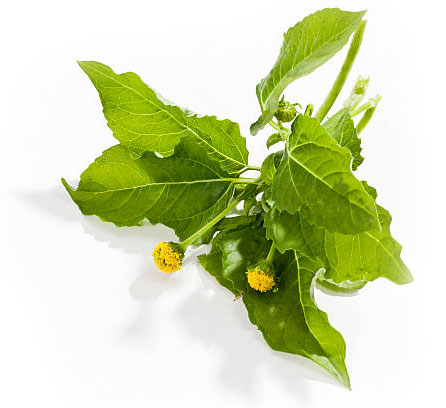 In traditional medical practice, the leaves of this herb were chewed to treat rheumatism, inflammation, sore throat, fever, gum infections, sore mouth, and tongue paralysis, among others ailments. It was also consumed as food and is said to have anti-malarial properties.
In traditional medical practice, the leaves of this herb were chewed to treat rheumatism, inflammation, sore throat, fever, gum infections, sore mouth, and tongue paralysis, among others ailments. It was also consumed as food and is said to have anti-malarial properties.
With regards to testosterone boosting, Spilanthes acmella was given to two controlled groups of mice. After 28 days, the group that received 50, 100, and 150mg/kg of Spilanthes acmella had higher levels of luteinizing hormone and follicle stimulating hormones.
Serum testosterone levels also increased, which is a suggestion that the ingredient can impact testosterone levels in humans. Studies have associated Spilanthes acmella with increased sexual drive, improved ejaculation, and performance “consistency”.
Although it is not clear how the ingredient improves sexual drive, researchers connect this with the nitric oxide boost that Spilanthes acmella stimulates when taken as a supplement.
Nitric oxide levels are always associated with blood circulation and release of sexual hormones. It also contains the same class of N-Akylamides found in Anacylus pyrethrum.
When the dosage given to rats is translated to humans, researchers recommend around 1500mg per day for 150lb males. However, users have reported positive results from doses that contain 300-600mg only, which is quite remarkable.
It is important to note that most forms of this ingredient are highly polar, and therefore require food to be effectively absorbed and used by the body.
15. Ginger
Ginger is one of the most popular culinary ingredients, but its uses go beyond garnishing. In fact, ginger has numerous medicinal properties and has been part of traditional medical practice in all the regions it is grown.
Ginger is used in the treatment of motion sickness, stomach upsets and indigestion disorders, colic, diarrhea, vomiting, and nausea, among others. It is recommended to arthritis patients to alleviate pain and has also been suggested to cancer patients.
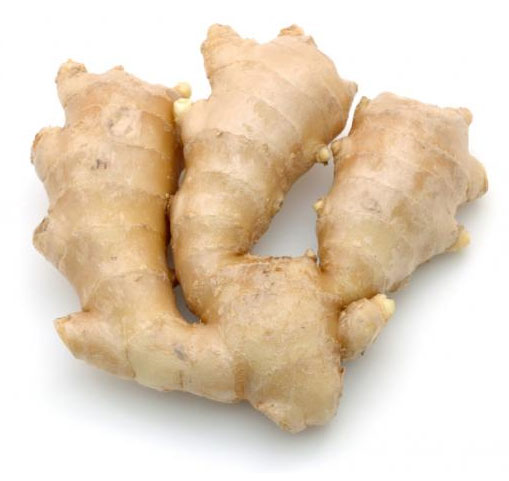 Ginger is believed to have special effects on various brain functions and the nervous system. Its juice is sometimes applied to improve the healing of burns and bruises. When looking for testosterone boosters, you will definitely come across ginger suggestions.
Ginger is believed to have special effects on various brain functions and the nervous system. Its juice is sometimes applied to improve the healing of burns and bruises. When looking for testosterone boosters, you will definitely come across ginger suggestions.
This is mainly because its impact is backed by research proof. In one research study conducted in 2012, 100 male participants (75 infertile and 25 fertile) were given ginger treatment for 28 days.
The study was aimed at determining the impact of ginger on luteinizing hormone, testosterone, and other semen components. It was determined that ginger increased testosterone levels by 17.7%.
Infertile men were then given higher amounts of ginger treatment and this resulted in a rise in luteinizing hormone.
In another research test conducted at the University of Sfax in Tunisia, rats that were given ginger treatment had higher testosterone levels than those that received no ginger.
Several studies have been conducted on lab rats all over the world and they always indicate a rise in the level of serum testosterone and luteinizing hormones.
Although only one study (done in Tikrit University, Iraq) used human subjects, researchers generally agree that ginger can boost the amount of serum testosterone in humans and therefore promote more testosterone production.
Increase in LH also contributes to more testosterone in the body. Incorporating more ginger into your regular diet is a recommended way to hike up your ginger intake, although you can find supplements of ginger readily available in the market if you want faster action.
16. Tulbaghia Violacea
Also known as wild/sweet garlic, Tulbaghia violacea is a traditional herb native to African countries. The herb extract from this plant is used in treatment of ear infections and is also known for its heart health properties.
In recent times, evidence has emerged linking the herb with testicular benefits, particularly a boost in testosterone.
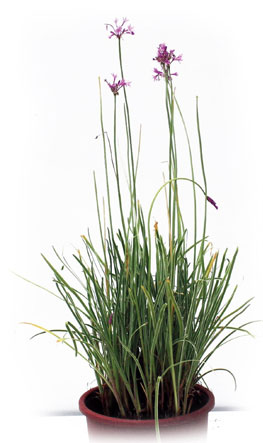 Although there are no comprehensive human studies to support this herb’s ability to increase testosterone levels, one in vitro study is the main support for this benefit.
Although there are no comprehensive human studies to support this herb’s ability to increase testosterone levels, one in vitro study is the main support for this benefit.
In this study, testicular cells were placed in incubated environments and varying amounts of Tulbaghia violacea was added to the cells. When the amounts reached 312.5ug/ml, the luteinizing hormone immediately began stimulating the secretion of more testosterone.
Higher levels of Tulbaghia resulted in more testosterone secretion. While these studies were very promising and led to the inclusion of Tulbaghia violacea in modern testosterone boosters, it is not sufficient to offer a collaborative statement on the subject.
More research is needed to determine the effectiveness and appropriate dosage required to boost testosterone levels in human subjects.
Nonetheless, the herb improves heart health and also impacts the immune system. Optimal health and heart function will definitely support various body functions, including testosterone production, especially since ailments result in premature aging of cells.
The study only indicated that Tulbaghia aids the release of testosterone from the testicles as a direct result of LH (luteinizing hormone) stimulation.
It is important to note that Tulbaghia supplements should not be taken for prolonged durations as it can result in gastrointestinal distress and inflammation.
17. Bulbine Natalensis
Bulbine natalensis is a common herb found in South East Africa and South Africa. It has been part of these cultures to use Bulbine natalensis as an aphrodisiac, and recent research studies have also revealed it to be a potent testosterone booster, especially in rat subjects.
Due to its effects on cognition and sexuality, this herb attracted researchers into determining its effect on testosterone production, availability, and utilization.
 In most studies conducted on lab rats, Bulbine natalensis resulted in increased serum testosterone as well as circulatory testosterone.
In most studies conducted on lab rats, Bulbine natalensis resulted in increased serum testosterone as well as circulatory testosterone.
In the rat studies, results produced a bell curve as rats that were given 50mg of Bulbine natalensis had the most impact over those given 25mg and 100mg. Although Bulbine natalensis has shown potent results in lab rats, there are no human studies conducted with the herb.
More concerning, though, is the fact that research studies also revealed various negative side effects, including liver and kidney damages similar to those experienced from steroid cycles.
The herbal extract from this plant may increase the presence of luteinizing hormones, follicle stimulating hormone, and testosterone, but organ damages are delicate concerns.
More research is needed to determine the safety and dosage required if Bulbine natalensis is to be used by humans. Low levels of the herbal extract can be found in some supplements.
It is advisable to consult your doctor before taking any supplements that contain this herb, especially if you have an underlying medical condition or are taking other medications.
Nonetheless, this is a requirement before taking any supplement so as to avoid any bad side effects or complications after using the product.
18. Dehydroepiandrosterone
Dehydroepiandrosterone, popularly known by the acronym DHEA, is one of the most researched groups of supplements, especially since DHEA naturally occurs in the human body.
DHEA is recommended to people suffering from chronic depression, obesity, lupus, and adrenal insufficiency. It has also been suggested for osteoporosis treatment, erectile dysfunction remedy, and treatment of some psychological disorders.
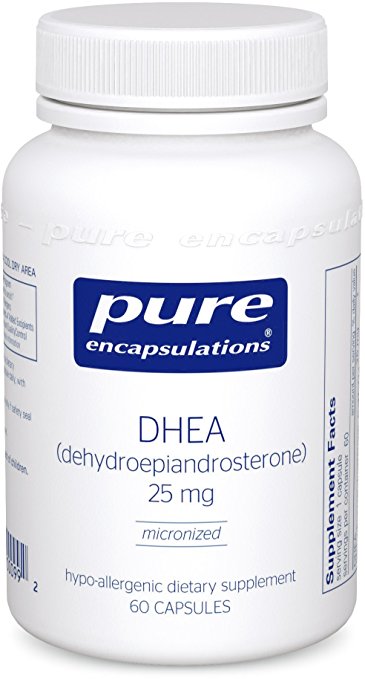 Dropping levels of dehydroepiandrosterone are often associated with diseases like diabetes type 2, HIV, and anorexia. A mortality link or risk of death among males has also been connected with low levels of dehydroepiandrosterone.
Dropping levels of dehydroepiandrosterone are often associated with diseases like diabetes type 2, HIV, and anorexia. A mortality link or risk of death among males has also been connected with low levels of dehydroepiandrosterone.
Several research studies have been conducted on the impact of DHEA on testosterone production and levels.
Since dehydroepiandrosterone occurs naturally in the body and levels only drop with age or illness, supplementation is expected to restore the positive benefits of this essential compound.
In one study conducted in 2013 on male subjects around 49 years old, subjects were given 50mg of dehydroepiandrosterone 12 hours before high intensity interval training. The results showed that DHEA improved testosterone levels above baseline levels.
In another test study conducted on female subjects at the University of Connecticut, DHEA was shown to increase the presence of various natural hormones, including testosterone, estrone, and estradiol. It also reduced SHGB.
Most research studies reveal that dehydroepiandrosterone has a direct impact on both free and total testosterone levels, especially in male subjects.
Studies that did not record an increase in total testosterone levels still indicated a rise in free testosterone, which shows that DHEA impacts both secretion and utilization.
It is one of the most reputed ingredients in the testosterone world and makes it into many male enhancers and boosters currently available in the market. However, supplementation should be restricted to prescribed doses for optimal performance.
19. Cordyceps
Cordyceps have been available for centuries and was part of traditional Chinese medical practice, but also used as food. Essentially, they are fungus that grow inside the ghost moth butterfly, eventually killing and mummifying the butterfly.
When this happens, a fruity mushroom which is harvested for its medicinal properties grows out of the decomposing moth. Cordyceps were very difficult to harvest in the past and became one of the most expensive foods.
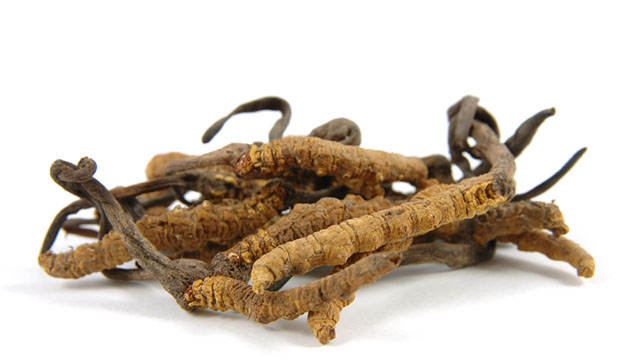 In modern times, it is possible to cultivate these mushrooms, and their benefits range from endurance enhancement to fatigue alleviation, lung and respiratory system protection, enhanced lactic acid metabolism, anti-tumor, immune modulation, and cholesterol reduction.
In modern times, it is possible to cultivate these mushrooms, and their benefits range from endurance enhancement to fatigue alleviation, lung and respiratory system protection, enhanced lactic acid metabolism, anti-tumor, immune modulation, and cholesterol reduction.
Cordyceps also contain antioxidants, anti-viral, and sexual drive compounds. It is known to have cardio-protective effects and also strengthens the liver and kidneys.
The impact of cordyceps on testosterone production and utilization has been researched extensively, especially since these are edible ingredients. In one study conducted on mice, testosterone levels increased by up to 170% following consumption of cordyceps.
This is because they contain polysaccharides and glycoprotein that resemble luteinizing hormone and bind to the LH receptors, stimulating the production of testosterone.
Although normal consumption of cordyceps will provide these benefits, oral supplementation can help you quickly achieve these results, especially if you cannot readily find the cordyceps foods.
This ingredient also boosts energy, enhances immunity, and promotes optimal health. This combined effort ultimately makes it possible for more testosterone to be produced.
These mushrooms have been used in China, Taiwan, and other Asian countries as dietary additions, but are believed to generally boost male characteristics and improve the conditions of those with low testosterone levels.
20. King Oyster Mushroom
King oyster mushroom, botanically referred to as Pleurotus eryngii, is a popular member of the Pleurotus family of mushrooms and offers large meaty stems.
While it is different from the conventional group of oyster mushrooms (bioactive mushrooms), it is closely related in terms of properties and its interaction with the immune system.
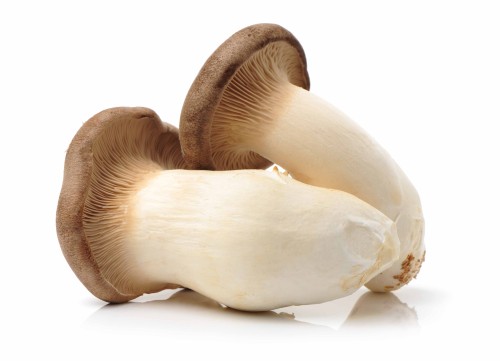 King oyster mushroom has been used in the medical world for a long time and it is also considered a dietary addition. With regards to testosterone boosting capabilities, the king mushroom has been studied on various levels.
King oyster mushroom has been used in the medical world for a long time and it is also considered a dietary addition. With regards to testosterone boosting capabilities, the king mushroom has been studied on various levels.
One particular study was conducted on elks at the Animal Science Institute in Korea. 18 elks were given SMS (spent mushroom substrate) derived from the king oyster mushroom over 80 days.
The elks were divided into three groups: one was used as a control group while the others were given 15% and 20% of the diet. The study revealed that elks in the treatment groups had a 20% increase in the level of their testosterone.
The study further determined that the boost in testosterone was not caused by increased production, but rather an inhibitory effect on enzyme aromatase, which is known to convert testosterone to estrogen.
This was a positive indication that king oyster mushroom herbal extract can boost testosterone levels in the body.
However, studies on human subjects are yet to be conducted. Most researchers recommend the consumption of king oyster mushroom in addition to other ingredients that have already been proven to boost testosterone.
The mushroom by itself is not fully effective as a testosterone booster, but it can improve the testosterone levels when combined with other approaches. One way to go about it is through incorporating more king oyster mushrooms in your diet.
It is also advisable to consult your doctor, especially if you have had previous allergies or complications following mushroom consumption.
21. Hibiscus Macranthus
Macranthus is one of the numerous species found within the Hibiscus family. Hibiscus macranthus is a popular plant native to West Africa.
It is commonly found in the regions of Cameroon, where it has been used for ages to address male fertility, regulate female , and also remedy female infertility.
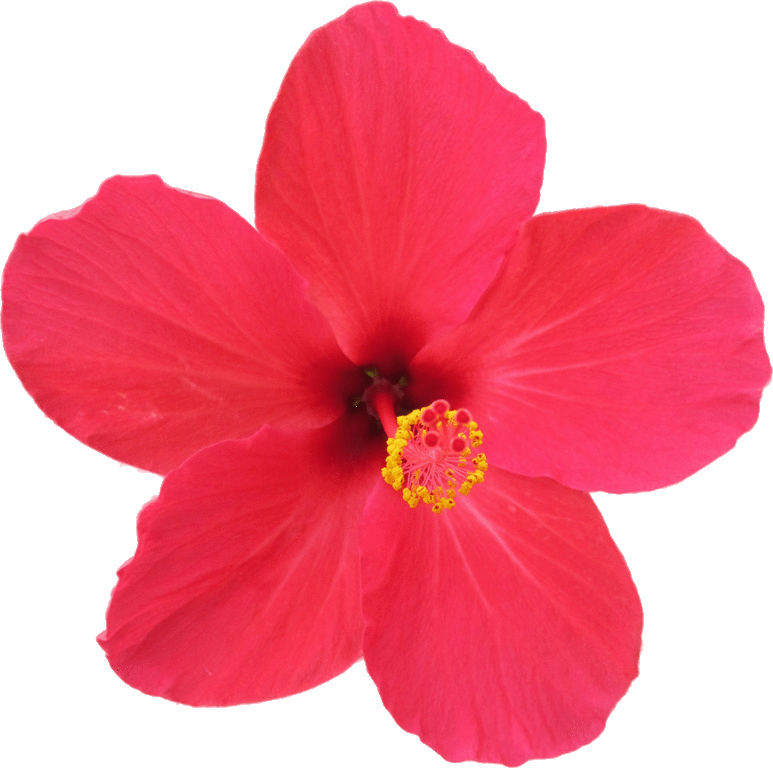 In recent years, research studies have suggested that Hibiscus macranthus can be used to boost testosterone levels.
In recent years, research studies have suggested that Hibiscus macranthus can be used to boost testosterone levels.
This concept sprung up following a publication in the Asian Andrology Journal. In the publication, researchers identified the methyl chloride found in herbal extracts from the plant as major compounds involved in the process.
Other research studies have been conducted, mainly to assess the impacts of macranthus on weight gain, energy, and strength, although most of them use lab rats and rodents rather than human subjects.
In one particular research study done at Yaounde University in Cameroon, lab rats were given ethanol extracts from Hibiscus macratnhus to determine the impact on testosterone production.
The results drawn indicated that testosterone levels increased significantly at doses of 10g/ml.
However, doses higher than 100g/ml resulted in a drastic drop in testosterone levels, which led the researchers to draw no correlation between the herb and androgenic properties.
In another test in the same University, rats were given herbal extract from Hibiscus macranthus for 28 days. On the 15th day, serum testosterone levels were noted to have increased by 80%.
Hibiscus macranthus is often used in combination with Basella Alba in Cameroon’s traditional medical practice. The research studies also used extracts from both plants. Most supplements provided also include both ingredients when one is featured.
Although it is not conclusive how Hibiscus macranthus increases serum testosterone levels, especially since there are no human-based studies, researchers still recommend it for those looking to improve their testosterone production.
22. Basella Alba
Basella alba is another popular West African herb used to remedy male infertility and boost libido. In Cameroon and Asia, extracts from this plant have been used to increase interest in sex and address male fertility issues.
This leafy weed is also used as food and forms part of the traditional diet where it is cultivated. Stemming from its use in enhancing libido and fertility, researchers have spearheaded various studies to determine its impact on testosterone levels.
 Some believe it contributes to increasing levels of free testosterone and also helps in the regulation of estrogen.
Some believe it contributes to increasing levels of free testosterone and also helps in the regulation of estrogen.
Studies have revealed that Basella alba contains compounds that stimulate production of more androgens and estrogen. These two are very important, as their balance is required for optimal male sexual production.
In laboratory studies done on rats and mice at the University of Yaounde in Cameroon, Basella alba has shown much promise with regards to testosterone increase.
Almost all the studies result in a boost in both serum testosterone and free testosterone levels in male rats. Other studies also revealed a boost in estradiol.
Basella alba is often used in combination with Hibiscus macranthus, and the combination is what has been used to address male and female infertility issues in West Africa’s traditional medical practice.
Basella alba is a common ingredient in some testosterone boosters, and it was proven to be safe without any negative side effects. The leaves can also be cooked and consumed as food to increase the release of potent compounds believed to boost testosterone levels.
Although there are no studies conducted on human subjects, there seems to be a universal agreement among researchers that Basella alba has testosterone boosting properties, and testimonials from users also tell the same story.
It is one of the few ingredients that draw certainty, and most physicians recommend the herb, particularly since there are no safety issues surrounding its consumption.
23. Boron
Boron is one of the most overlooked minerals, and it is never listed as an essential mineral required for human survival. This is because boron is a rare mineral that makes up only 0.001% of the earth’s crust, and it is thought to be a left over from the big-bang.
However, emerging research studies have revealed that boron could be the single most effective natural testosterone booster of all time, beating common choices like zinc and iodine.
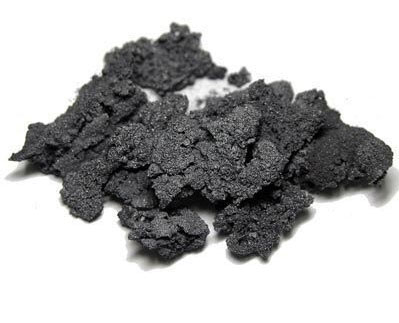 Boron is a naturally existing mineral found in earth’s crust and in superfoods such as avocado, currants, apricots, prunes, peaches, grapes, almonds, lentils, cashew nuts, pistachios, wine, peanut butter, and walnuts.
Boron is a naturally existing mineral found in earth’s crust and in superfoods such as avocado, currants, apricots, prunes, peaches, grapes, almonds, lentils, cashew nuts, pistachios, wine, peanut butter, and walnuts.
Although there is no set RDA (recommended daily allowance), particularly since no biological need for boron has been identified, researchers recommend a daily dose of 10mg supplementation.
In one research study, eight male subjects were given the same 10mg dose of boron for one week. When the impacts of this element were tested, it revealed that testosterone levels had gone up by 28%.
Free estrogen levels also dropped by 39% while DHT (dihydrotestosterone) went up by 10%. Inflammation biomarkers like hsCRP and TNF-α also dropped significantly.
In another research study conducted to determine the impact of boron on serum Vitamin D and free testosterone, the results indicated a rise in both after male subjects were given 6mg boron for 15 days.
Studies conducted on male rats resulted in a 160% increase in total testosterone levels. There is much scientific evidence supporting the ability of boron supplementation to boost testosterone levels, and more studies are still being conducted on the biological need for boron.
It is advisable to keep boron dosage between 3 mg and 25 mg to increase testosterone levels.
24. Velvet Antler
Velvet antler is commonly derived from deer and elk antlers, crushed, and provided as orally consumed supplements. Crushed velvet antlers were heavily used in traditional Chinese medical practices, mainly as preventative medicine rather than curative.
Velvet antler has been deemed safe for consumption, but it is surrounded by various uncertainties and disputes.
 Research studies have failed to identify its impact on hormone production or regulation, and studies that support its role in muscle growth and strength have also been challenged.
Research studies have failed to identify its impact on hormone production or regulation, and studies that support its role in muscle growth and strength have also been challenged.
In traditional medical practices, the Chinese used velvet antlers to improve fracture and bone healing rates. It was also believed to possess anti-additive properties and is known to improve skin regeneration.
However, more research is needed to provide authority on these suggestions and uses. The required dosage for velvet antler is 500mg per day in one supplement taken once.
Velvet antler is one of the more versatile supplements used by men, women, and children alike for different purposes. It has been suggested to increase the level of different sex hormones such as testosterone and estrogen.
In fact, the antlers are recommended to boost fertility, improve sex drive and interest (as an aphrodisiac), and in the treatment of erectile dysfunction and other sexual performance issues.
Women use velvet antler to cut down the amount of estrogen needed for hormone therapy, while children are given the supplements to correct stunted growths and remedy bone problems.
Most research studies fail to support the promoted performance of velvet antler and some even suggest it does not work at all.
Nonetheless, some studies have shown that combining velvet antler with other testosterone boosting ingredients will drastically improve the expected results.
However, taking velvet antler independently is less likely to result in any increase in testosterone levels, particularly since the compounds within this ingredient are tailored towards growth and bone development.
25. Paederia Foetida
Paederia foetida is a popular flowering plant native to tropical climates and is mostly sighted in the Polynesian islands, Asia, and Hawaii. It is recognized for its distinct sulfurous smell, and some people refer to it as skunk vine.
Paederia foetida is known to have various medicinal properties, including antimicrobial, antifungal, antioxidant, and anti-inflammation capabilities. It also contains healthy dietary fatty acid and ursolic acid, which have been associated with anabolic functions.
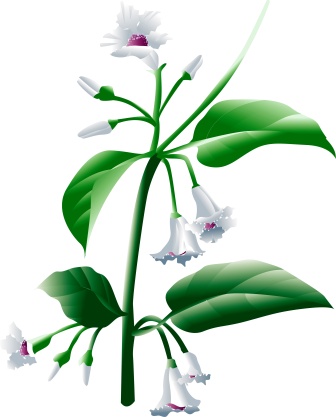 In recent times, Paederia foetida has been linked with testosterone boosting capabilities, stemming from limited research studies conducted on lab rats.
In recent times, Paederia foetida has been linked with testosterone boosting capabilities, stemming from limited research studies conducted on lab rats.
In one particular study conducted in Dr. H.S. Gour University in India, herbal extracts from Paederia foetida were given to male rats to determine its impact on testosterone production and spermatogenesis.
Male rats were given 50, 100, and 200mg/kg of ethanol-like extracts derived from the plant. Within 28 days, rats that were given the highest doses (200mg/kg) recorded a 100% increase in testosterone levels.
Other revelations include increased sexual potency (intromission frequency), which led the researchers to conclude that Paederia foetida was a potent aphrodisiac.
They also made conclusions recommending the herbal extract for testosterone boosting functions, although more studies were needed before assurance.
In another research study done in 2014 in India on the safety of the extracts, dosages higher than 200mg/kg were found to be potentially toxic.
Researchers highlighted that low dosages were safe for daily supplementation for those who want to boost their testosterone levels naturally.
The main mode of action is yet to be determined and more research is needed, especially since the results provided were from rodents rather than human subjects.
Nevertheless, the ability of Paederia foetida to boost testosterone levels is in no doubt among the research community.
26. Butea Superb
Butea superb, also known as Red Kwao Krua, is a flowering crawler plant native to the North Eastern forests of Thailand. It is recognized by its vibrant yellow/orange flowers and has been used for hundreds of years in traditional Thailand medical practice as an aphrodisiac.
The herbal extracts from Butea superb leaves and roots have been used to increase sexual appetite, vigor, strength, and power.
 Its roots in particular contain a wide range of glycosides and sterol compounds, as well as butenin, which is the main compound that distinguishes this species from others in the family.
Its roots in particular contain a wide range of glycosides and sterol compounds, as well as butenin, which is the main compound that distinguishes this species from others in the family.
Several research studies have been conducted on Butea superb’s ability to increase testosterone levels. However, most of these studies were conducted on animals and only two human research studies have been successfully completed.
In one study, males of varying ages were given 100mg daily doses of Butea superb herbal extract for three months. The studies revealed an 11% increase in testosterone levels in the subjects.
In another case study, a 35 year old Thai man took the herb for two weeks to remedy his hair loss problems. He reported an increase in sexual drive and when tested, his blood recorded a 1.7% increase in testosterone levels.
While this increase was minimal, the supplement registered a significant (67%) increase in dihydrotestosterone.
Ironically, one study conducted on Wistar rats determined that higher doses (200mg/kg) of Butea superb actually resulted in low levels of luteinizing hormone and serum testosterone level.
Researchers have since concluded that the herb is definitely an aphrodisiac that can contribute to better sexual drive and performance. It can also boost testosterone levels if consumption is restricted to low doses.
Elevated doses can result in negative impacts on testosterone production and utilization, although the herb is considered safe for use.
27. Pedalium Murex
Pedalium murex is a less popular fruit bearing herb that is often confused with Tribulus terrestris. This herb is native to parts of India and is also found in other Asian countries.
Although there is limited formal research of its impact on testosterone levels, one study conducted at Gour University in India indicated that the herb can result in permanent changes in testosterone levels.
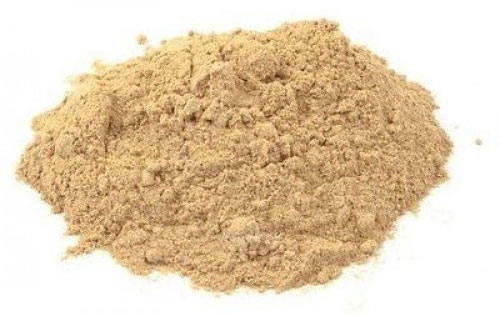 This study was based on lab rats that were given Pedalium murex supplements for a few weeks. When tested, the rats had raised testosterone levels which remained high even after supplementation was terminated.
This study was based on lab rats that were given Pedalium murex supplements for a few weeks. When tested, the rats had raised testosterone levels which remained high even after supplementation was terminated.
However, the testosterone levels gradually started dropping two weeks after supplementation was stopped. For lab rats, researchers determined that a daily dosage of 200mg/kg was ideal for optimal testosterone production.
When translated to humans, a dose of 2,200mg for a 150 pound subject and 3,600mg for a 200 pound human is recommended.
Pedalium murex has been used for ages throughout Asia as an aphrodisiac that boosts sexual interest and libido. It has also shown potential in improving urinary health and increasing sperm motility in human subjects.
Nevertheless, it has not been researched on humans with regards to boosting testosterone. Unfortunately, other research studies have shown testicular damages when higher doses were given to rats.
Conclusions seem to support its use for testosterone boosting, but more research needs to be done to determine the overall effectiveness and safety.
Currently, it is only recommended in small doses for optimal improvement in testosterone, as the herb works by preventing LH and testosterone from binding with SHGB.
28. Aframomum Melegueta
Also known as alligator pepper, Afromomum melegueta is an ancient medicinal herbaceous plant found within the same family as ginger. Its seeds are often ground and used in culinary preparations as food seasoning.
The health benefits of Afromomum melegueta are varied, ranging from stomach upset relief to treating indigestion and other digestive issues. It is said to possess anti-diabetic and anti-obesity properties, although research is needed in both areas.
 It has also been touted with regards to being an aphrodisiac and a testosterone booster.
It has also been touted with regards to being an aphrodisiac and a testosterone booster.
A few research studies have been conducted to determine its effect on testosterone levels and spermatogenesis, and they suggest it could be a potent addition to the testosterone boosting ingredients.
In one study done on male albino Wistar rats at the University of Uyo in Nigeria, researchers found that subjects given Afromomum melegueta had raised levels of testosterone when compared to the control groups.
However, the study also revealed that toxicity could increase with dosage and therefore recommended dose restriction kept to small amounts.
In another study conducted in 2012 at the University of Yaounde in Cameroon, testosterone levels in lab rats given Afromomum melegueta increased by 300%, for both serum/blood levels and direct testicular testosterone.
The study also revealed no significant difference in testosterone levels of rats given lower and higher doses of the supplement.
While most research studies done on Afromomum melegueta are limited to animal subjects, the results indicate a significant increase in testosterone levels. Researchers concluded that the herbal extract from this plant can be used to improve testosterone levels in humans.
From the research studies, it is advisable to use lower doses, especially since one study revealed toxicity when higher doses are used while another showed no difference in testosterone levels based on amount of Afromomum melegueta consumed.
It is therefore safer to avoid higher doses as this will not necessarily lead to more testosterone production.
29. Hibiscus Rosasinensis
This is yet another Hibiscus species linked with the ability to boost testosterone in humans. Known by many names, such as the Chinese hibiscus, Hawaiian hibiscus, or shoe flower, rosasinensis is an evergreen shrub that grows up to 16 feet tall.
It produces shiny leaves and red flowers during fall and summer. Hibiscus rosasinensis has been used in hair care products, treatment of ulcers, and as part of shoe shine products in India. Its flowers are edible and often used in salads in tropical regions.
 Over the years, Hibiscus rosasinensis has developed various medicinal uses, especially in herbology and traditional Chinese medical practice.
Over the years, Hibiscus rosasinensis has developed various medicinal uses, especially in herbology and traditional Chinese medical practice.
It has also been widely researched with regards to its impacts on testosterone, although all the studies are conducted on rats rather than human subjects.
In one study conducted at the North Bengal Medical College in 2013, researchers sought to determine the impacts of Hibiscus rosasinensis on spermatogenesis in male albino rats.
Aqueous herbal extract derived from the shrub were given in 150mg and 300mg doses to different groups for 30, 45, and 60 days.
The results proved that Hibiscus rosasinensis raised testosterone levels significantly, although damages to the testes were also seen in rats that took the extract for 60 days.
Other studies conducted in Nigeria also indicated that Hibiscus rosasinensis results in raised testosterone levels, especially when given in higher doses. Most tests seem to support the fact that Hibiscus rosasinensis eventually leads to more testosterone in the blood.
However, there are various concerns, especially since many studies also outline damages to the testes cells. In some cases, the male reproductive organs of the rats given higher doses for longer periods were severely damaged.
This calls for more research not only on the effectiveness, but also on the safety and appropriate dosage required for humans.
Nevertheless, the consumption of its flowers in salads is not associated with any negative side effects and is a perfect way to start harnessing the benefits of this herb pending more tests on supplementation.
30. Syzygium Aromaticum
Syzygium aromaticum is the botanical name given to a specific type of cloves native to Southern Asia, Indonesia, and India. This clove has been used as a natural aphrodisiac to boost libido and sexual drive, and to prevent premature ejaculation in men.
It has also been linked with increasing testosterone levels in both men and women. Cloves have a wonderful aroma and can be added (in dashes) to beverages like tea or coffee.
 It is also a breath freshener and ancient Chinese people needed to chew on cloves before speaking to an emperor.
It is also a breath freshener and ancient Chinese people needed to chew on cloves before speaking to an emperor.
From research studies conducted on its impacts on male reproductive function, cloves have been shown to significantly raise testosterone levels in the blood and testes. However, there are concerns where large amounts of cloves are involved.
For optimal performance, only small dashes of cloves are necessary. Elevated levels have been shown to result in testes damage in lab rats, calling for concerns regarding its supplementation.
Cloves have several medicinal uses, ranging from pain relief to anti-inflammation and treatment of tooth diseases. It is sometimes referred to as the antioxidant king, as it contains the highest number of natural antioxidants than any other food.
Research studies conducted on lab rats revealed that lower doses of cloves had a better impact on serum testosterone than higher doses.
Unfortunately, one study indicated that consuming more cloves regularly will eventually cause organ damage and lead to low testosterone. More tests are required to determine the safety and appropriate dosage required to boost testosterone levels.
Nonetheless, cloves are traditional medicinal plants used as natural aphrodisiacs, and their impact on sexual performance is undisputed.
It also has several health benefits, and you can find supplements that contain a small amount of cloves instead of buying independent clove supplements separately.
This way, you will be able to maintain low consumption and avoid the negative impacts associated with taking large amounts of cloves regularly.
31. Bryonia Laciniosa
This is one of the few climbing plants that have actually been linked to testosterone boosting. Bryonia laconiosa is common in parts of India and Asia. It produces green gourd fruits (similar to squash) that turn red when ripe.
Bryonia laconiosa has been used in traditional medical practices to treat urinary tract diseases, as well as remedying some of the symptoms of rheumatism.
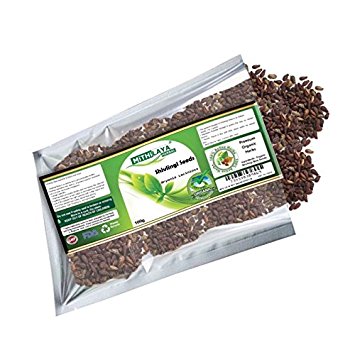 Other uses of Bryonia laconiosa include stimulation of the immune system, and some have suggested it boosts longevity.
Other uses of Bryonia laconiosa include stimulation of the immune system, and some have suggested it boosts longevity.
In the last decade, researchers have pondered the possibility of using herbal extract of this plant to increase testosterone levels. This led to research conducted at Gour University in India in 2010.
In this study, male albino rats were given extracts from Bryonia laconiosa seeds in 50mg, 100mg, and 150mg doses over a period of 28 days.
When the rats were tested, they registered a six fold increase in serum testosterone levels, as well as increases in luteinizing hormone, testicle size, and prostate weight.
Serum testosterone is the amount of testosterone found in blood, different from free testosterone that is not bound to SGBH. The rate of intromission latency also increased, which led researchers to recommend Bryonia laconiosa as an aphrodisiac.
Unfortunately, only one study has been conducted on Bryonia laconiosa with regards to its impacts on testosterone levels. In the absence of human research studies, it is difficult to fully conclude that the extracts can address low testosterone issues.
However, rat studies have shown much promise and the plant is not linked with any negative side effects, which is a good sign. Moreover, it has been part of traditional medical practice for a long time and has various other medical benefits.
Based on the one study, Bryonia laconiosa can offer tremendous results in boosting serum testosterone if included in supplement formulas.
32. Fadogia Agrestis
Fadogia agrestis, also known as Bakin gagai and Black aphrodisiac, is a traditional African natural herb mainly found in the Western regions of Nigeria, and also in Ghana and Sudan.
In traditional African medical practices, the natives used Fadogia agrestis as an aphrodisiac believed to provide various pre-erectile benefits, including improved sex drive and ease of erection.
It was also used to boost libido and male virility. Although this does not necessarily mean it b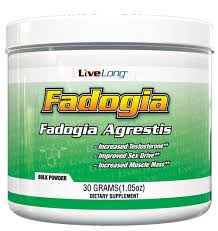 oosts testosterone levels, it was enough motive for researchers to ponder the possibilities.
oosts testosterone levels, it was enough motive for researchers to ponder the possibilities.
There is limited research on the impacts of Fadogia agrestis on testosterone levels, especially since the formal studies have been done on rat subjects rather than humans.
In one study conducted at the University of IIorine in Nigeria, four groups of lab rats were given extracts from Fadogia agrestis in 18, 50, and 100mg/kg doses for 28 days. One group (control group) was not given the supplement.
Researchers found that larger doses provided over a longer period resulted in various damages to the testes and no testosterone increase.
In another test focused on the impacts of aqueous herbal extract from the plant, researchers realized that lower doses resulted in two fold, three fold, and six fold increases in testosterone levels. This study was conducted in 2005 in the same university for 15 days.
The conclusion drawn from the studies was that Fadogia agrestis had the potential to boost testosterone levels only when restricted to smaller doses, as elevated amounts of the extracts have been linked with damages to the testes and ultimate compromise on testosterone production.
It was also identified that the extract was more effective in increasing testosterone when saponins were added.
33. Eucommia Ulmoides
Eucommia ulmoides is a deciduous tree native to China and has been used for several thousand years, mainly for its known medicinal properties. This tree grows up to 45 feet tall and its bark is often used to boost vitality and longevity.
It contains numerous flavonoids, lignans, and iriods. It is known to produce beautiful flowers each year, but it is the bark that is known for heightened medicinal properties.
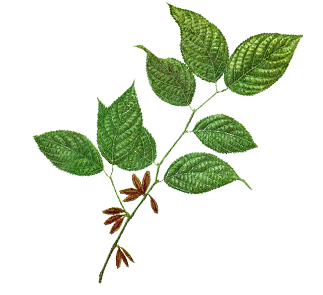 There is much evidence to support its use in preventing bone loss and fat loss, reducing blood pressure and triglycerides, and augmenting steroid signaling.
There is much evidence to support its use in preventing bone loss and fat loss, reducing blood pressure and triglycerides, and augmenting steroid signaling.
Eucommia ulmoides is currently struggling to survive in the wild due to direct impact from human and animal encroachment, but is largely cultivated for its medicinal properties in parts of China, North America, and even Europe.
There is limited research to support the use of Eucommia ulmoides extracts in boosting testosterone and no direct connection has been identified between the two.
In fact, the only research study ever conducted on the same did not reveal conclusive results on testosterone impacts, although increased prostate growth was noted.
Eucommia ulmoides is not famously known for any aphrodisiac properties, neither has it been shown to boost testosterone production directly. However, it generally promotes optimal health and longevity, which are related to hormone production and balance.
Longevity definitely includes long-lived testosterone production and optimized body functions that support vitality.
Taking Eucommia ulmoides supplements independently is not expected to boost testosterone levels in any way, but it can drastically improve the performance of other ingredients known to directly impact testosterone production.
More research is needed to determine the effectiveness of this supplement in optimizing testosterone production and availability.
Currently, it is only added in formulas to improve their effectiveness and vitality and to strengthen the general immune system of the body.
34. Rubus Coreanus
Rubus coreanus is a popular shrub native to Korea, but also available in most parts of Asia. It is a cousin to the infamous raspberry and has recently been linked with incredible testosterone boosting ability.
However, the plant has been used for several years by the Koreans to treat issue of impotence and infertility. In this practice, only the green unripe fruits were used. The ripe fruits of Rubus coreanus are used in making jams, wine, and cookies, among other sweets.
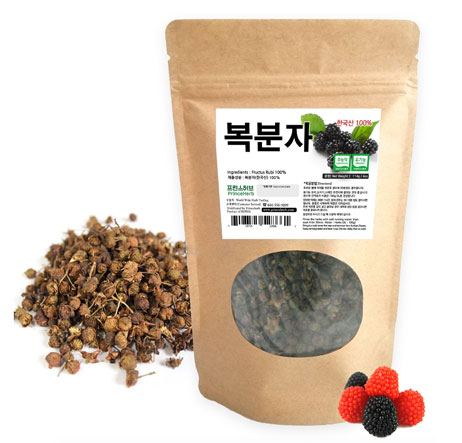 The green unripe fruits of this plant are often fermented with baker’s yeast before being used in bodybuilding supplements.
The green unripe fruits of this plant are often fermented with baker’s yeast before being used in bodybuilding supplements.
Recent suggestions that Rubus coreanus can boost testosterone levels sprung up after one research study conducted at the Chungbuk University (Korea) drew stunning results.
Male mice were given fermented extracts from Rubus coreanus for a period of two weeks only and their testosterone levels soared by an unexpected 750%.
Although these tests were obtained on mice rather than humans, a connection between Rubus coreanus and testosterone increase is difficult to ignore considering the fruit has been used to address libido and infertility issues for ages.
Researchers have pointed to the anthocyanins and bioactive ingredients found in the unripe fruits as the main compounds that contribute to improved sexual performance and libido.
The test studies also indicated increased spermatogenesis and improved sperm motility, although there was no change in testicle size.
Although the same results were not repeated when human subjects were used, the berry sources, fermentation procedure, and dosages were all different. More research is needed to determine the general effectiveness of Rubus coreanus on testosterone increase.
Fortunately, the berries from this plant are deemed safe and are used in the production of various food products. They are also edible raw and ripe.
35. Dactylorhiza Hatagirea
Of the family Orchidaceae, Dactylorhiza hatagirea is the most popular, mainly for its numerous medical uses exhibited by traditional practices.
Herbal extracts from Dactylorhiza hatagirea roots have been used to cure diarrhea, dysentery, coughs, chronic fevers, stomachache, and general weakness.
It has also been used to speed up the healing of wounds, cuts, fractures, and burns. In traditional medical practices, Dactylorhiza hatagirea extracts were highly recommended as aphrodisiacs and was believed to boost male virility, sexual drive, and performance.
This led researchers to study its impact on testosterone production and overall male sexuality.
In one particular study conducted on male rats, 200mg/kg of Dactylorhiza hatagirea extract was administered for 28 days. When the rats were tested, their testosterone levels rose from 2.33ng/ml to 9.05ng/ml within the same duration.
Sexual parameters such as mount frequency, ejaculation frequency, latency, and intromission also increased, suggesting libido boosting ability. In another study, researchers determined that Dactylorhiza hatagirea resulted in a 30% boost in sperm count.
Although there is a lack of sufficient research on the impact of Dactylorhiza hatagirea on testosterone production and availability, the two studies done on rat subjects show much promise.
Different testosterone boosters already include the ingredient as part of natural testosterone nutrients based on its use as an aphrodisiac in traditional medical practice.
However, more research is needed to gauge the effectiveness in terms of spermatogenesis and testosterone boosting capabilities.
Dactylorhiza hatagirea is considered safe and there is no cause for worry if you find it included in your OTC testosterone supplement, but you must take note to review the amount and potency of the ingredient.
It is advisable to use boosters that contain Dactylorhiza hatagirea as part of the nutrients instead of choosing independent supplements that have no other ingredient. The combined effect is usually much better and more promising.
36. Pine Pollen
Pine pollen generally refers to the pollen of pine trees that fall under the pinus genera.
They are sometimes consumed as dietary supplements, but are also heavily linked with testosterone production, improved sexuality, sex drive, libido boost, and treatment of erectile dysfunction.
 Pine pollen has been used for several years to improve male sexuality, and while its impacts are yet to be scientifically proven, its results are quite evident.
Pine pollen has been used for several years to improve male sexuality, and while its impacts are yet to be scientifically proven, its results are quite evident.
These pollens have been studies and found to contain actual male hormones. In fact, it is one of the very few that has the actual testosterone found in human males. The substance found in pine pollen is not a mimetic but the actual hormone seen in human blood.
One variety known as Pinus sylverstis contains about 80ng/g testosterone, 590ng/g of androstenedione, and 110ng/g of epitestosterone. Additionally, pine pollen contains some 22 amino acids, 15 essential vitamins, 100 enzymes, and 30 minerals.
Another aspect that is encouraging is the fact that pine pollen testosterones are not bound to protein and will directly be registered as free testosterone when consumed.
However, ingesting them orally will provide minimal results, especially since these testosterone molecules are sensitive to digestive tract enzymes and acids. Most of them will be destroyed before reaching the blood stream.
It is advisable to use a tincture which has a carrier agent, such as 40% vodka. Tinctures allow the penetration into the bloodstream through mucous membranes in the mouth.
Research studies conducted on humans have indicated an overall increase in testosterone, although the appropriate dosage required is still unknown. It is suggested that incorporating pine pollen into your regular diet will soon boost your testosterone levels.
Those who do not prefer tinctures can opt for pine pollen supplements or formulas that contain it as part of the ingredients. Pine pollen not only boosts testosterone levels but also improves prostate health and has a lot of minerals and vitamins required for optimal health.
It is highly recommendable as part of overall daily supplementation.
37. Saw Palmetto
Saw palmetto, known by its botanical name Serenoa repens, is one of the most common ingredients in modern testosterone boosters and male enhancers.
It is a rare plant that grows in the southern parts of the United States and is associated with various medicinal properties. In fact, saw palmetto has been used in treating enlarged prostate and thinning the prostate lining in patients who suffer benign prostate hyperplasia.
 As boys mature into men, the prostate lining quickly multiplies to make them sexually active. However, the process can continue into adulthood, resulting in thick layers of prostate lining that manifest in an enlarged prostate.
As boys mature into men, the prostate lining quickly multiplies to make them sexually active. However, the process can continue into adulthood, resulting in thick layers of prostate lining that manifest in an enlarged prostate.
Most cases of erectile dysfunction, difficulty in urination, and delayed testosterone release are associated with prostate expansion. Saw palmetto aids the thinning of prostate lining produced, thus minimizing benign hyperplasia.
Saw palmetto is also used in treating male pattern baldness, a condition associated with dropping levels of testosterone. People use saw palmetto simply because it is very effective.
Although researchers are not clear how it works, they seem to rally around its ability to inhibit the conversion of testosterone to DHT.
Human surveys conducted on the effectiveness of saw palmetto supplements in boosting testosterone levels seem to be conclusive.
However, the supplements are associated with various side effects, ranging from stomach upsets to increased bleeding (for those who use blood thinners).
Some have also reported too much libido compared to what is needed, which can be very uncomfortable to deal with in daily life.
Saw palmetto is generally offered for ED patients and works exceptionally well to boost sex drive, erection sustenance, and sexual performance.
These are direct results of increased free testosterone, and it is generally agreed that saw palmetto causes an increase in free testosterone. However, precaution is required, especially with regards to dosage and safety.
Prolonged use of saw palmetto supplements have been shown to cause undesirable side effects. It is therefore advisable to use supplements that contain small amounts of the herbal extract in the formula instead of those that contain only saw palmetto.
38. Vitamin D
Vitamin D is one of the rarest vitamins found foods. It is found in small amounts in mushrooms but exists in large amounts in fatty fish like sardines, mackerel, and salmon.
When exposed to sunlight, however, the body produces more Vitamin D on its own, and this is one sure way to increase the natural amounts of Vitamin D in the bloodstream.
However, prolonged sunlight exposure may increase the risk of developing skin cancer, which is why most people prefer supplementation and dietary acquisition of Vitamin D.
 It is one of the essential vitamins needed for human survival and regulates over 1000 different body functions, ranging from hormone synthesis to absorption of other minerals and vitamins.
It is one of the essential vitamins needed for human survival and regulates over 1000 different body functions, ranging from hormone synthesis to absorption of other minerals and vitamins.
It is involved in growth hormone secretion, fertility, sexual function, and bone development. Vitamin D deficiency leads to various impairments and ailments. With regards to testosterone support, most studies conducted are surveys rather than research.
In one particular case study, men with more Vitamin D were noted to have more testosterone and less SHBG, while those with insufficient Vitamin D had low testosterone in the blood serum.
In another study, it was determined that males who took small amounts (3332 IU per year) of Vitamin D had a 2.25% increase in testosterone. Most studies identify a positive relationship between Vitamin D and testosterone.
In fact, doctors have suggested that low amounts of Vitamin D in older men are directly associated with low testosterone and increased risk of fractures. In one research study, 1360 males were given the optimal range of Vitamin D supplementation.
Some of the subjects were already taking the optimal intake prior to the research, while others were deficient. Those who were taking a lower amount of Vitamin D registered soaring levels of serum testosterone.
However, those already taking recommended amounts of the vitamin did not record any significant improvement. Researchers concluded that Vitamin D is effective for patients with low testosterone and those who have a lower amount of the Vitamin in their bloodstream.
The Best Testosterone Boosting Ingredients Conclusion
Testosterone levels normally start dropping when men hit 25 years old, and the levels only continue to go down. At 45 years old, most men have lost up to half the amount of testosterone they had during their peak years.
Low testosterone has several undesirable effects, ranging from reduced energy, slow muscle development, accumulation of more fats, loss of sexual drive and performance, and decreased virility of male characteristics.
 Other effects include male pattern baldness, growth of breast tissues, and difficulty in losing weight.
Other effects include male pattern baldness, growth of breast tissues, and difficulty in losing weight.
Fortunately, there are natural ways you can go about increasing your testosterone levels without affecting or exposing your reproductive organs to major risks from unnatural chemicals or steroids.
Natural ingredients and herbal extracts from various herbs have been shown to improve both testosterone production and availability in blood.
With the failure of steroid-based commercial testosterone boosters back in 2005, the market opened up to new offers in the sports supplement world. Today, there exists several thousands of testosterone boosters promoted as the ultimate choices in the market.
However, these claims are often untrue and only a few brands can meet their promises. Most boosters have little to no scientific backup or study to prove the listed benefits.
Others are known to result in various negative side effects that include erectile dysfunction and even lower testosterone.
Finding top quality testosterone boosters is a real challenge for patients suffering from low testosterone, and it can be simply overwhelming as most research studies that support the abovementioned ingredients are conducted on animals.
Nonetheless, rodents are known to have reproductive systems that closely resemble humans. When looking for testosterone boosting supplements, it is advisable to review the label ingredients and amounts.
More importantly, you should try to find research and case studies on the specific supplement. It is also recommended to choose formulas that contain several different ingredients and extracts.
This is a more reasonable approach, and is much better than purchasing a supplement for each ingredient provided in this list.
These are natural testosterone boosting ingredients, mainly herbal extracts from plants and herbs that have been used in traditional and modern medical practices to boost male sexuality, libido, strength, stamina, and testosterone.
Before using any of the supplements, you should consult your doctor, especially if you are under other medications or have an underlying medical condition that can be worsened by taking certain ingredients.
Always be careful of the dosage you are taking for each ingredient you choose to use. Even natural herbs and ingredients that are safe when taken in the correct dosages can have very dangerous side effects if not taken correctly.
Many of the ingredients on this list fall under this category, and can be very unhealthy if they are not taken correctly.
Don’t simply trust that a product is safe and has included the correct dosages, as many companies are not reputable in the amounts or combinations of ingredients they use. Always do your own research for correct dosage and use of an ingredient.
Make sure you look through previous and current customer reviews of a given product before purchasing it. The feedback of others just like you who have already tried the supplement is the best tool that you have in determining its safety and effectiveness.
Overall, natural ingredients are highly recommended as they feature minimal side effects, especially when consumed as food. Supplements may contain binders and additives to improve shelf life or fast-action, which is why it is important to review them.






